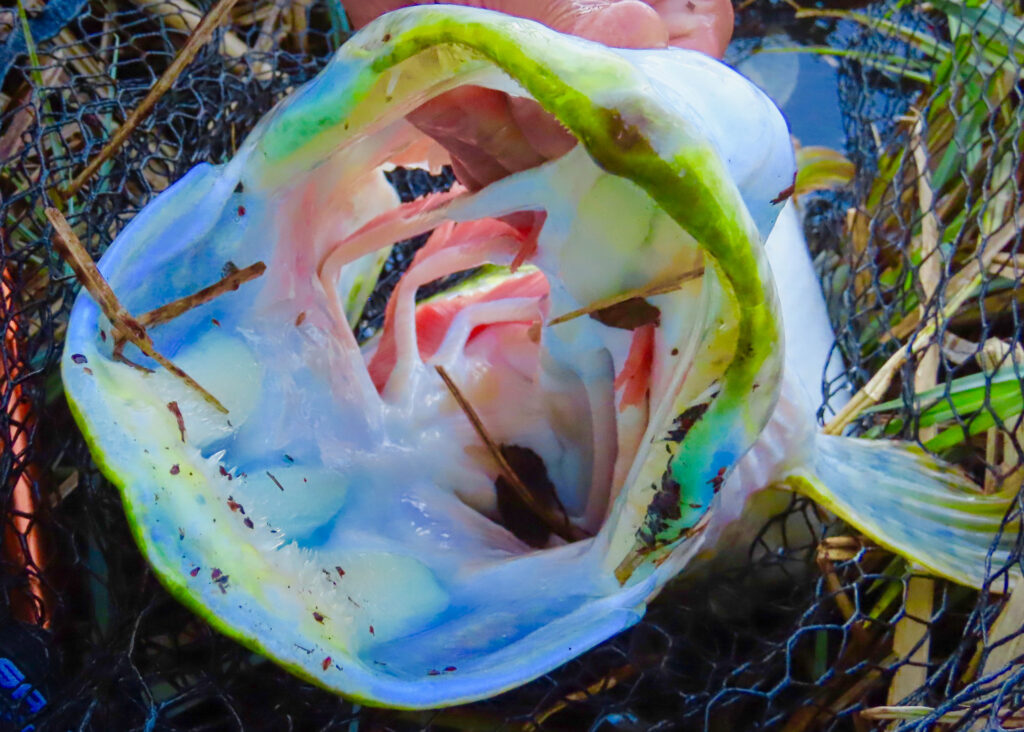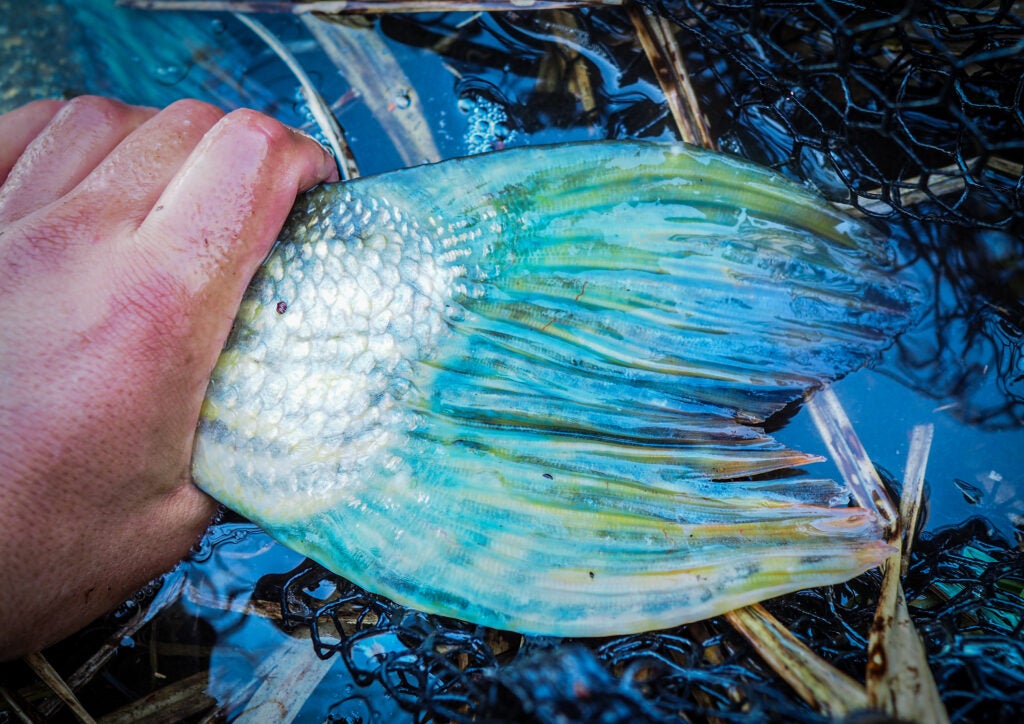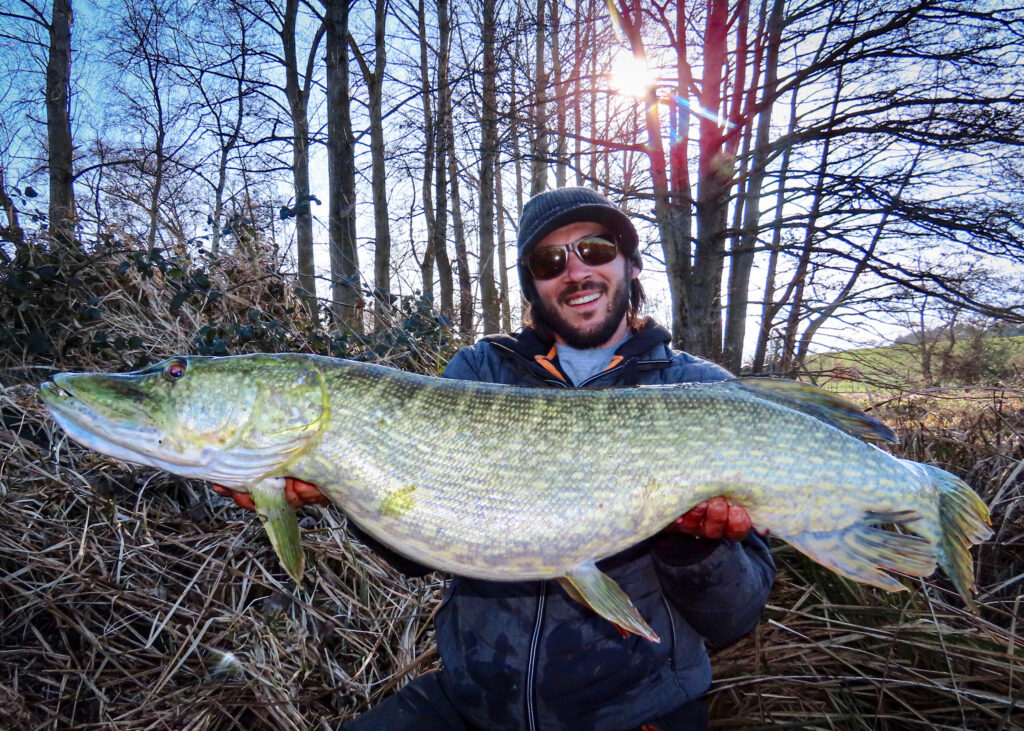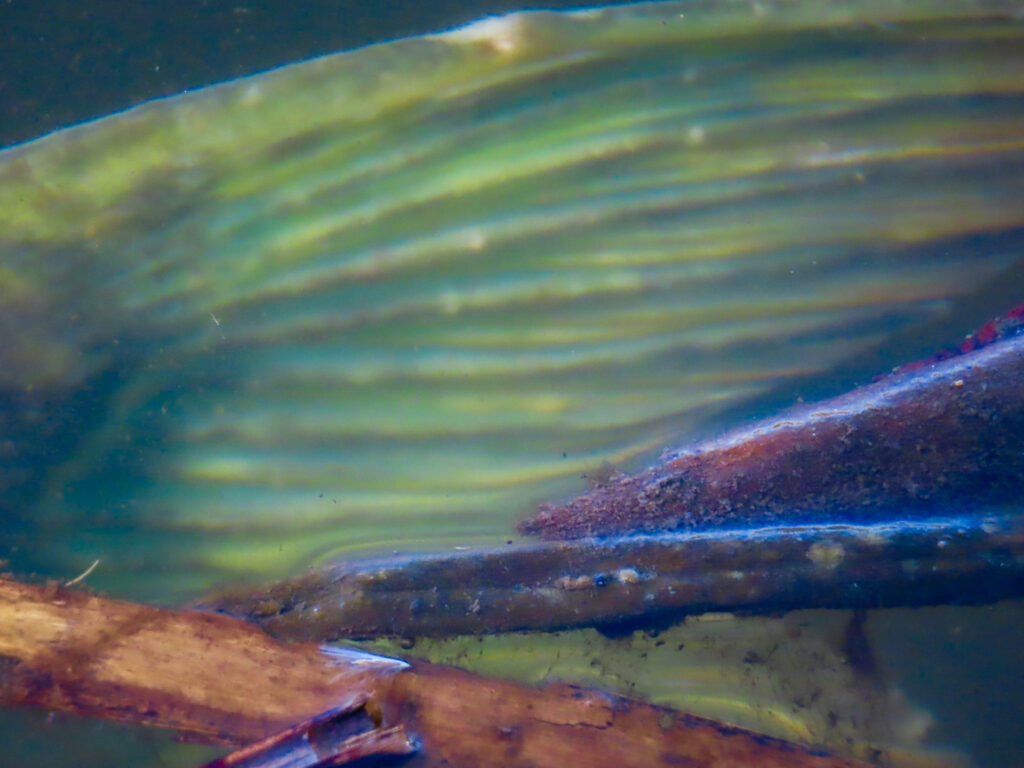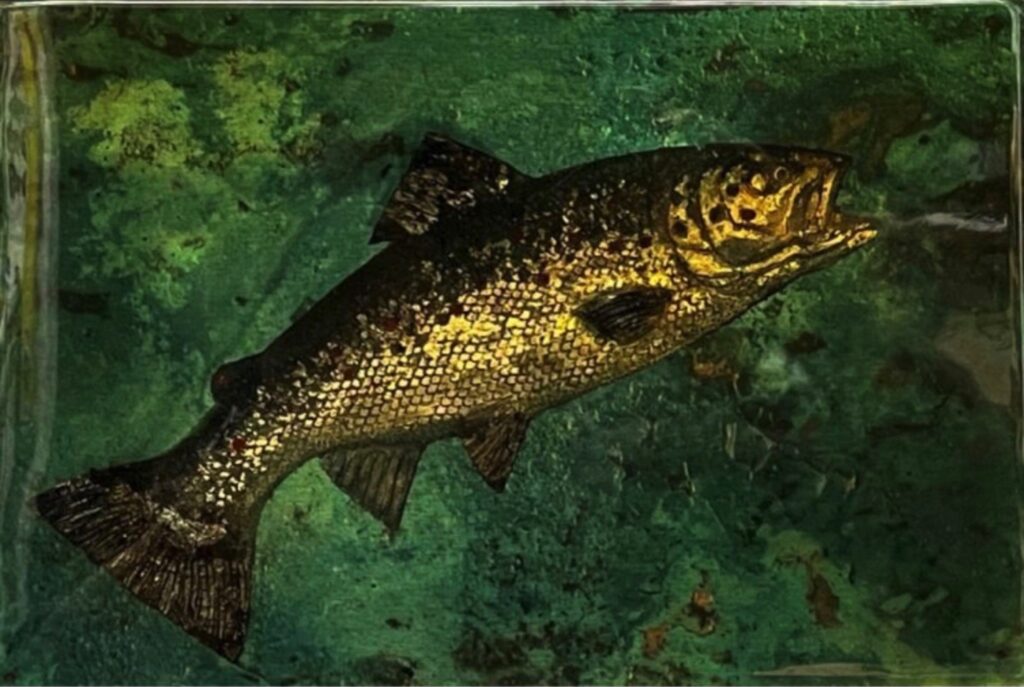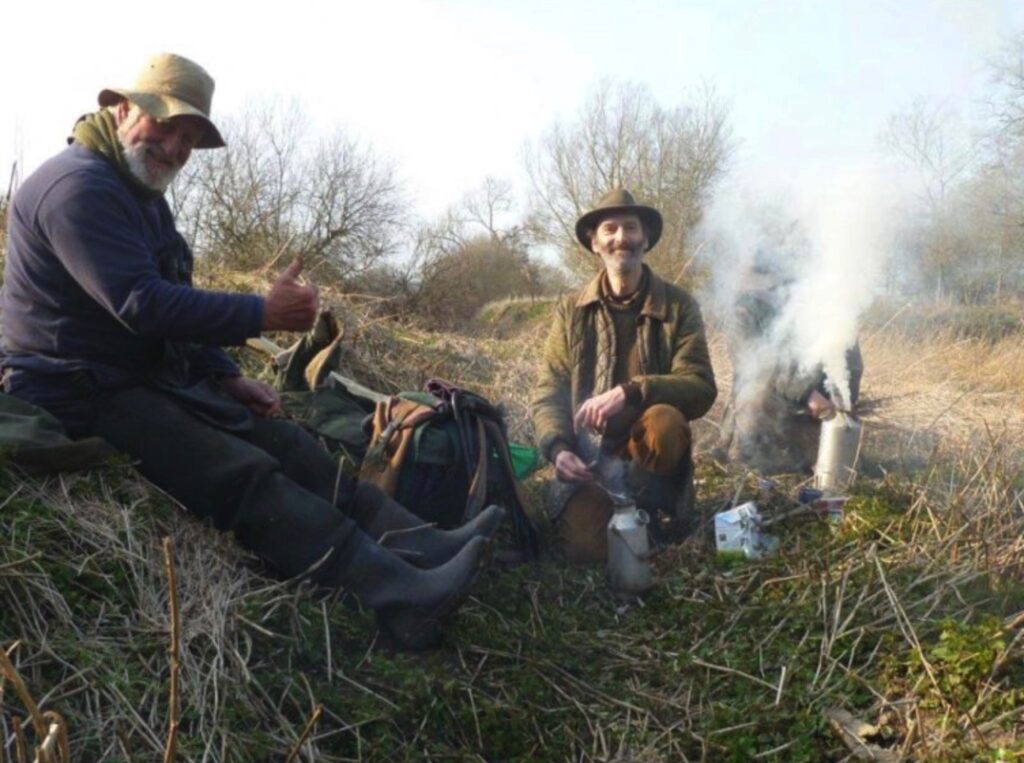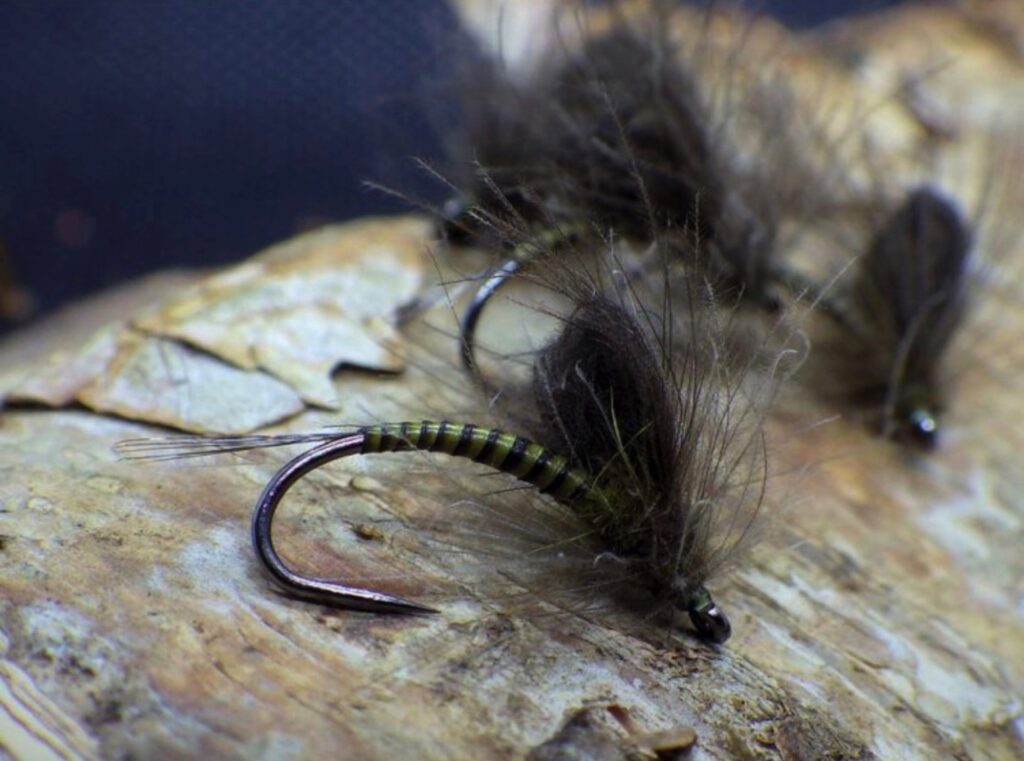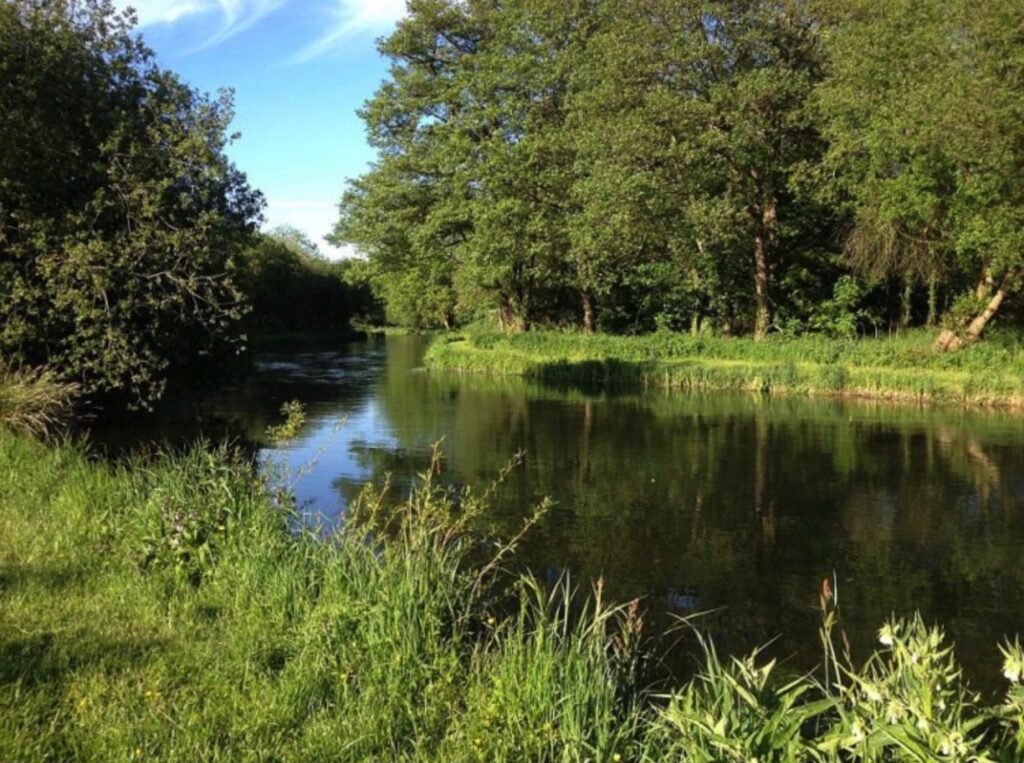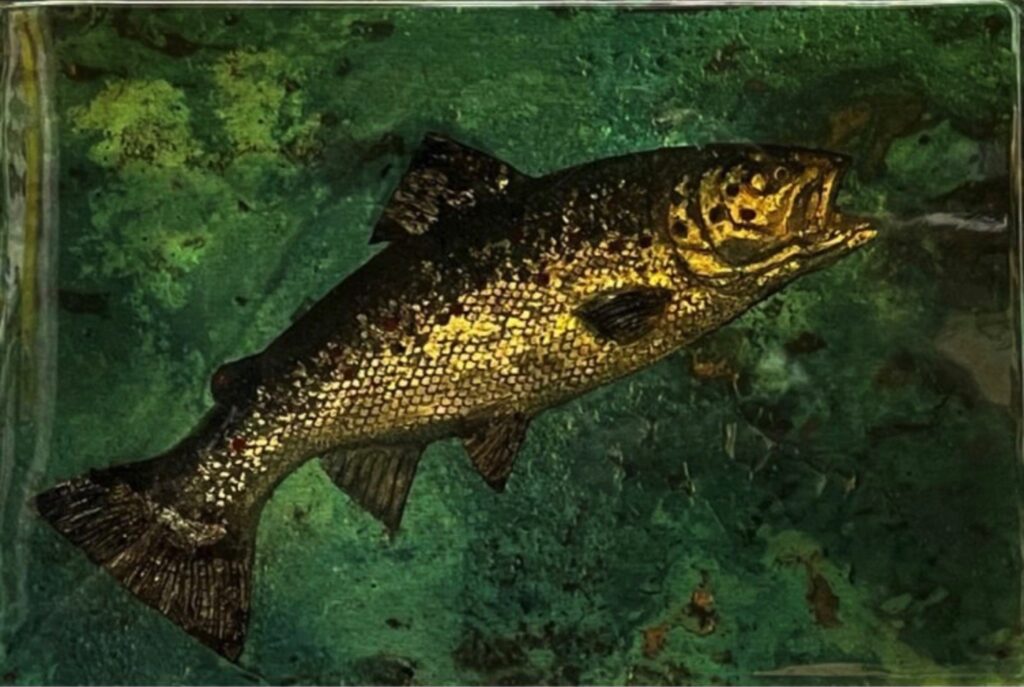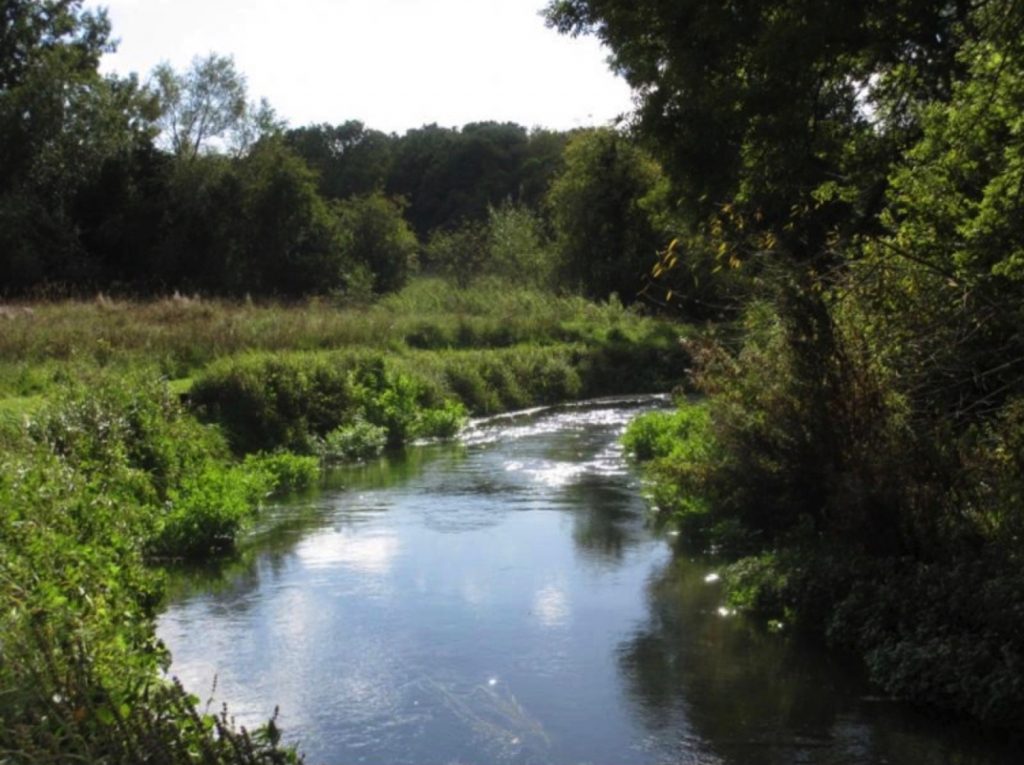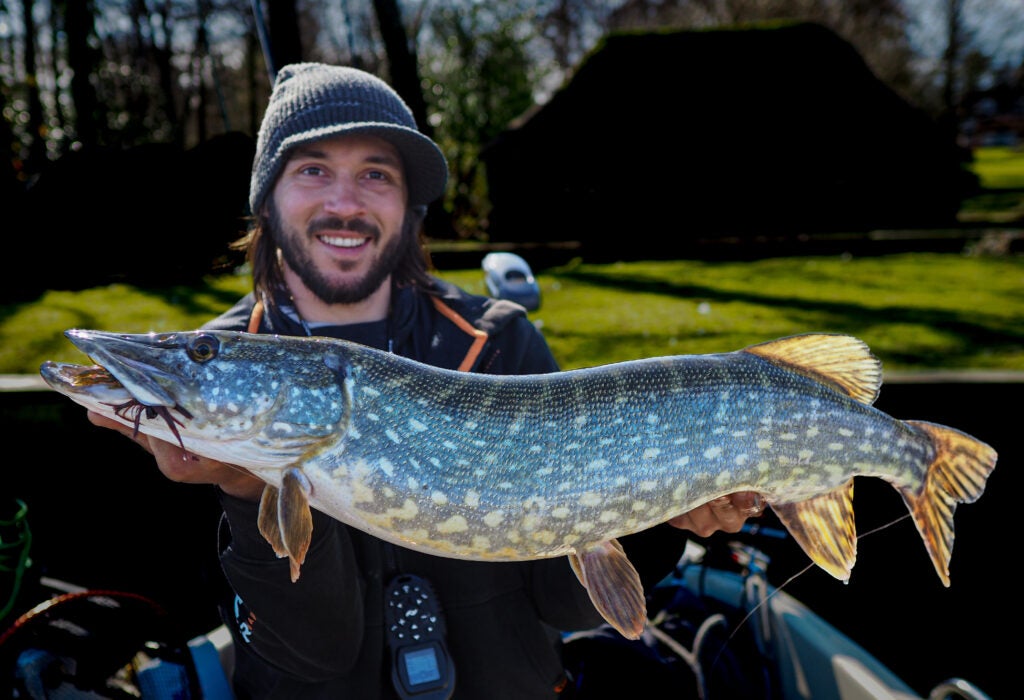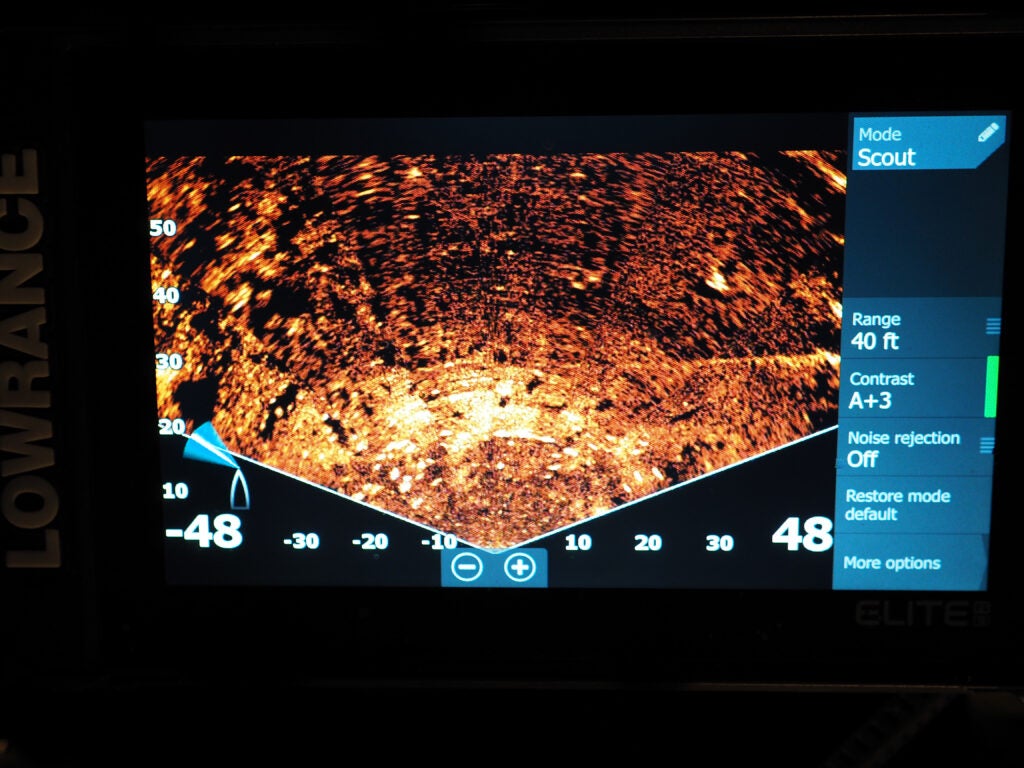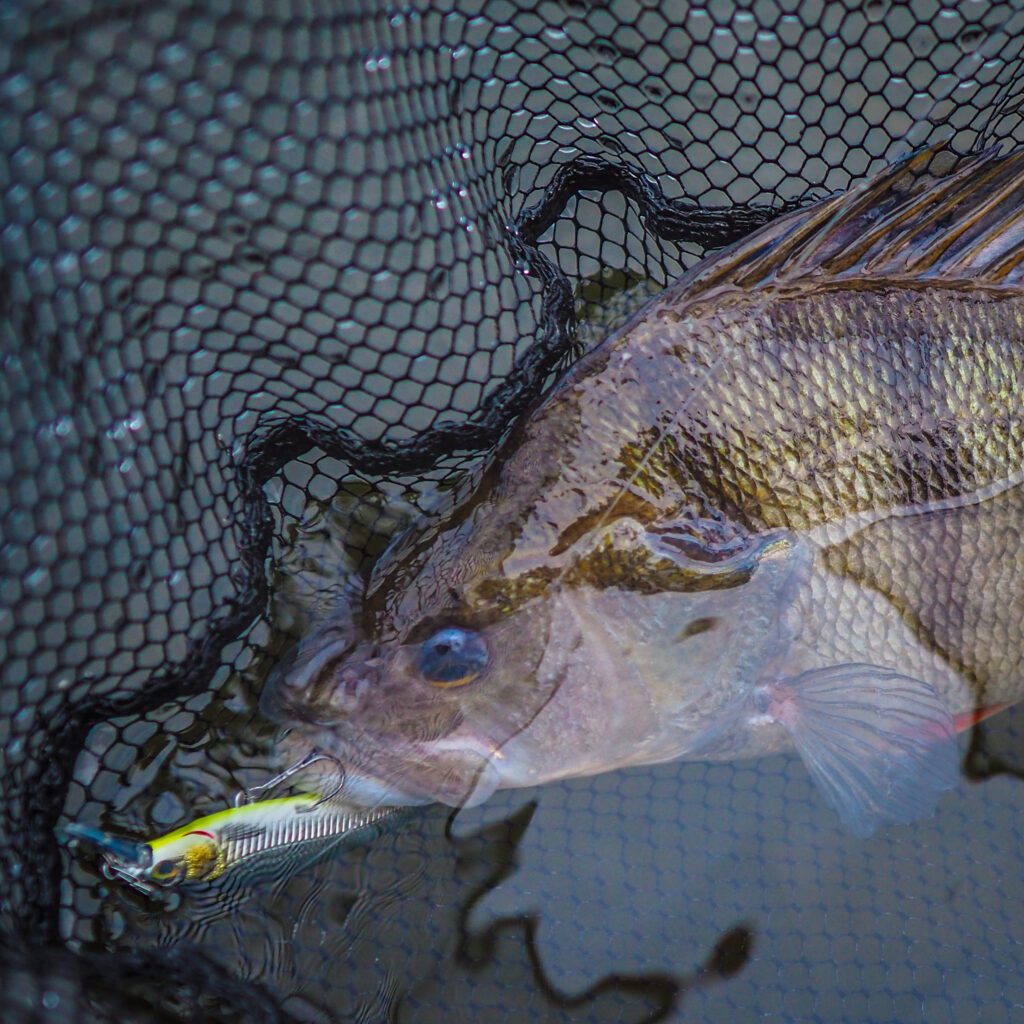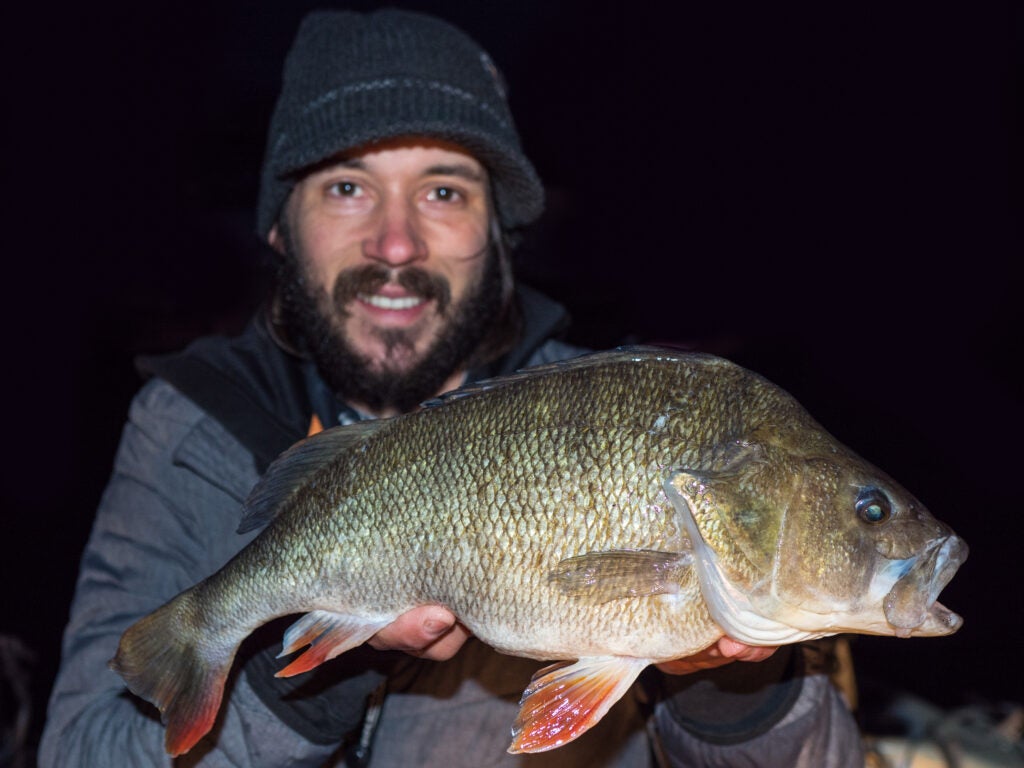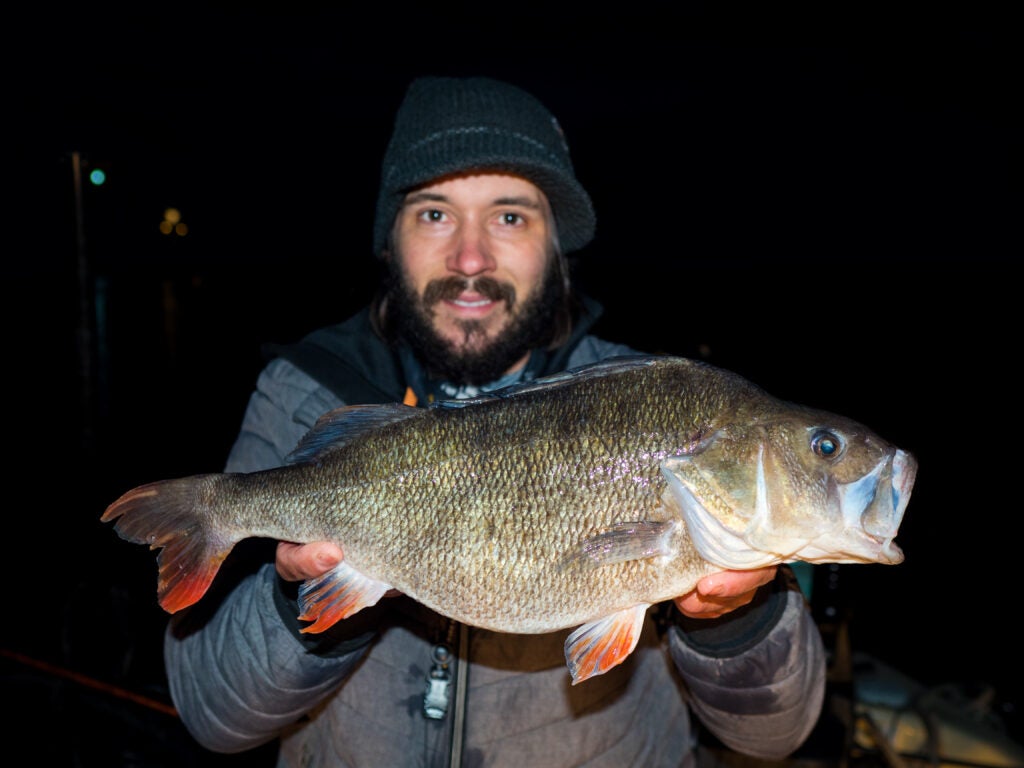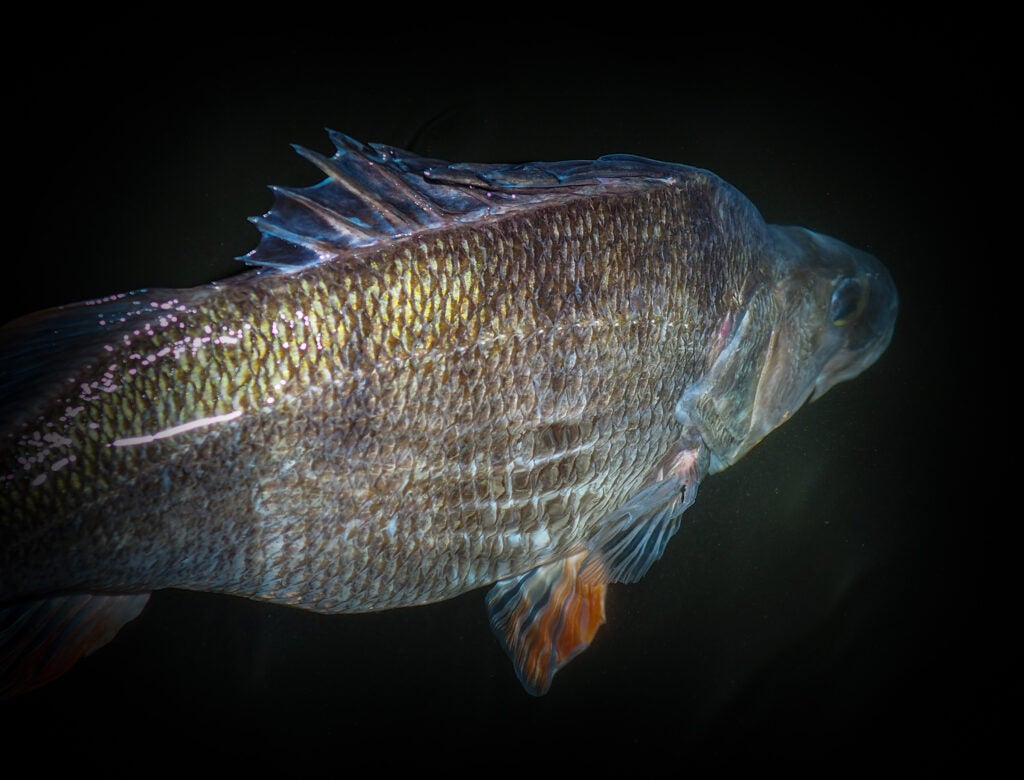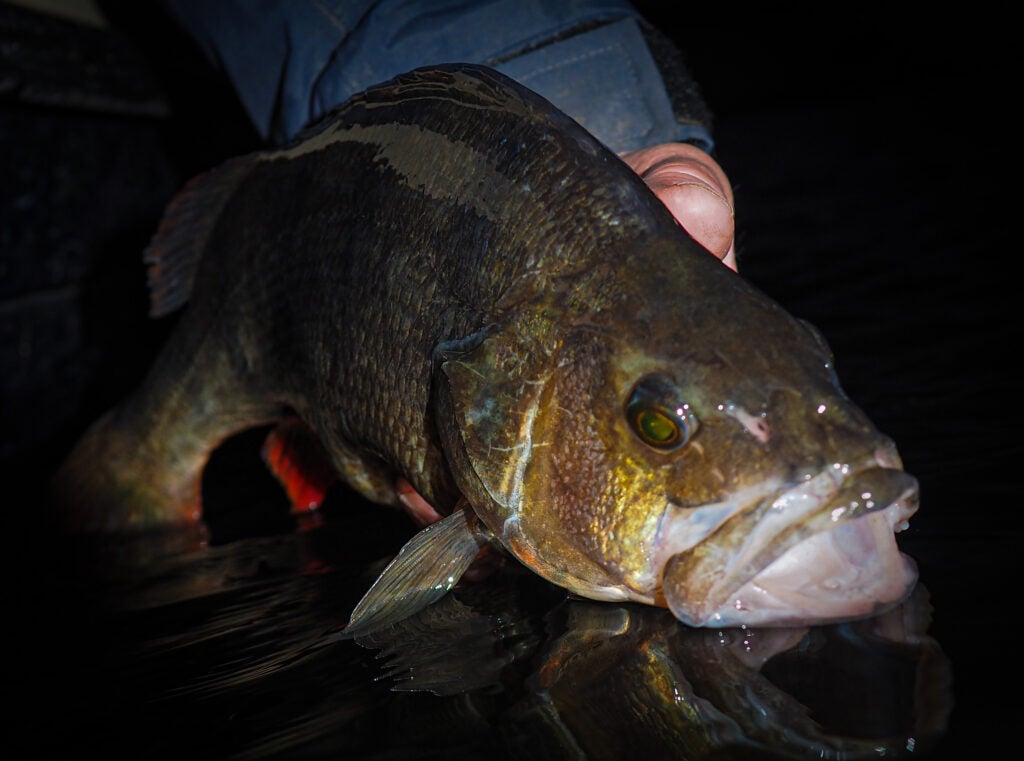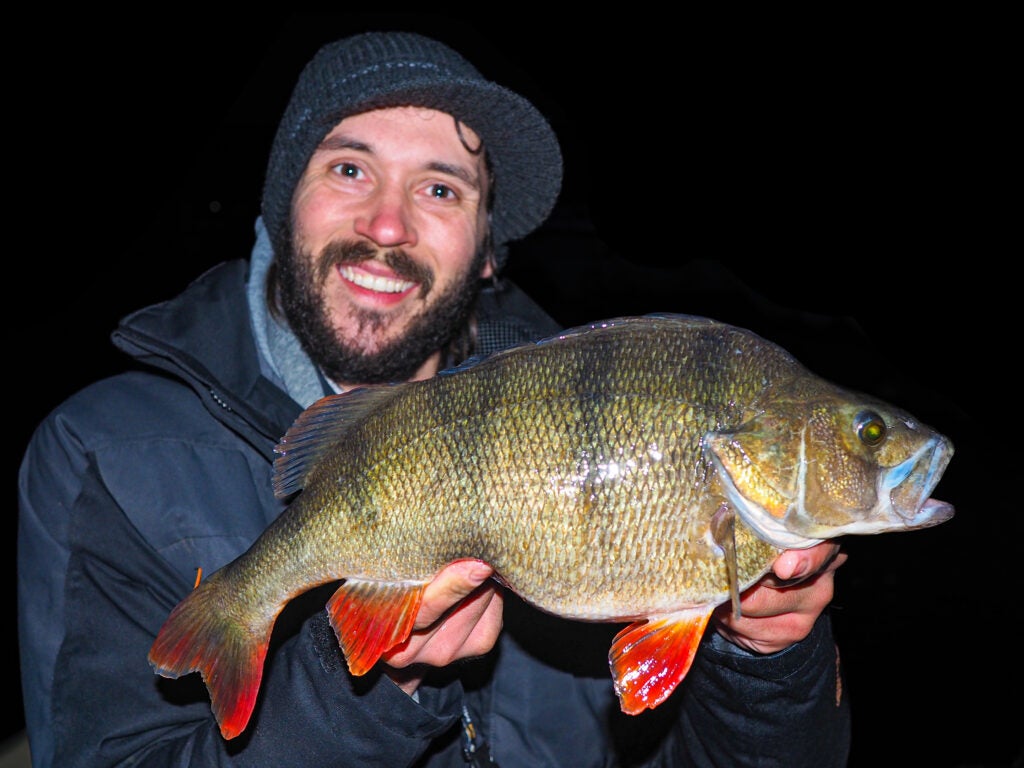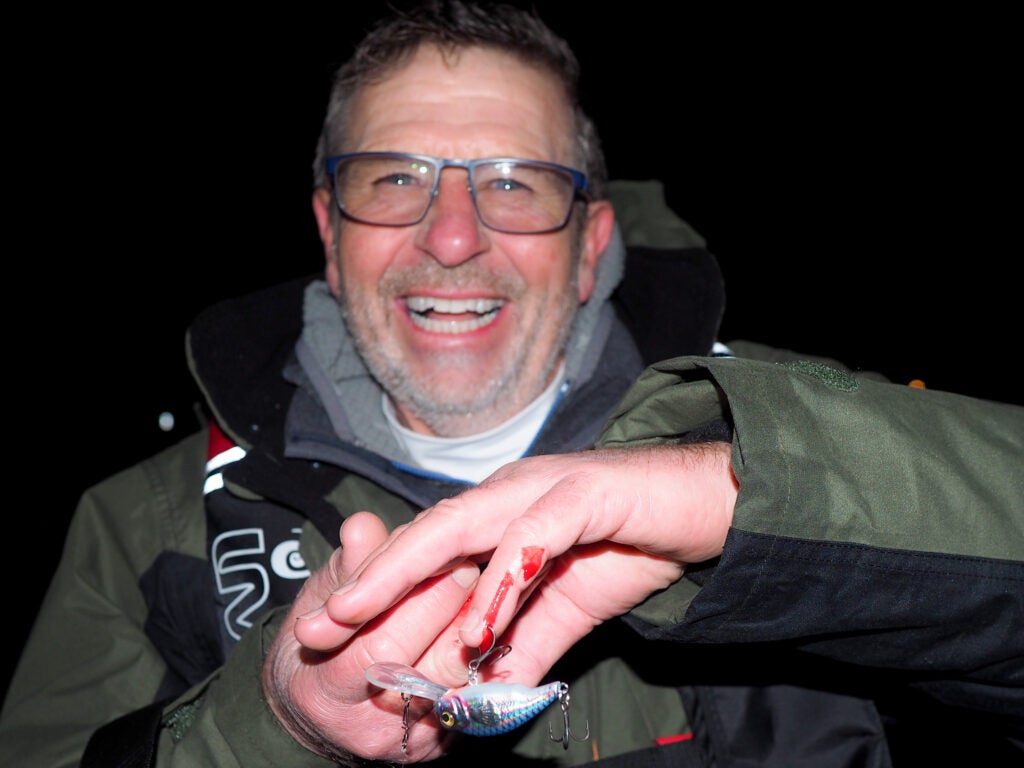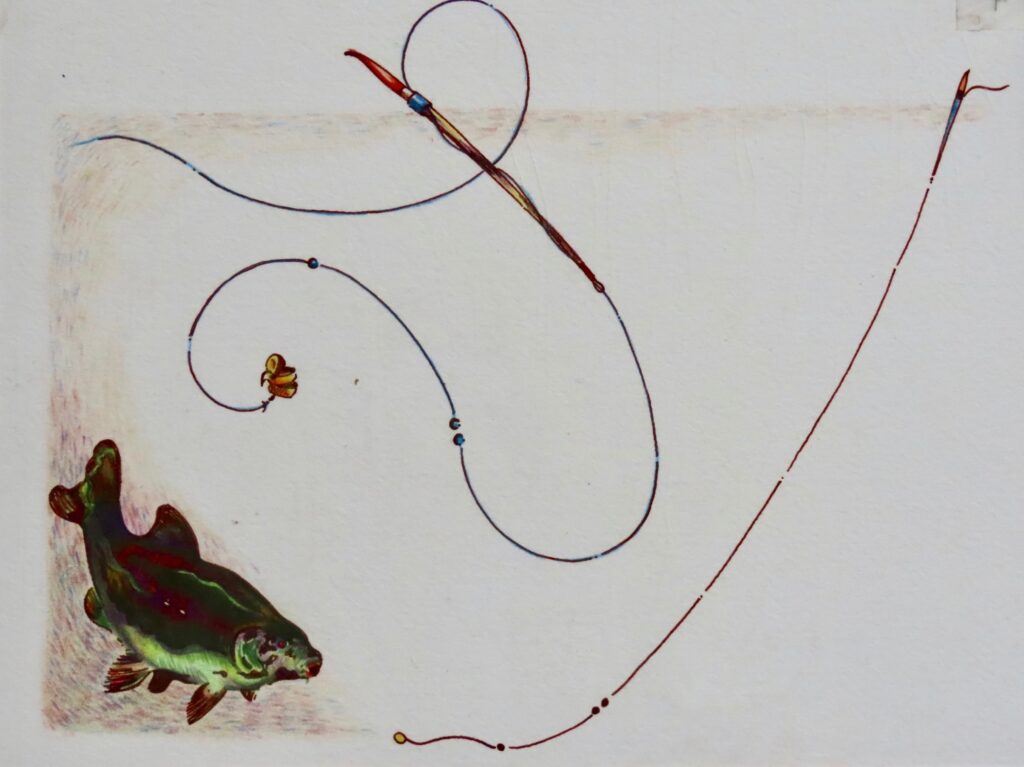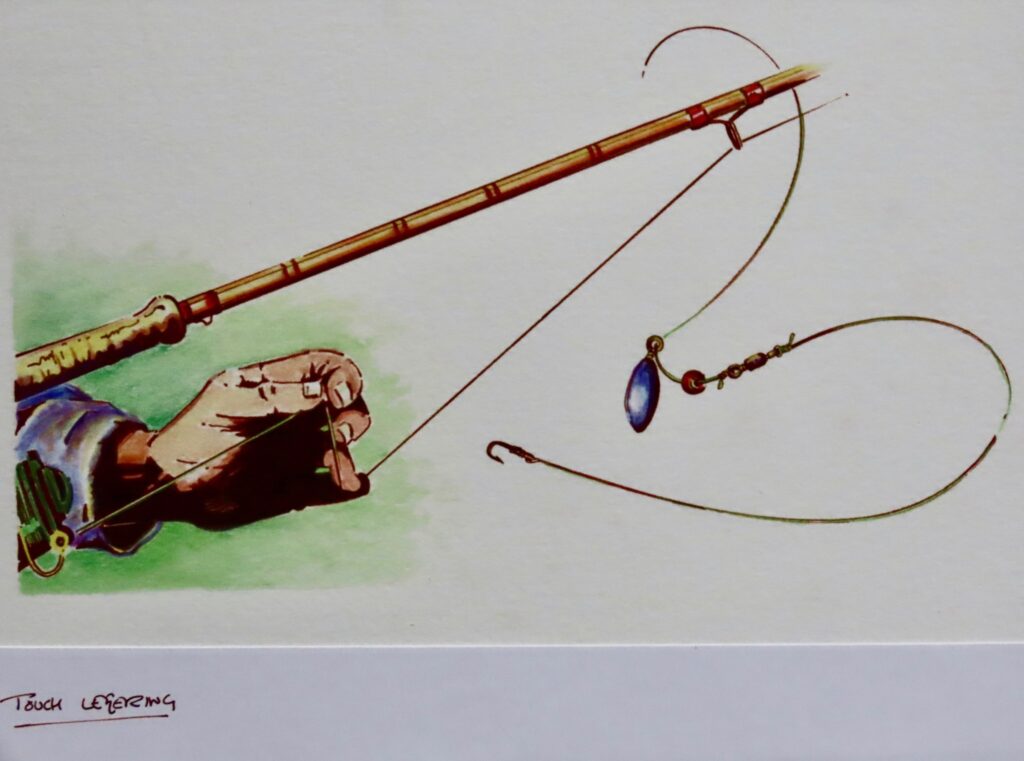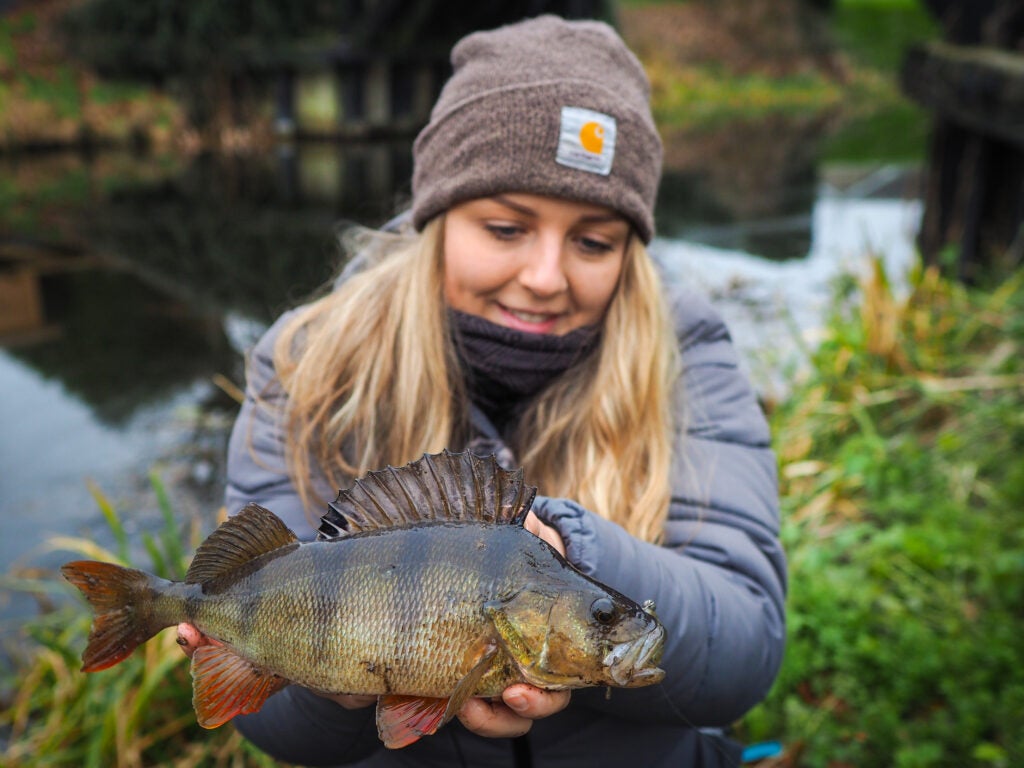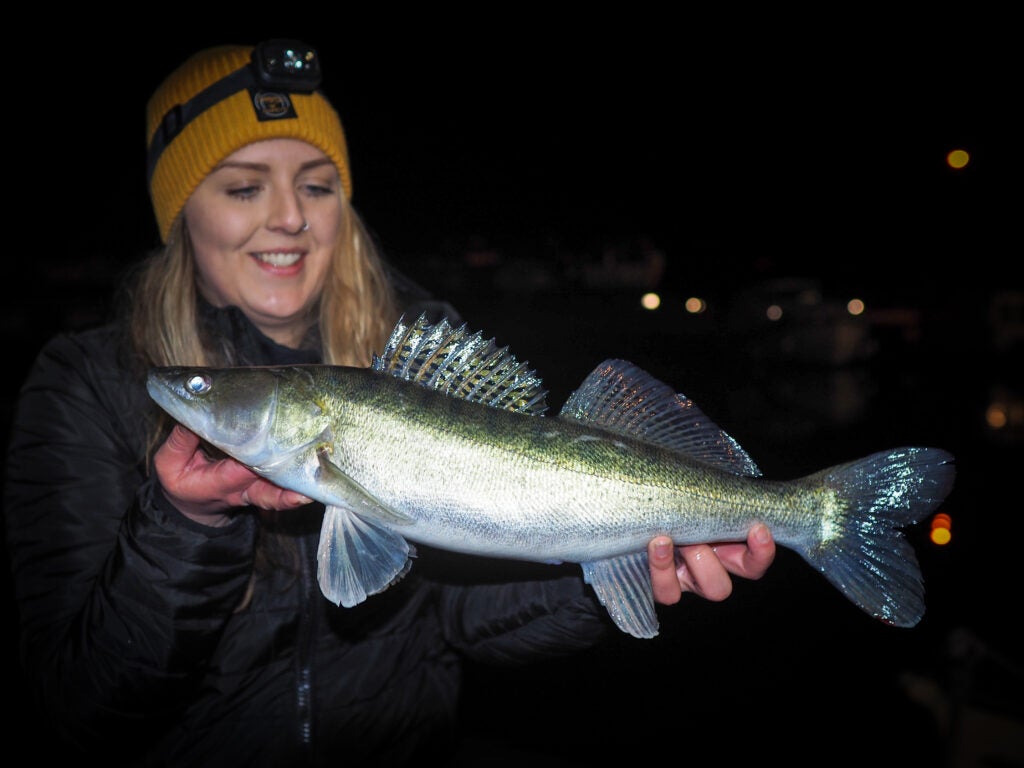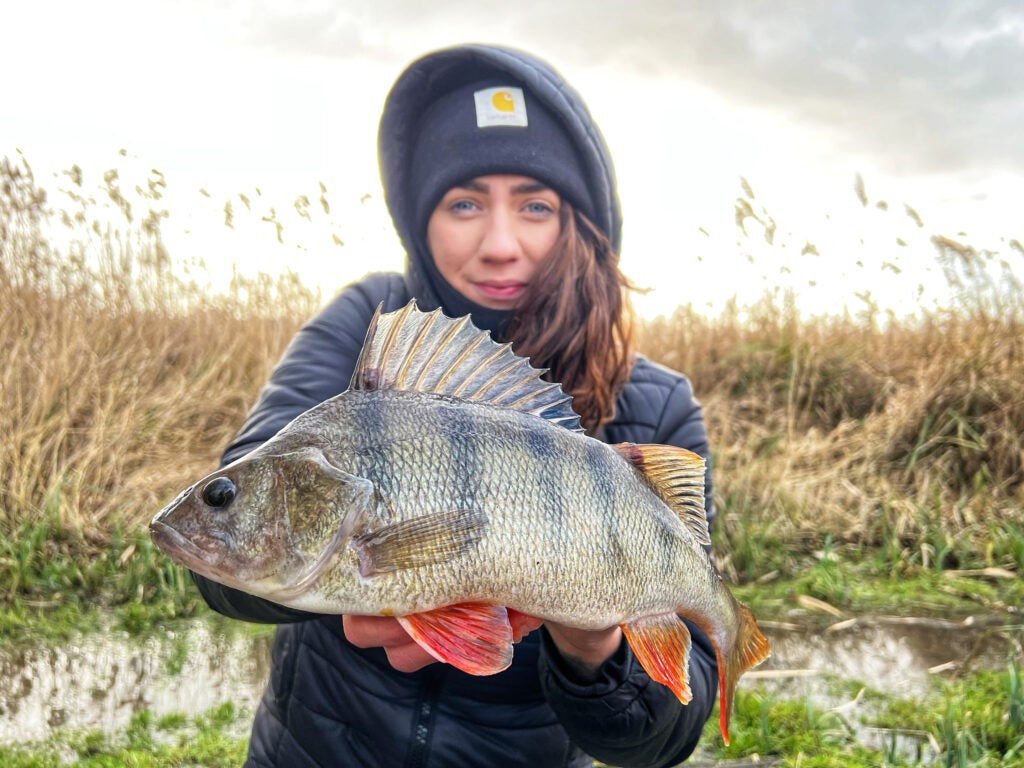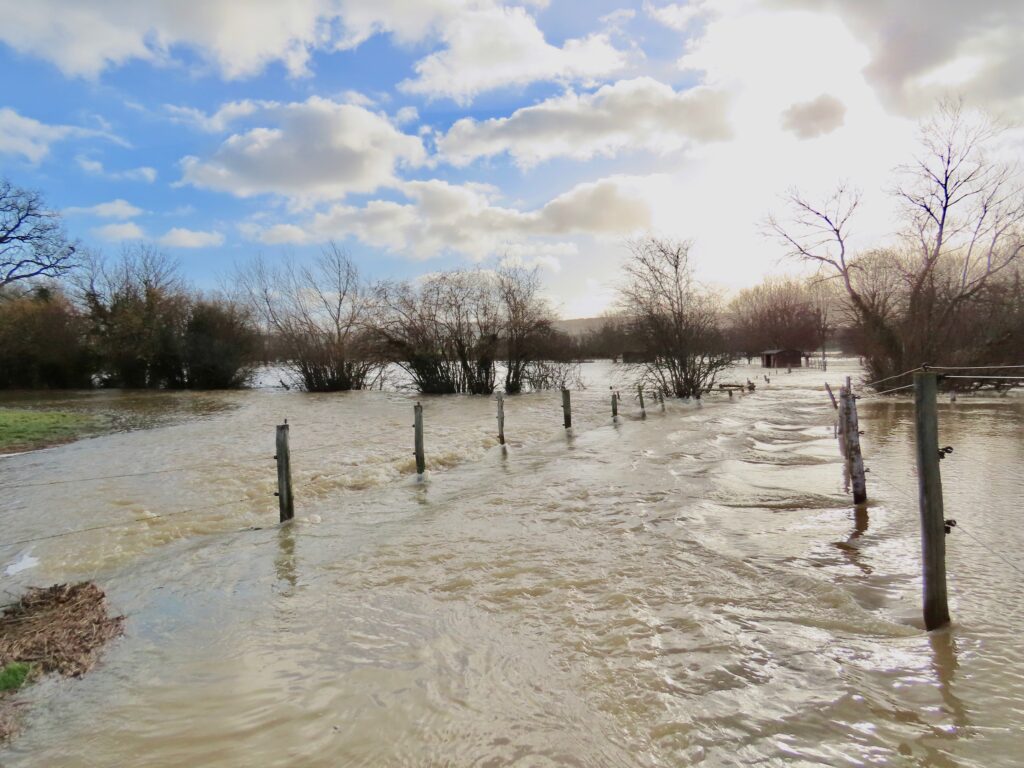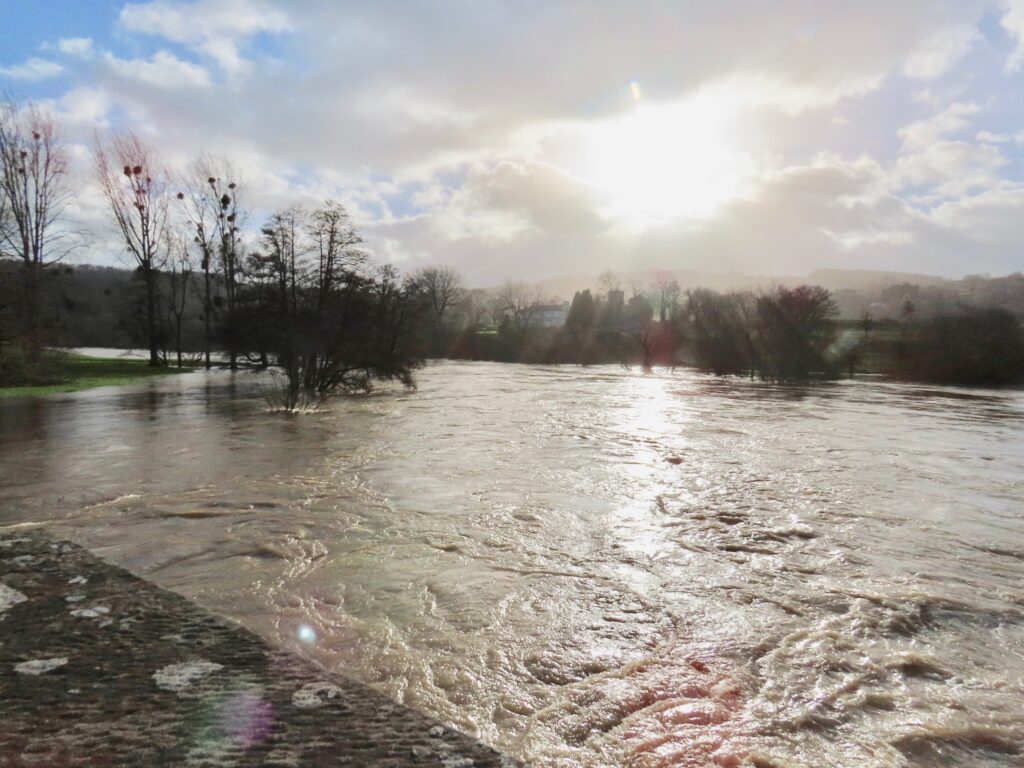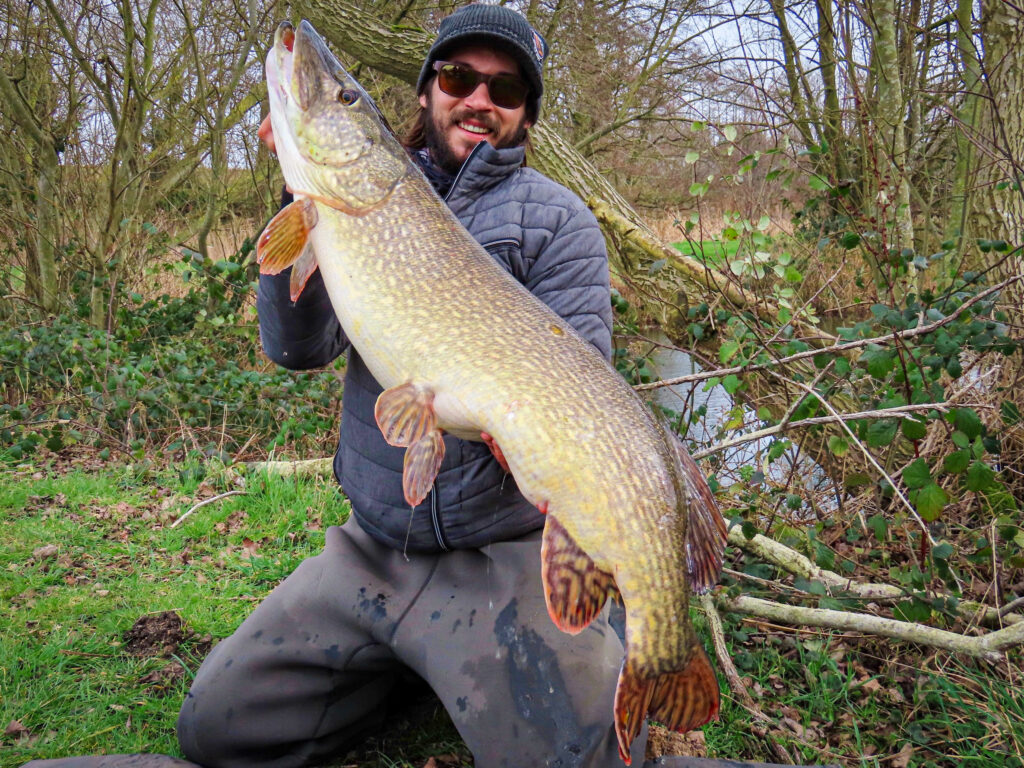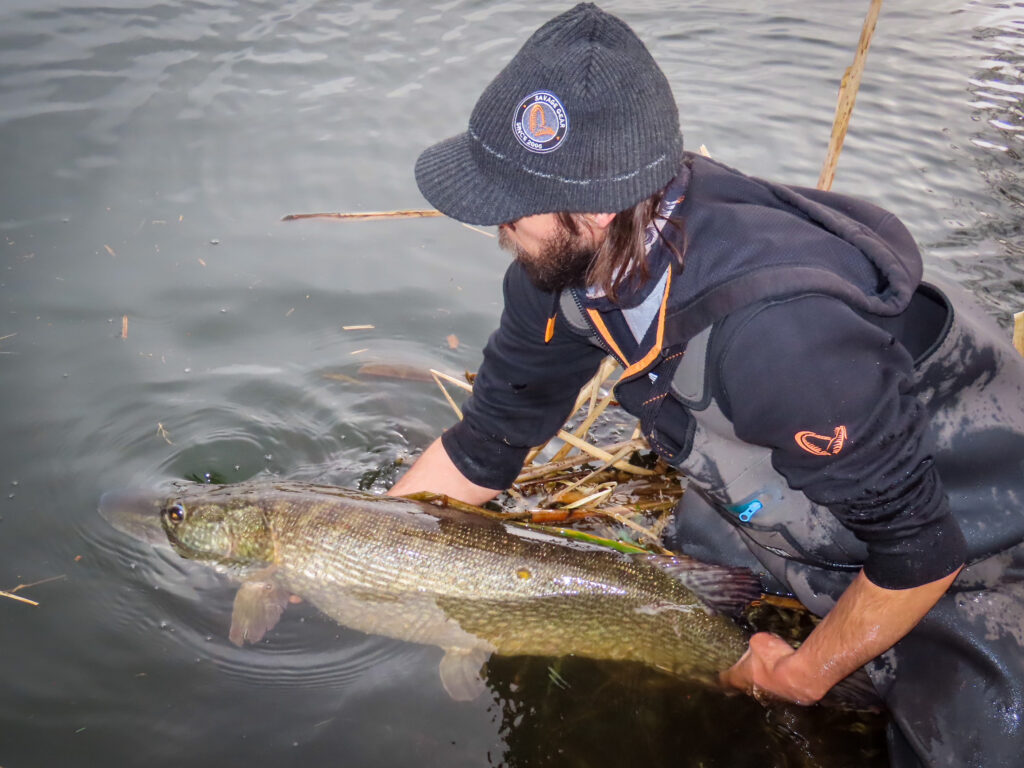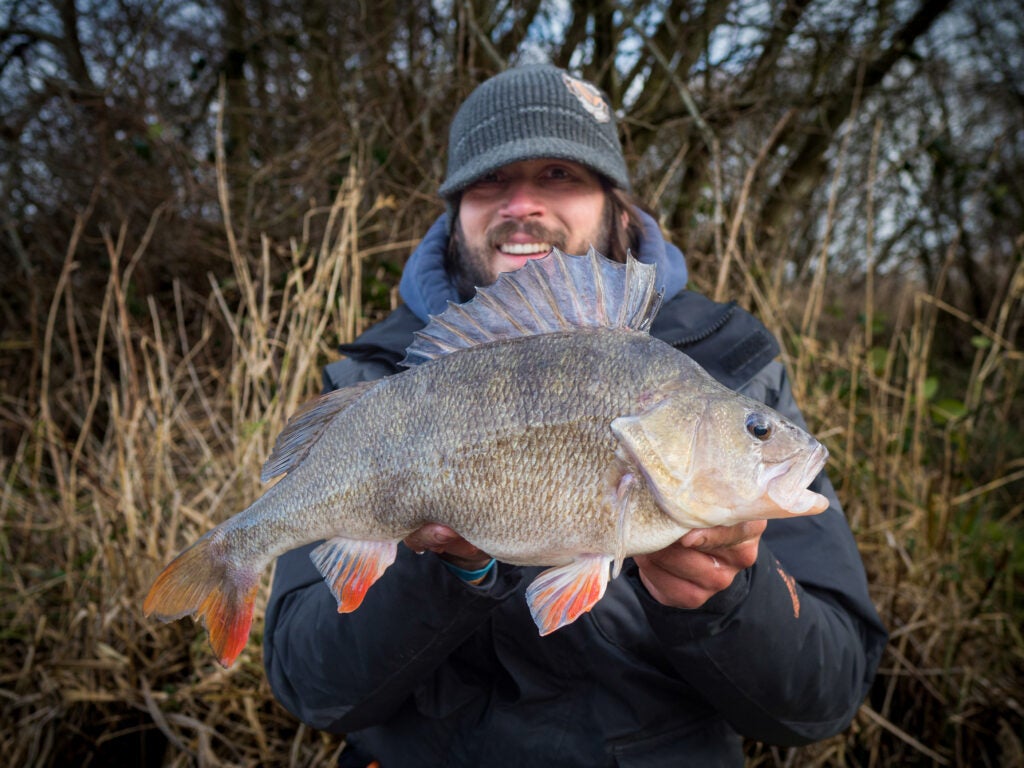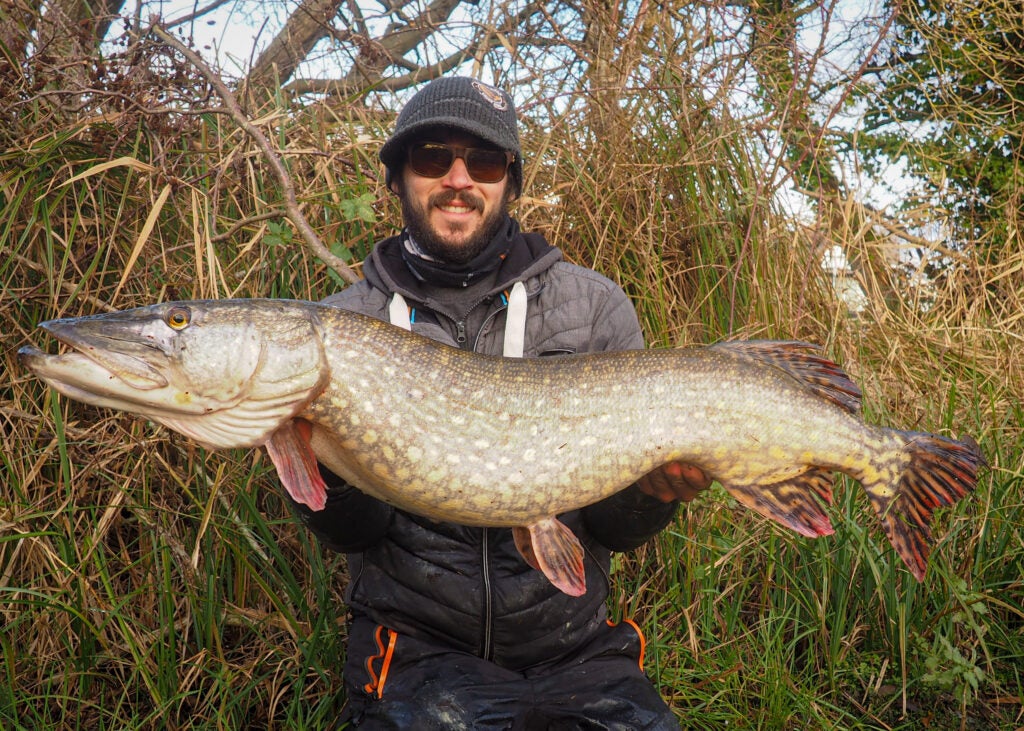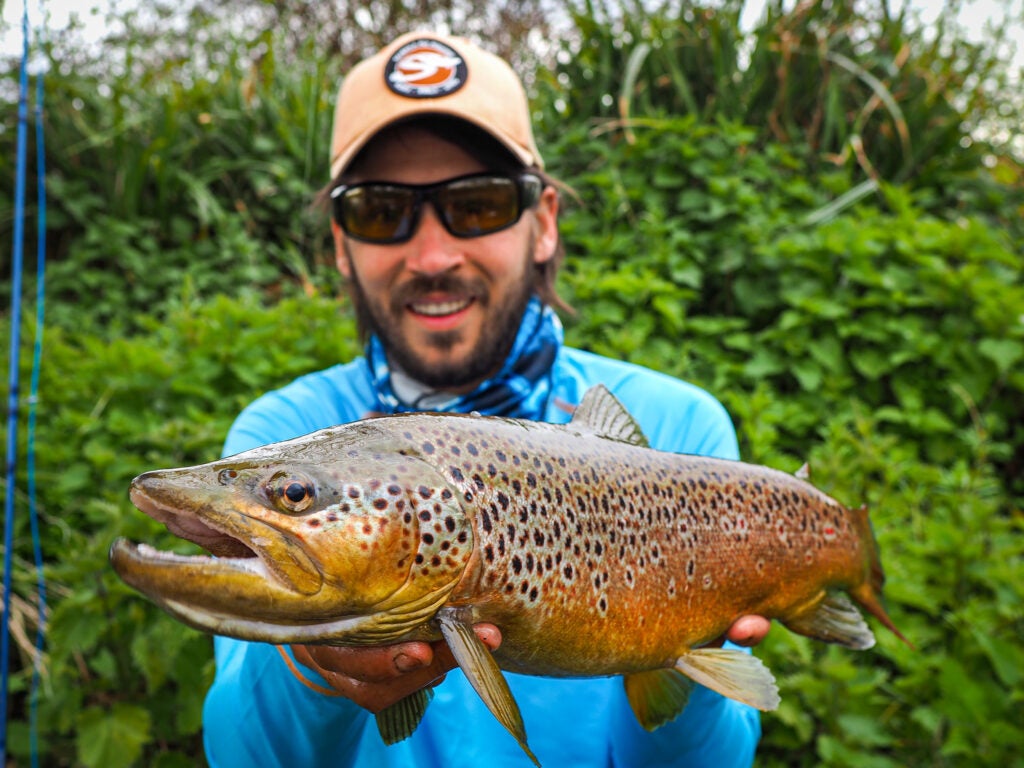Feature Finding 30 Mar 2022 11:46 PM (3 years ago)
GOOD TIMING
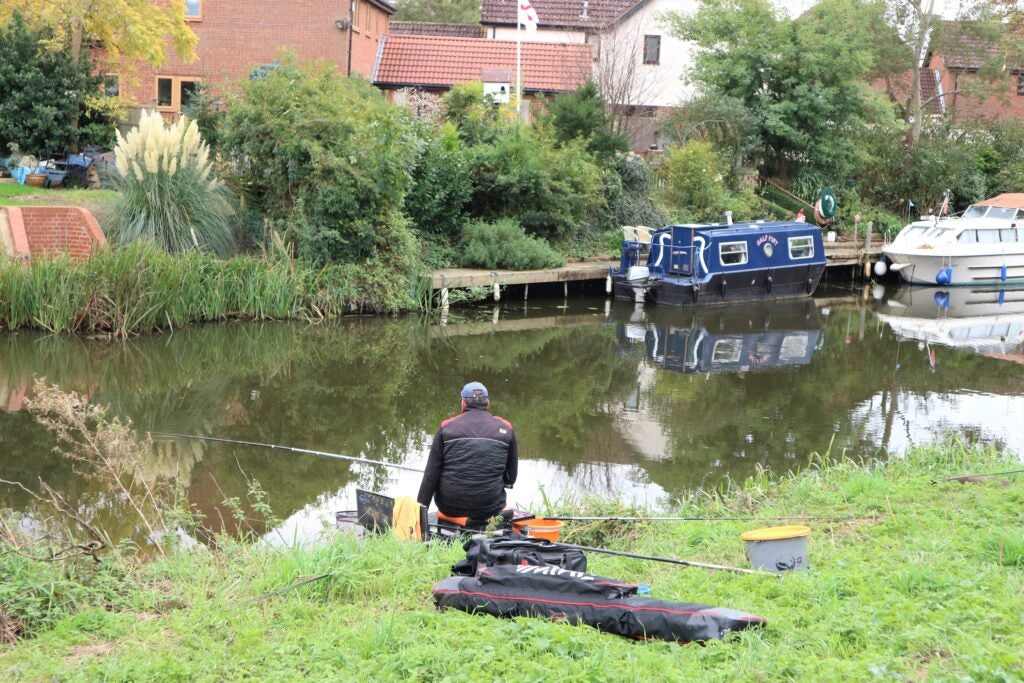
Many years of match fishing, where I had to make the best of whatever peg came out of the draw bag, taught me a lot about places fish inhabit. There were of course obvious hotspots, but just as many swims had far more subtle reasons for being good, which would have been easy to miss unless forced to park my gear in them. On some venues, whole sections became exceptionally prolific at certain times of the year, quickly turning into lost causes during quiet periods in between. Famous beats of the Old River Nene can be like this, where built-up areas with landing stages and moored boats get massive injections of new fish throughout the winter. The same applies to the sheltered part of the River Welland at Spalding, pulling fish from far and wide when it gets cold. These migrations don’t always happen to order, but when the huge shoals do turn up, a hectic winter bonanza attracts keen anglers from many miles away.
BUSY PLACES

It’s not just on rivers and drains where fish move about in large numbers; the same can apply to canals. Busy areas in city and town centres tend to attract large shoals, mainly I suspect because potential prey fish feel safer from predators. There is likely to be more grub about too, either discarded fast food, or bread that’s regularly fed to waterfowl. Old industrial locations on urban canals often have wide turning bay areas, along with various offshoots and custom-made moorings. These are all great places for fish to hole up in, out of the main boat channel. It doesn’t matter how busy towpaths in these areas get, because fish become used to all the activity, plus it’s likely to keep the deadly plague of cormorants at bay. Wide bays are normally hotspots for carp, bream, skimmers and quality roach, while overhanging structures can be sanctuaries for most species. Moored craft and landing stages are always good cover to explore.
ARTIFICIAL FEATURES
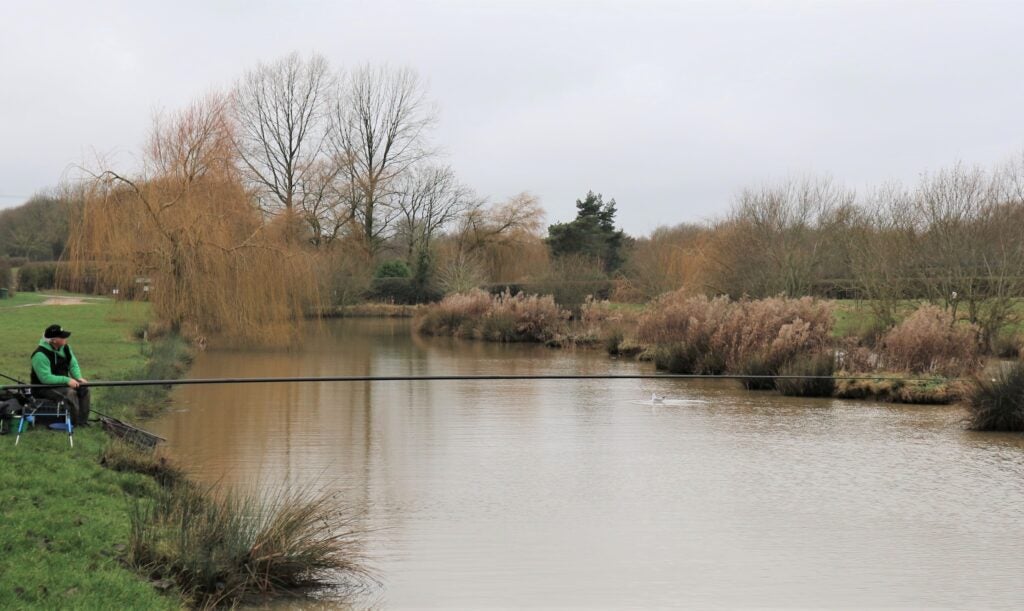
Commercial lakes and snakes often have special built-in features like islands and out-of-bounds far banks, which make great holding spots for lots of different species. It gives the angler something interesting to focus on, certainly better than tackling a barren open water pool. Features also help to create windbreaks, making it a bit less severe when the weather is rough. Snakes are like canals but without all the hassle of boats and bikes, so they have become a popular haven for pole anglers. It’s not all about carp either; quite a few are heavily stocked with mixed species, even chub and barbel. Most of the big weights come to far bank tactics, fishing long poles tight against the reeds and rat holes on the opposite bank. I couldn’t do this regularly, but do enjoy the occasional dabble for the prolific silver fish these places often hold. I’m not into dangling shallow rigs against the far side mud holes, preferring using a bit more finesse closer in.
SMALL POOLS
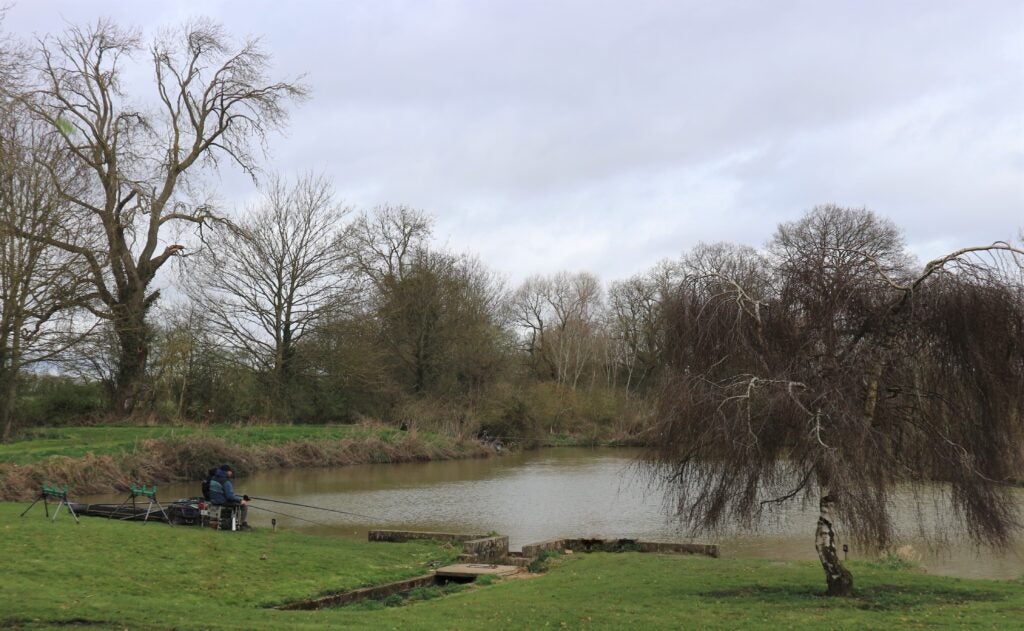
I’ve been fascinated by small stillwaters since I was a kid living in the Far East. There was a Buddhist temple that had a couple of ponds, and the monks there didn’t mind me fishing them, finding my enthusiasm amusing. These places were teeming with exotic species, but became even more interesting when I found a way of enticing bigger catfish. Not massive but great fun. There were lots of open storm drains that connected to some of these pools, so you never knew what might turn up. I even spotted a fair-sized catfish living in a drain that ran outside our house in Singapore. This tropical island had early commercial fisheries too, whole complexes of shallow concrete pools, which were stocked with all sorts of species. You could buy bait, hire tackle and have a great time catching lots of small fish, or target proper monsters. To this day, I can’t pass a small pond without exploring it. This one is near where I currently live and full of fish.
WELL CONNECTED
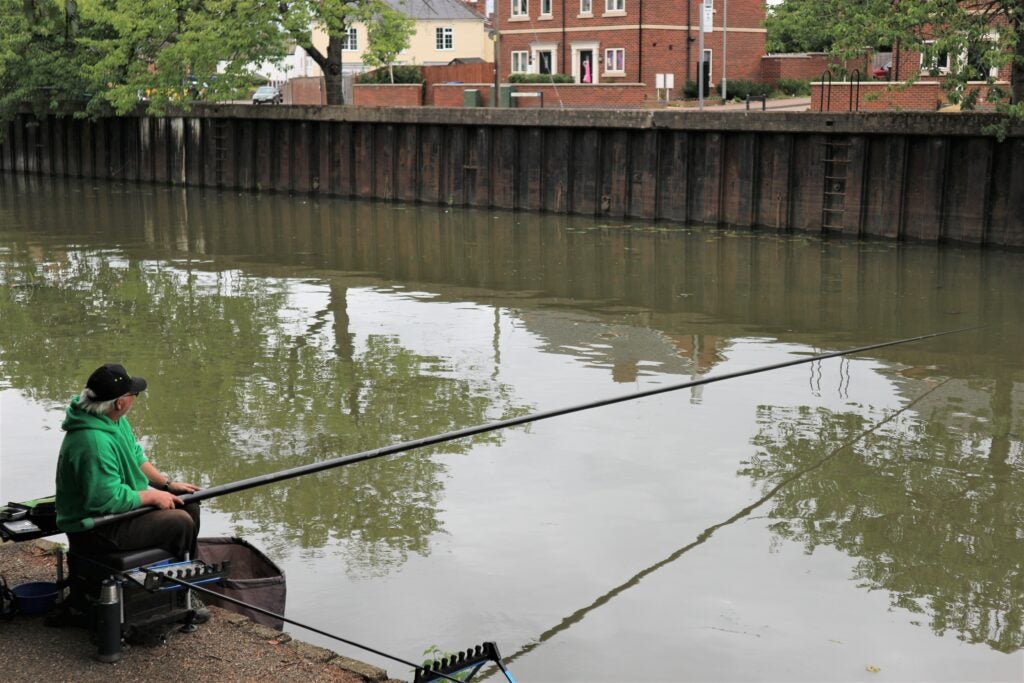
Lincoln’s Fossdyke is the oldest canal in the country, originally built by the Romans, although it looks more like a modern drain these days with its flood prevention embankments and metal piling. Three rivers and various smaller drains are connected to this 11 mile stretch of waterway, so it’s always going to be fascinating regarding what gets in there. I only discovered the venue a couple of years ago, thanks to a local angler tipping me off. Many stretches had been neglected fishing-wise for years, but new blood in the local angling club began to change all that. Heavily overgrown banks on the towpath side were opened up again, revealing pegs that haven’t seen an angler for many years. Interestingly, noted hotspots going back decades, still produce the goods. It’s typical canal fishing with wider areas producing bream, along with far bank havens and inside weedy margins producing lots of mixed species, including big perch and stray tench.
PROLIFIC BAYS
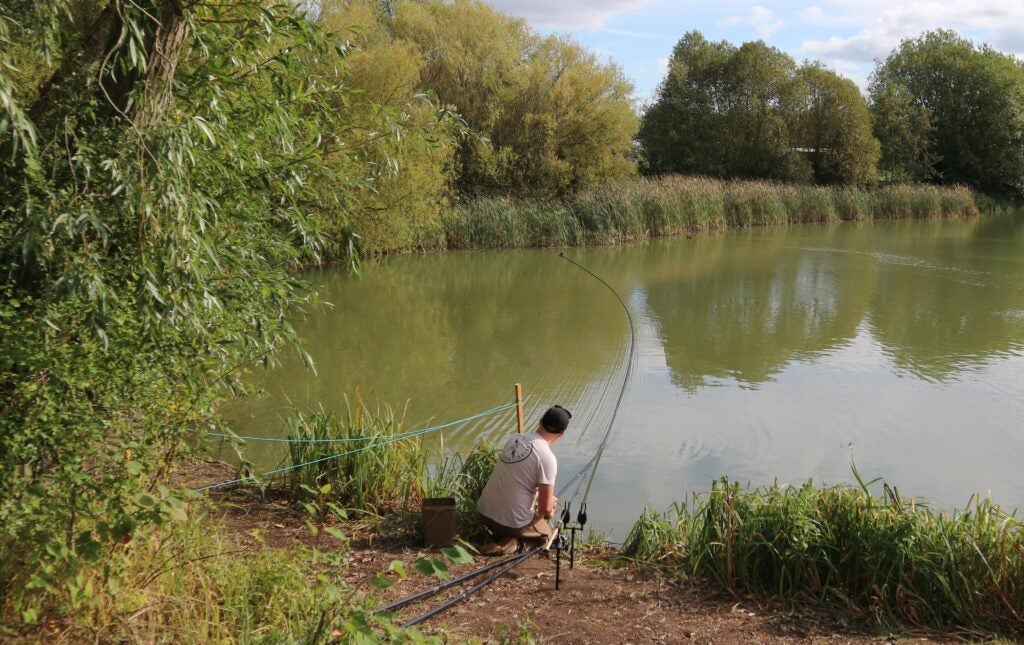
When I started fishing, the textbooks said you needed the wind to be blowing into reed-lined bays. To be fair this does help when a big blow colours the water, but I find these places still produce okay most of the time, even in calm conditions. Some bays, like this one, have deep margins. These are always worth exploring, in this case over to the far bank by a carp angler, using the longest pole and feed cup I’ve ever seen! The nearside will also produce, especially in this instance where the corner has been roped off by the bailiff to create a quiet sanctuary. One major problem you need to look out for in such places is sunken debris on the bottom. Bays that see a prevailing wind blowing into them often have big accumulations of twigs and branches, requiring some careful preliminary work with a plummet to find clear areas. The bigger fish often show better in the margins, hanging back just off where any bottom debris has built up close in.
PEACEFUL CORNERS
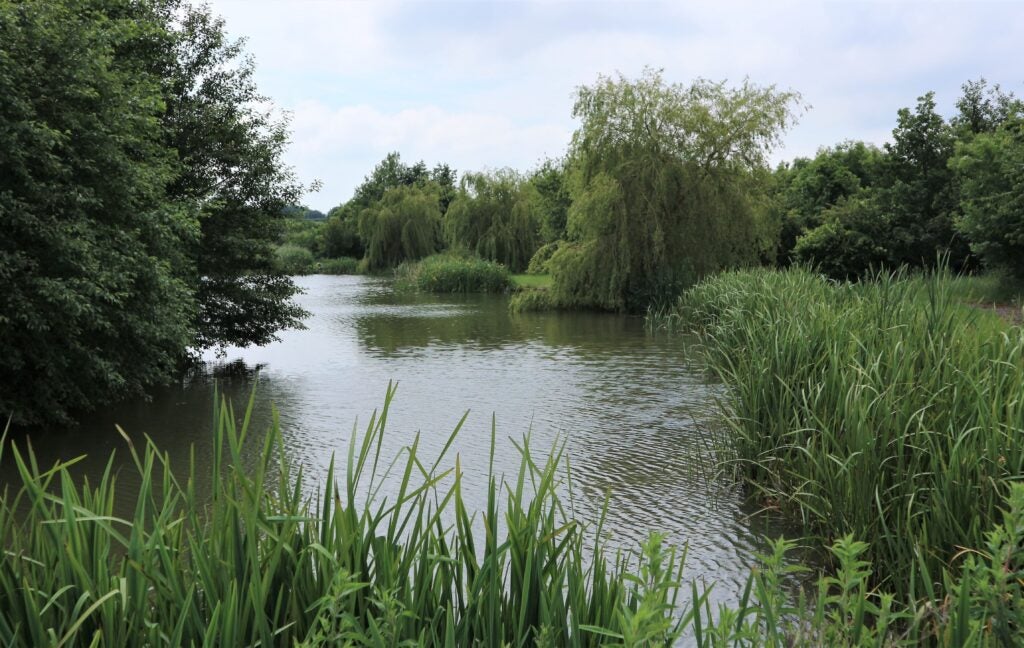
Even quite busy day ticket lakes often have overgrown areas, where you can find some spots well out of the way of any bankside activity. These quiet havens can be very productive, although sometimes they are awkward to fish. It’s worth the effort because such areas can be great for good catches or big fish, due to angling pressure pushing the inhabitants into them. I’ve also noticed the wind often blows floating debris into sheltered corners like this, which fish quickly follow searching for food. These are prime places for rudd, perch and carp, particularly in the margins. Even bream and tench will move in. On this lake in Rutland I was fishing out into deeper water and struggling, but occasionally I noticed something disturbing the bottom almost at my feet. I quickly set up a margin pole rig and to my amazement caught a proper slab of a bream straight away. This was followed by a tench, bonus fish I could easily have missed.
INVITING ISLANDS
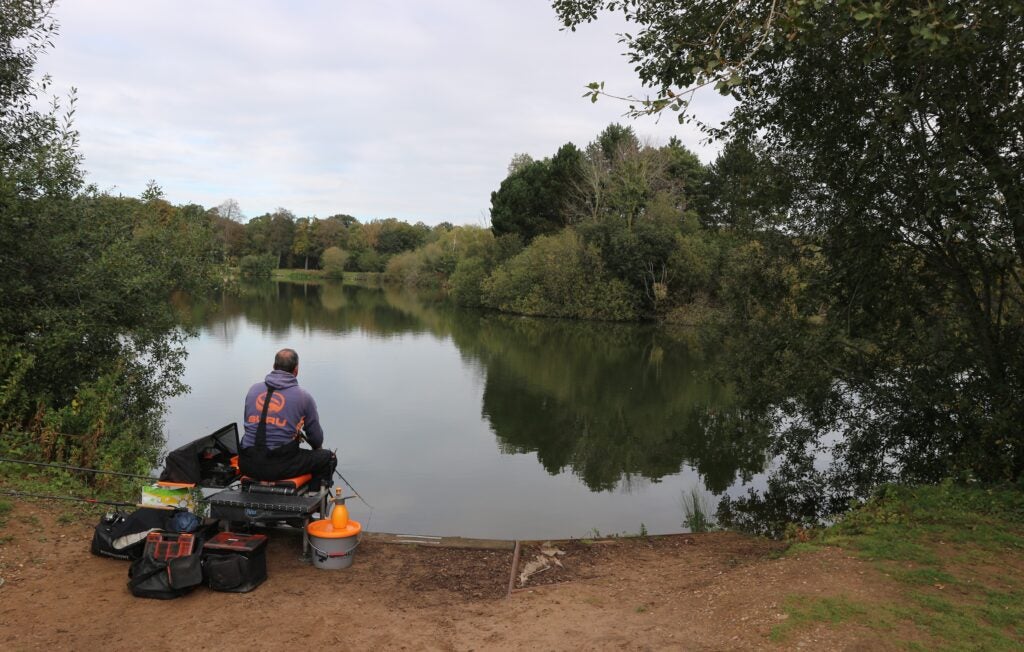
It’s blatantly obvious island features are worth exploring, whether they are within easy casting distance or require long chucks. I have many lasting and pleasant memories of exploring swims like these, although they are often occupied, unless you get to them very early. This island is on the Specimen Lake at Woodland Waters and apart from producing lots of carp, also offers a couple of bream hotspots, where it’s deep tight against the overhanging cover. This reminds me of a similar feature in the lake at Gloucester Park down in Basildon, which I used to visit a lot when I lived nearby. The big island there was undercut and you could catch big fish like carp, bream and even odd chub, by casting loaded wagglers or feeders as tight as you could get them. It was tricky, but you knew when a cast was on the money and that a bite would result. There wasn’t much need to feed anything because the fish were always resident.
STRANGE PLACES
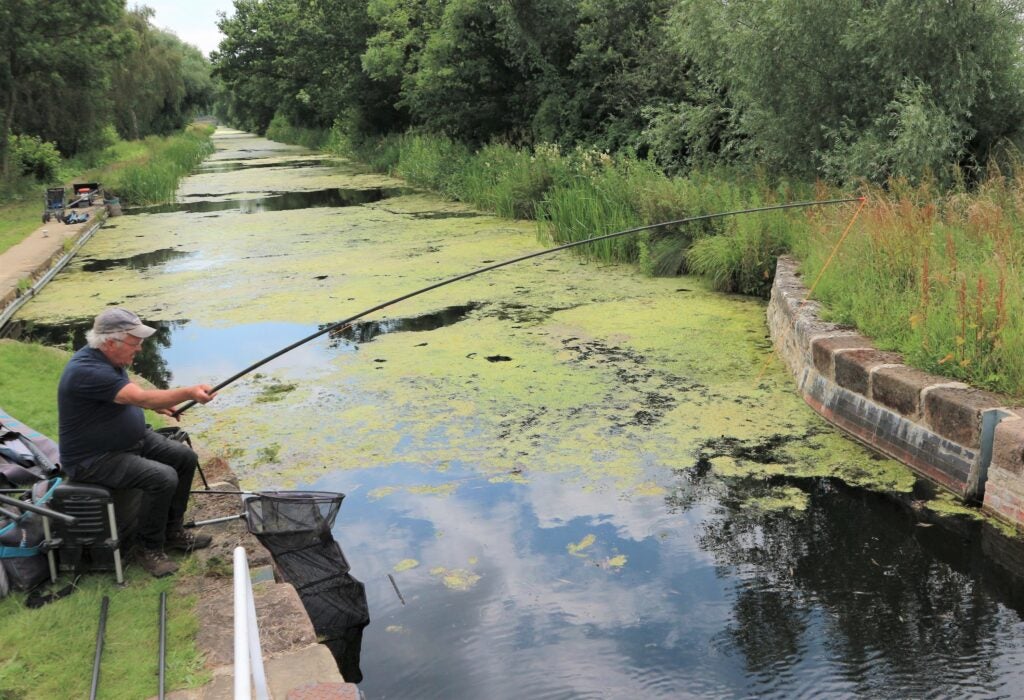
I found myself fishing into this lock last summer, because as you can see, the rest of the canal was badly choked with weed. Events initially went well as I connected with something big in the mega-deep water inside the main chamber. However, it turned tricky when the beast swam out to where the canal is only a few feet deep. Luckily, I was using a puller bung, which helped a lot in landing what turned out to be a thick-set tench. Fish hang around locks because there is normally some water movement, even when not being used by boats. Water movement also came into play on on a reservoir in Northumberland I fished. I was drawn to a small concrete structure built around an inlet pipe. I never saw this pumping any water in, but with a plummet discovered a pronounced bottom contour had been gouged out over the years. I fished into this gulley, which was the only feature I could find and enjoyed catching bream all day long.
METAL PILING
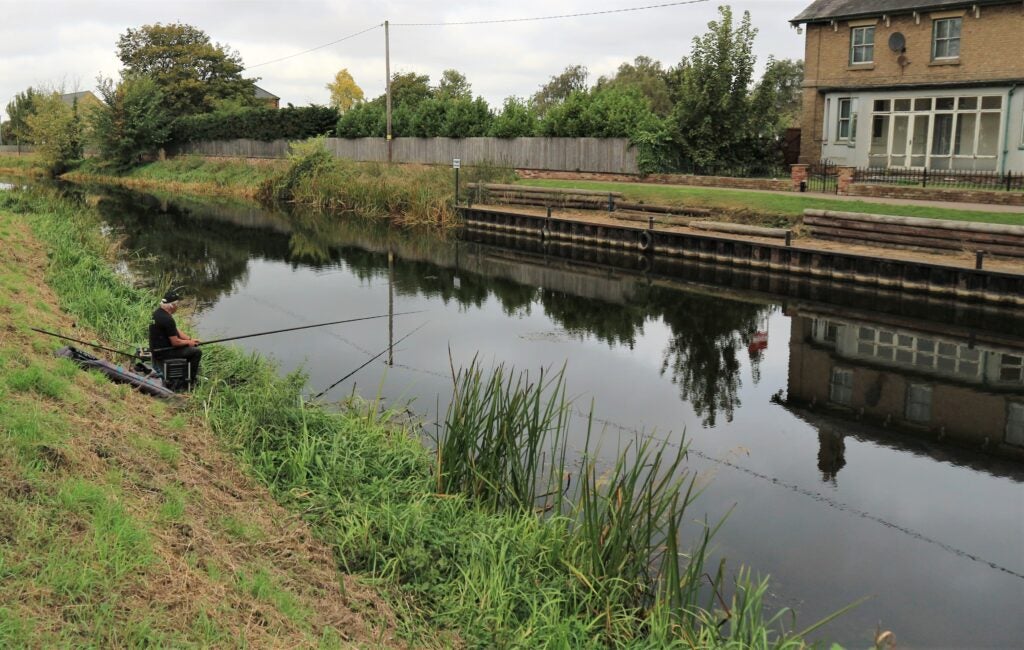
When you see piling like this, which is supporting a long concrete landing stage at Benwick on the Old River Nene, it’s likely the water will have some depth tight against it. Boats scour the bottom out and often it’s possible to catch fish right up against the structure. That’s exactly what I ended up doing, as I worked my way across to the far bank, eventually switching away from the pole and catching with waggler tackle. I once drew a remarkably similar looking feature on the Grand Union Canal, in a big annual London Angler’s Association Canal Benevolent match. This was going back to when there used to be several hundred competitors lining the towpath and spread over many sections. I took a gamble and threw a ball of punch crumb right against the piling at the off. I knew punched bread was very effective on the stretch in question and caught quality roach all day. Back at H.Q. my catch was worth a big trophy and fat envelope of cash.
FAR BANK COVER
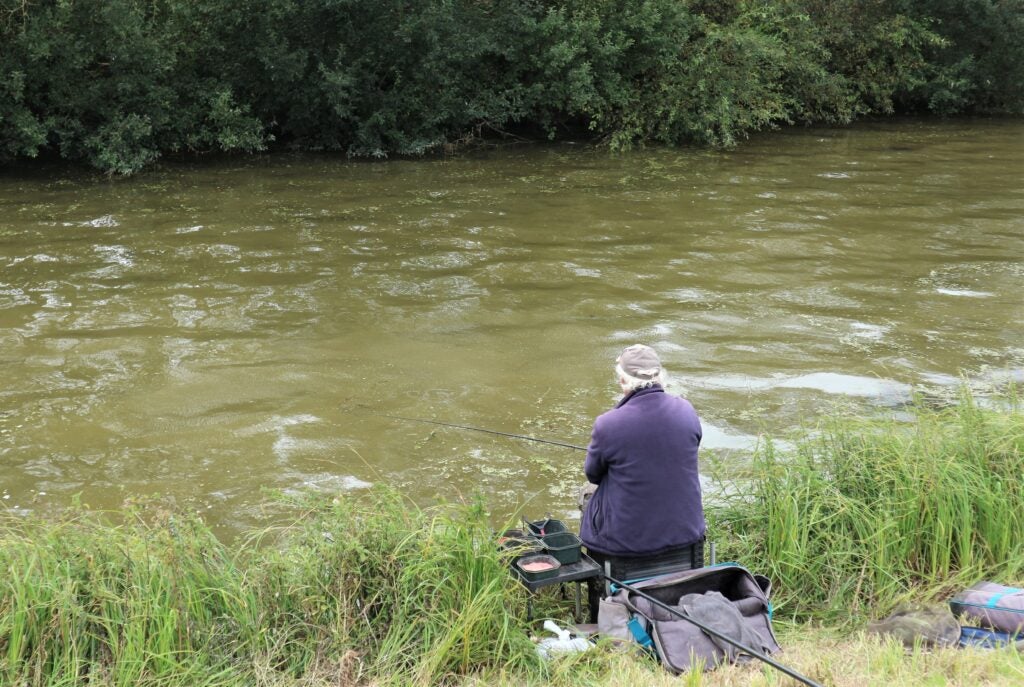
The far bank of many rivers, canals and drains is where I have regularly ended up catching with waggler tackle. It’s a nice way to go, instead of trying to hang onto 16 metres of pole. Fish often retreat under far side cover, particularly in venues with regular boat traffic. If this was my old stomping ground back on the River Lea Navigation where I first started match fishing, I would be thinking waggler, casters and chub. Mick Saggers was a top Southern angler who fished in Dickie Carr’s ABC team, a maestro at waggler fishing. I drew next to Mick when he won an Open event at Ponders End with a masterly display, sideways casting his tackle beneath the overhanging branches of trees opposite. He caught chub after chub. Trying to follow suit, I hung many prized floats in the trees. He showed me afterwards how to do it right and I still enjoy the technique to this day. Not chub on this Midlands canal, but still plenty of quality silver fish.
DRAWN BY BRIDGES
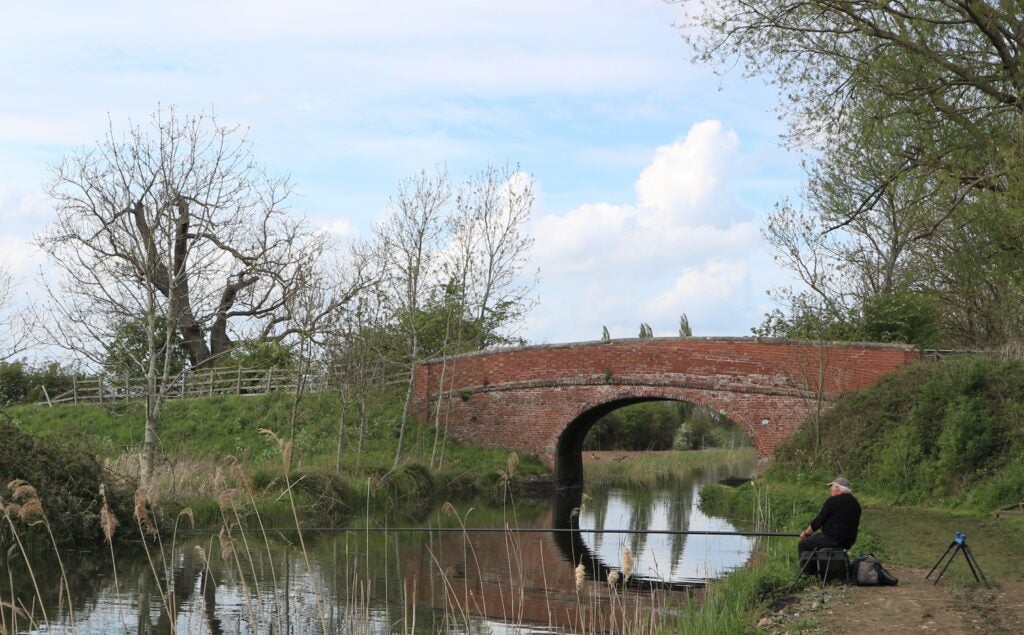
Bridges are prime hotspots. It doesn’t matter if it’s canals, drains or rivers that they span, fish home in on them like bees to honey. Strangely, it doesn’t matter if there’s busy traffic thundering over the structure; the extra cover is normally enough to hold most species underneath, or close by. It’s not just the bridge that attracts either, also the deeper water around such places, where the banks have been concreted or piled. The immediate pegs around this bridge on the Grantham Canal are always solid with rudd and perch, with good chances of bonus tench. If it’s sunny, it’s worth chasing the shoals right underneath. I can recall some great bridge pegs on the Grand Union where they were the only places you could catch elusive chub, also many small river glides where you didn’t know what might turn up next, trotting float tackle into the dark water underneath foot and road bridges. These features always make fishing interesting.
The post Feature Finding appeared first on Fish & Fly.
Mini Feeder Fishing 24 Mar 2022 12:40 AM (3 years ago)
BEATING BIRDCAGES
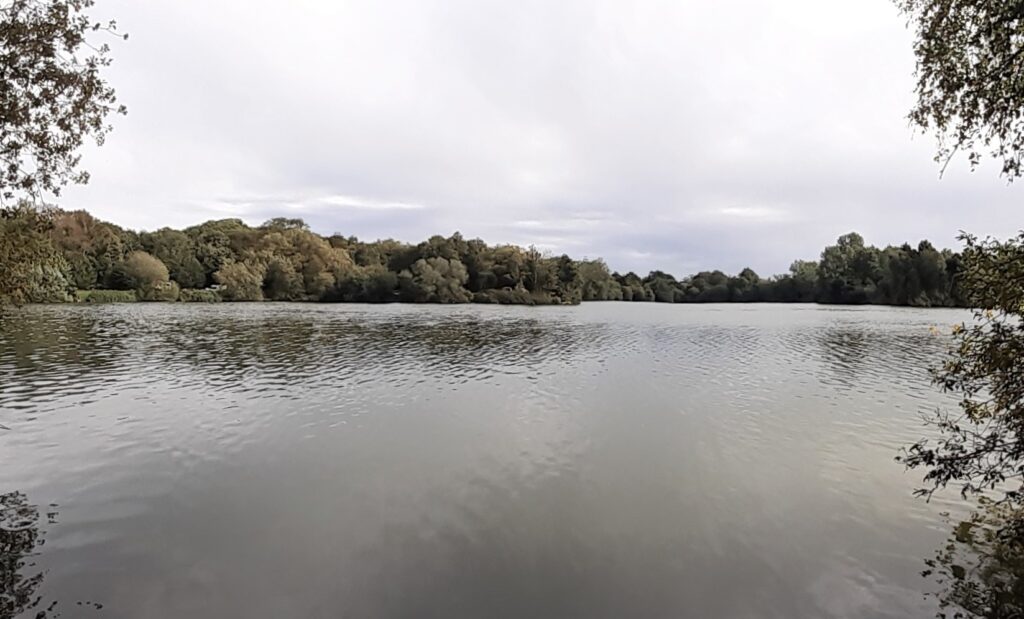
Some of the best swims I’ve fished have been downright awkward casting-wise, often heavily overgrown with foliage on both sides and above. A little bit of pruning can help, but unless you have brought ladders with you, branches overhead have to be put up with. The best way of beating this problem is to use a short bomb or quivertip rod and a scaled-down feeder. Rod-wise, I’m talking about a soft-actioned blank around 10ft in length, with sensitive 3/4oz or 1oz quivertips. You can cast something like this in tight situations, underarm, or even sideways if necessary. It’s easier to be accurate with short rods, even if you have to change your casting style. Another important aspect of fishing feeder tackle at close range in tricky swims, is all the cover attracts plenty of fish. With the modern trend of casting to the horizon, I have a good chuckle when I’m bagging up close, watching numerous feeders crashing out into the beyond.
SCALING DOWN
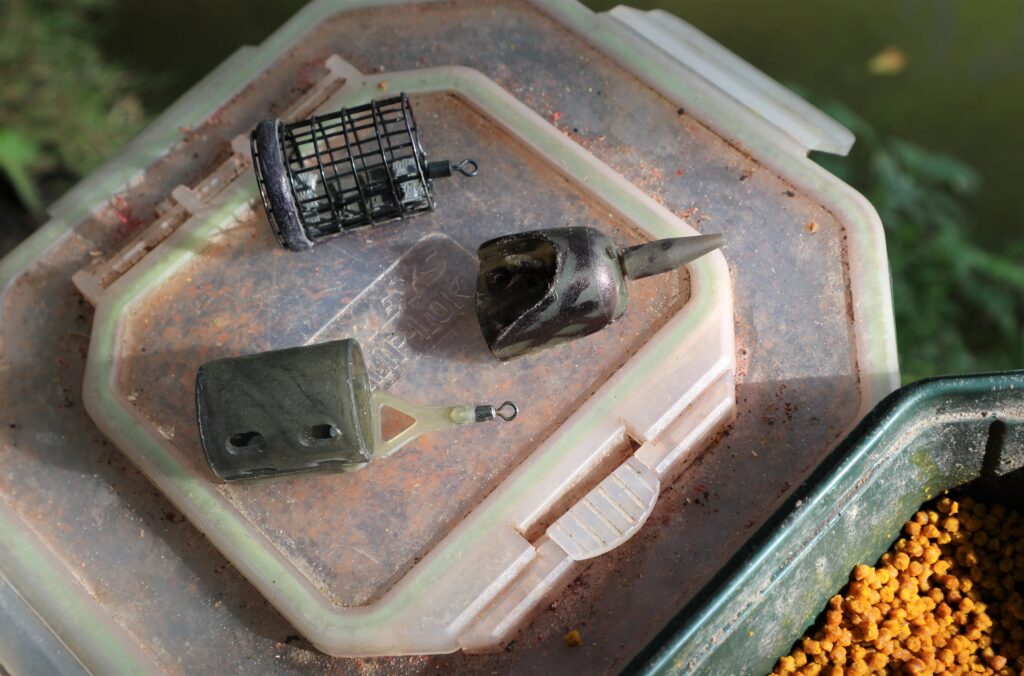
Thanks to the current popularity of launching end tackle into orbit, which is a widespread trend in both specimen and match fishing circles, it’s getting harder to find small, lightweight feeders. I treasure the ones I have in my collection, in many cases purchased many years ago. If I can’t find what I’m looking for, I’m not afraid to rip big weights off any feeder design, to modify it so it suits what I want. Feeders carrying between 10g and 15g are perfect for fishing close range in most depths. I normally kick off with a cage design because it releases its contents quickly, helping to build swims up faster than anything else. Normal practice is to use minimal groundbait to hold in lots of freebies like hemp, casters or pellets. If I want to put in some chopped worm, a plastic-bodied groundbait feeder is better at making sure the load gets down hard on the bottom. A pellet feeder is a good back-up if fish are not responding to groundbait.
SEEING EVERYTHING
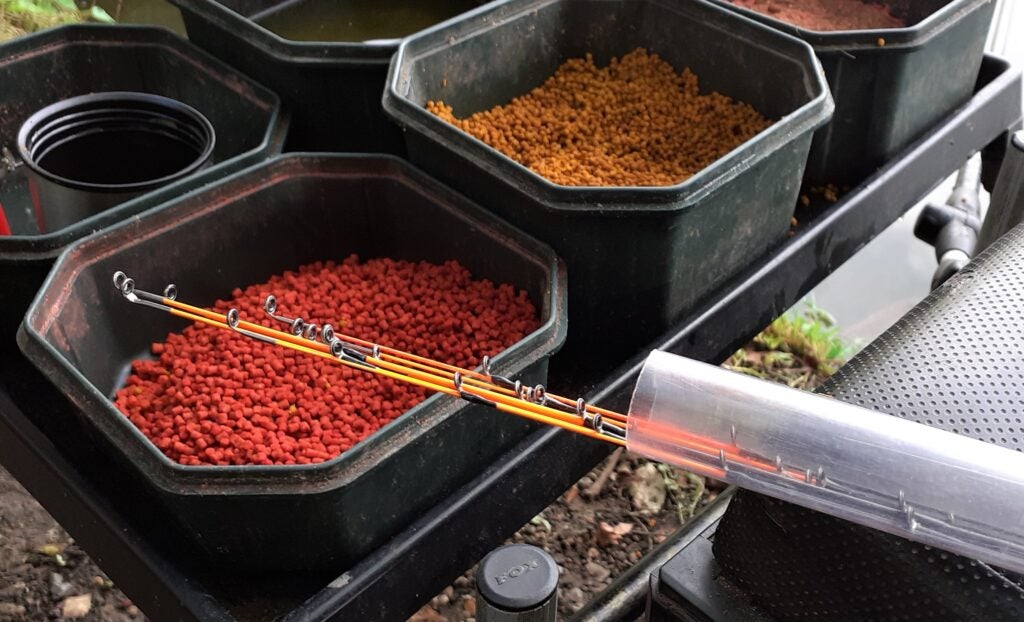
Even if I end up using an in-line feeder and a short hook length, I don’t need a stiff quivertip for anything to hang itself against at close range. A lot of small indications, commonly thought to be caused by fish attacking feeders, are not always that in my opinion. Bream and roach often create tiny movements on light-action quivertips, mouthing baits and letting go if they feel any resistance. A 3/4oz or 1oz super-sensitive carbon quivertip helps to highlight these tiny indications, which often result in good fish if connected with. A lightweight feeder and soft quivertip both help to prevent taking fish feeling resistance and rejecting hook baits. Having rigs free-running has the same effect, although with short hook lengths and in-line feeders fished close in, takes are often savage enough for fish to hook themselves. Carbon quivers are better than fibreglass ones in my opinion, blending in a lot more smoothly with high modulus blanks.
BETTER BALANCED
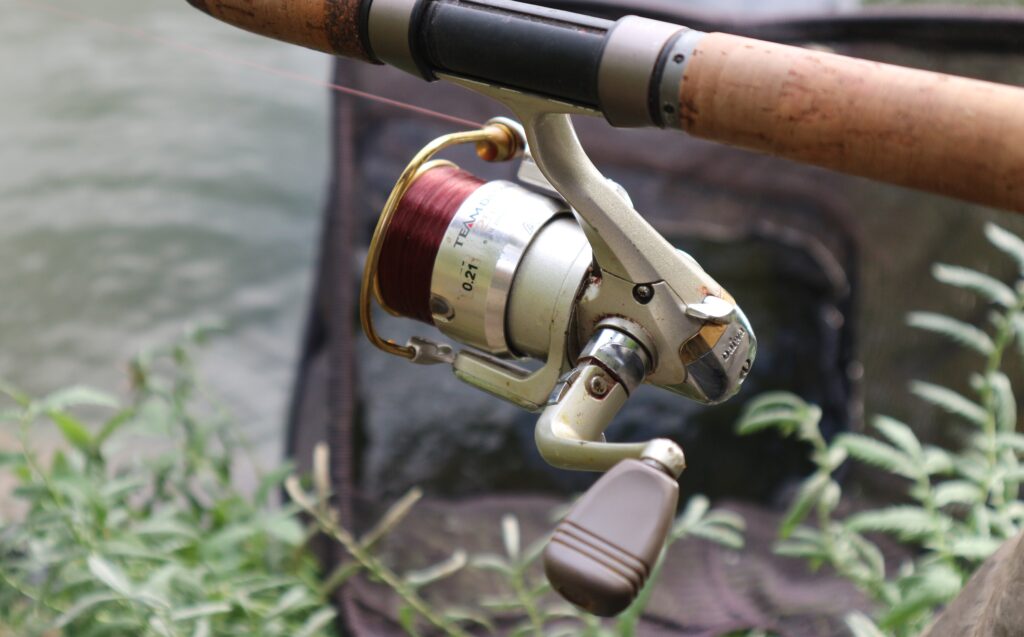
It would be a travesty to spoil the balance of my favourite short quivertip rods, which are pleasantly lightweight and highly responsive. There’s no place or need for big pit reels here! Even some of my standard feeder reels are too big and heavy, so I’ve brought an old Daiwa winding machine out of retirement, which I used many years back for float fishing. It works fine for short chucks, combined with less weighty feeders. Line twist isn’t such a problem with smaller diameter spools at close range either. What I’m looking for is a balanced set-up, combined with a through-action rod and super-smooth reel, which doesn’t struggle when fish need to be cranked in and kept away from nearside snags. In my experience, higher priced reels are far less likely to struggle when put under serious pressure. I don’t use a clutch, finding it loses too much control when playing big fish, plus such devices cause line twist. Backwinding is better.
MINI MARVELS
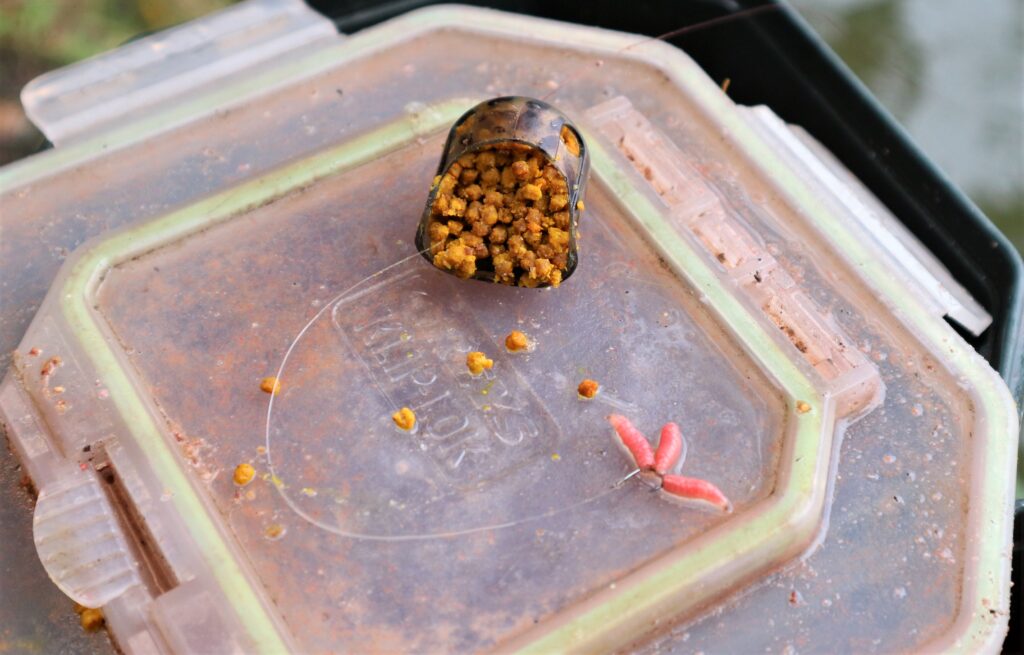
Going back to my Grand Union Canal days, I often used tiny maggot feeders on wider stretches where chub were resident. I made a special short quivertip rod, or winklepicker as we used to call them back then. I remember using it on places like Lady Capels, a top match venue at the time. My custom-built rod acted like an elastic band after hooking anything, bending right the way through. But it worked and allowed me to use fine tackle to conjure bonus bites and fish. These days there are plenty of short, sensitive quivertip rods that will do a similar job, but I now find myself relying more and more on small pellet feeders at the business end of my tackle. I enjoy using cage and small groundbait designs, but pellet models have been more effective on many types of venues. I think this is due to there being so many interesting flavoured pellets to choose from, with wider colour choices and sizes that cover all types of species.
CHANGING THINGS
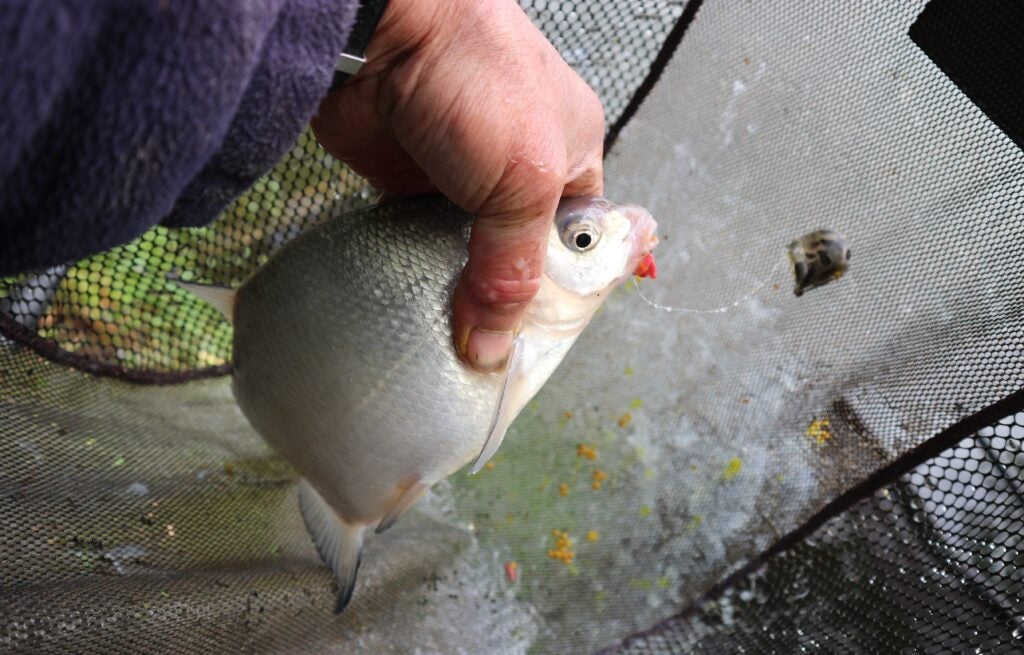
Starting with a cage feeder quickly stirs swims into action, but a major problem can be pulling in never-ending shoals of small perch. After an hour of winding these little blighters in, I often wonder if they are masking the fact that bigger fish have moved in. A good way of finding out is switching to a pellet feeder, which can instantly open up a new world. Simply feeding micro pellets and burying two or three red maggots inside the feeder is a good way of defeating “wasps”, as I call them, allowing good fish like this skimmer time to get in on the action. It attacked the pellet loading as it hit bottom, signalled by a weird trembling on the quivertip, which then bent round and stayed there. Burying baits like maggots often works, but if small perch problems persist, switching to banded pellets can help. Changing hook lengths isn’t a problem either, done quickly with a connector bead, alternatively hooking a band installed on a hard pellet.
BEING ACCURATE
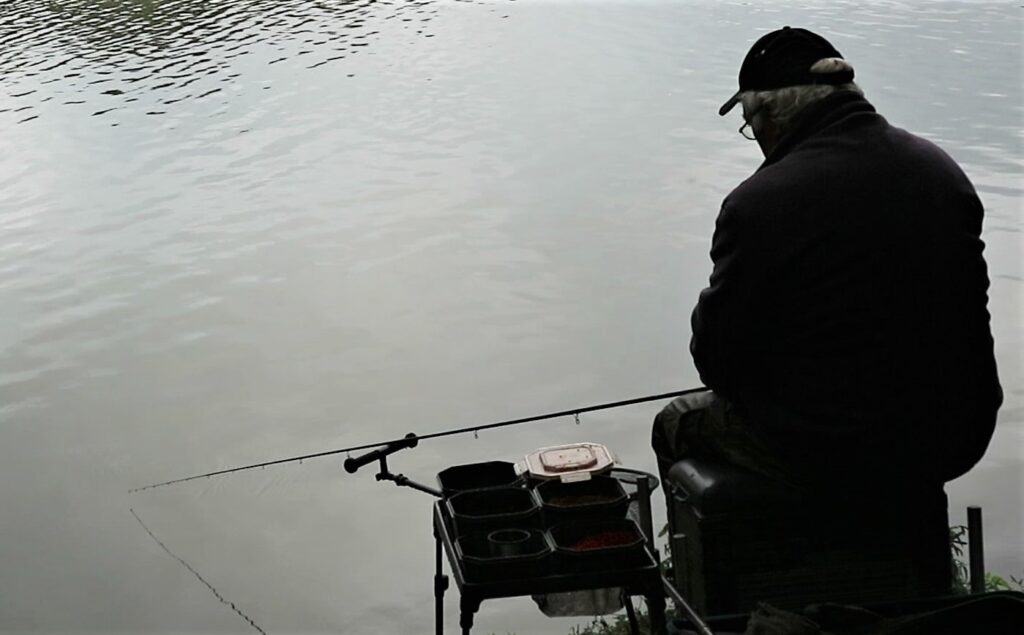
I remember having a conversation with a top feeder angler and was amazed when he told me he preferred an 11ft quivertip rod on his beloved tidal river. “Why so short?” I asked. “Because it’s more accurate”, he said. Everyone else was using 12ft or 13ft blanks on what could be a powerful venue, depending on the tides. The shorter aspect made perfect sense to me when I thought about it, recalling how my 9ft canal winklepicker always put a tiny feeder on the money. I’ve found that’s still the case with my current high modulus carbon bomb-style rods. My favourite is 10ft, which is just long enough to keep bigger fish from running my rigs into nearside snags as they come close to the landing net stage. One thing is for sure, it’s impossible to be super-accurate when launching heavy feeders to the horizon with much longer and beefier rods. The only way it would be possible to hit the mark every time at range would be with a bait boat!
A NEW WAY
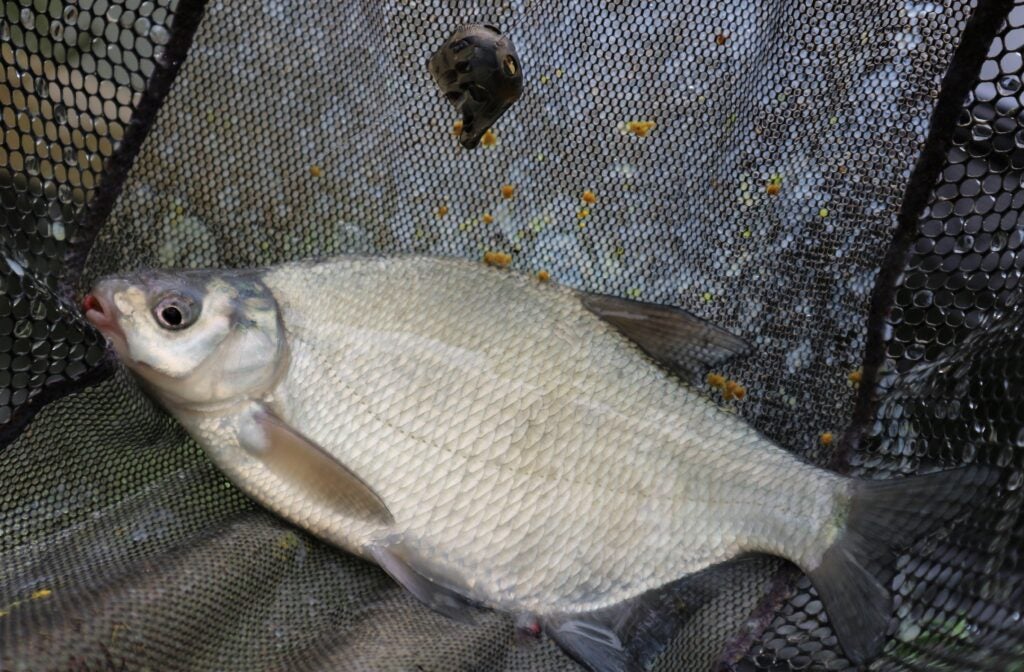
Something that used to annoy me when using short hook lengths, was the way they often wrapped back around feeders, virtually every time if you left the hook bait dangling free. But I don’t always want to bury my baits, especially when quality fish are lining up. After much experimenting, I finally cracked this issue by switching to fluorocarbon. This material is much thicker and stiffer than low-diameter mono, but because it’s almost invisible in water the diameter factor doesn’t matter. Another aspect I like, is thicker fluorocarbon is far more robust, so it doesn’t show signs of stressing after a few bigger fish have been landed. I know short 4inch hook lengths are most popular for use with in-line feeders, but I’ve found 6inch superior for fish like skimmers and bream. That bit of extra length helps avoid bumping the hook out when playing fish like these in, particularly as they thump hard against the feeder as they near the landing net.
BUSINESS END
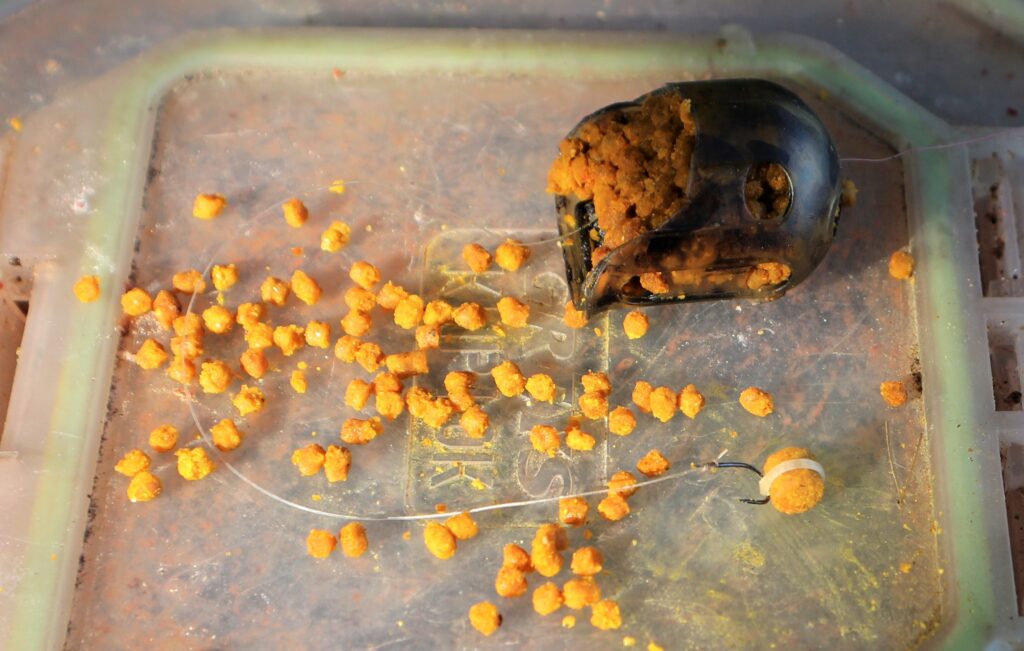
Even when just feeding pellets, sometimes small nuisance fish become too active in a swim. If this happens, I switch to a banded pellet and if I’m feeding micros, a 4mm size is ample and more likely to be picked up than anything bigger. Pre-tied shop-bought hook lengths are okay if large fish are knocking about, but can be too short and feature over-heavy hooks for targeting silvers like roach and skimmers. As previously mentioned, 6inch is better, because it puts anything you hook a bit further away from the feeder as it’s played in. Small latex bait bands installed in looped hairs are okay for presenting hard pellets, but to be honest, simply hooking a banded pellet as you see here works just as well. I don’t think fish are that fussy when they get a taste for pellets and start hoovering them up like vacuum cleaners. I play about with pellet colours and have been doing well in deeper water swims with lighter ones recently.
NEW TERRITORY

Like many people I’m sure, I found myself drawn into the chuck it as far as I could scenario when feeder fishing. But it got a bit tiring cranking in small fish or missing bites, after going to all the trouble of launching baits such a long way. It makes a nice change taking a gentler casting route, putting scaled-down feeders on a pinhead. Very often I catch more too, because I’m not wasting half my day winding in huge quantities of line. I also think by casting just beyond long pole length, a new world opens up, fishing an area that rarely gets troubled on many venues. Bigger fish that have wised up tend to inhabit such spots, knowing they are much safer. Bites tend to be more positive too, with less stretch in the main line registering indications more clearly on soft-action quivertips. It’s important to use mono instead of braid by the way, because you need a bit of give, especially when using short hook lengths, where braid is too severe.
GENTLY DOES IT

Even with a soft rod and using mono, it pays to be careful when playing in better-sized fish with mini feeder tactics at close range. I aim to lead fish in, rather than bullying them, which helps to avoid hook pulls. I first learnt to tame big bream in this manner on the River Shannon at Athlone. I remember watching swingtip maestro Sid Meads bagging up on a festival there, getting in big slabs much faster than everyone else with a forgiving rod. I tried using a softer blank and it worked wonders for me as well. A gentle lift into takes and by not putting much pressure on hooked fish, they could be guided in without pulling back. I noticed anglers hitting into their quarry hard, with stiffer-action rods, were taking much longer to tame fish in the strong current. Applying less backbone gets fish under the rod tip fast, but you have to be ready for them to kick hard near the landing net stage. Long-handled nets help a lot here.
SECRET SHOALS

Since I’ve got more heavily into mini feeder fishing over the past few years, it’s fascinating what turns up. You hardly ever see big silvery skimmers like this on many local fisheries, fish that obviously haven’t been caught before. You might get the odd one using normal groundbait feeder tactics at range, but not lots of them like this. The same applies when using the pole, where it’s rare to put a bag of these shy biters together. I tried the same method a few days later, on my first visit to a new lake, which a mate introduced me to. He had never caught any bream from it during several visits, but using a small pellet feeder, not too far out, I caught fish like this all over again. This way of fishing doesn’t just work on stillwaters by the way. It’s worth considering on big rivers down the nearside, also on the far bank of less wide streams, drains and canals. Putting small loadings of bait in more regularly quickly stirs things up.
The post Mini Feeder Fishing appeared first on Fish & Fly.
Lure Fishing with Robbie Northman #57 23 Mar 2022 12:12 AM (3 years ago)
Neon, Turquoise and Green
I ended the final few days of the coarse fishing season in pursuit of perch and pike. It was an interesting end, the perch playing hard to get. The pike fishing, however, was insane with most days on the bank or boat producing an average of 20 fish. Despite the non-stop action from smaller fish and a few big followers, the average size was quite small, with most sessions producing just one or two low doubles. There was however one special day, which produced a very special fish. Not just a great size but totally unique.
Now I’ve caught some strange looking pike, dark pike in clear lakes, pike with fiery fins, and pug noses, but this one was a first… It was blue, green, perhaps more of a turquoise colour. It’s a pretty rare phenomenon with a few pike across the globe presenting blue mouths or neon lips, but this one had the full hue across its body. The only other similar looking fish I’ve seen were caught in Canada.
WHY WOULD A PIKE BE BLUE?
After my unusual pike encounter, I took to the Internet in search of any information I could dig up on neon/turquoise pike (that’s what they most often seem to be called). The most logical explanation I could find is environmental adaptation, using the fish’s chromatophores. Chromatophores are colour-changing cells, they give masters of deception and camouflage, such as the octopus and chameleon, their colour-changing ability.
These cells are also present in fish. I’m sure many of us have noticed the variation in colour between fish in different water qualities. This variation also extends to their preferred hunting environment, and can be changed as they transition between environments. In murky water I’ve often caught perch with no stripes that seem to gain them once at the surface. The same goes for fish that start vibrant and change to a darker tone once captured.
We often see strong colour change in both carp and trout as the seasons change. Chromatophores explain the ability. Why would a fish choose blue? Could it be a genetic defect in the cells’ pigment range? Or do all pike have this ability? Why don’t we see more of them? Some say it’s a pelagic hunting adaptation in algae-filled waters, and others believe it could be down to the weed they ambush in. Without an in-depth study and so few examples out there, I guess the mystery will remain unsolved. One thing is very certain, it’s a spectacular fish, and here’s how I caught it.
I arrived at the venue in the morning with pike on my mind. It was blowing a mild Easterly, the sun already bright, not my preference in pike conditions but a lovely day to be fishing. I rigged up a jerkbait rod, with a new 14.5cms Gravity Twitch, and a medium shad rod, then began my search. Roving from swim to swim I started with the jerkbait, before running an 11cms shad through with more finesse. The jerkbait quickly put a small fish on the bank, a lazy take, so I decided to focus on the shad rod, picking out a motor oil perch shad in 11cms. A great translucent green pattern that stands out and absorbs light in bright conditions.
Confident fish were in the area, I spent a few minutes toying with different retrieve styles, eventually settling on a slow steady wind in mid-water. The technique proved perfect and it wasn’t long until a few more jacks had been landed. I passed the rod over to a friend new to lure fishing to see if he could catch his first pike. After a few more jacks we moved into deeper water and it wasn’t long until he connected to something special. A powerful fish, taking line from a fairly tight spool. A double? No, this was much bigger. I watched in awe at the sight of his first lure-caught 20, in his first few hours of pike fishing, a feat that had taken me many years to accomplish.
After the bites dried up we stopped for lunch where I had a think about what technique to fish, knowing I’d never get my shad rod back. Being the brightest part of the day I decided to scale down, picking out a nano jig to fish on light wire with my perch combo. I’d be certain to pick up a few fish using this technique. I picked a swim with deep water and made a cast. I let the lure sink to the bottom, then retrieved it for a few feet before letting it drop again.
Bang! I felt a solid tap and set the hook hard, instantly regretting choosing such a light setup. The rod doubled over and I released some pressure on the drag. This fish was big, possibly the biggest I’ve hooked on a rod so light. I hung on as the fish tore off, taking advantage of each brief opportunity to recover line. After a few minutes I’d coaxed the fish almost to netting range. Naturally, as soon as I unfolded the net it decided to go, ripping line from the reel at quite a pace.
On a well balanced combo I quickly regained the upper hand, and with net at the ready landed my prize. The scales bounced past 25lbs but the weight seemed irrelevant. Instead, I was captivated by the insane colouration, and watched in awe as vibrant green blue fins disappeared back into the depths.
The post Lure Fishing with Robbie Northman #57 appeared first on Fish & Fly.
Wild Trout Trust Auction: March 18-27 17 Mar 2022 12:52 PM (3 years ago)
The Wild Trout Trust annual fundraising auction takes place 18-27 March on the WTT’s own auction website. With 366 Lots, this is their biggest ever auction. Most of the Lots are fishing days – not only trout, but coarse, salmon and sea fishing too.
There is a handy map that allows you to search for fishing days close to home or to help plan a trip away. The fishing days include top class chalk stream fishing on the Lambourn guided by Charles Jardine and many other famous Wessex chalk stream beats, as well as huge range of other rivers across the UK and Ireland.
Many of these days are kindly donated by clubs, syndicates and owners and are not publicly available. This is an affordable auction, with Lots to suit every pocket.
Non-fishing Lots include flies, tackle, art, books and experience days.
Proceeds from the auction are spent on providing practical advice to fishing clubs, community groups and landowners and delivering habitat improvement projects.
Auction website: https://auction.wildtrout.org/
Map of fishing lots https://www.wildtrout.org/auction/map
Sample lots:
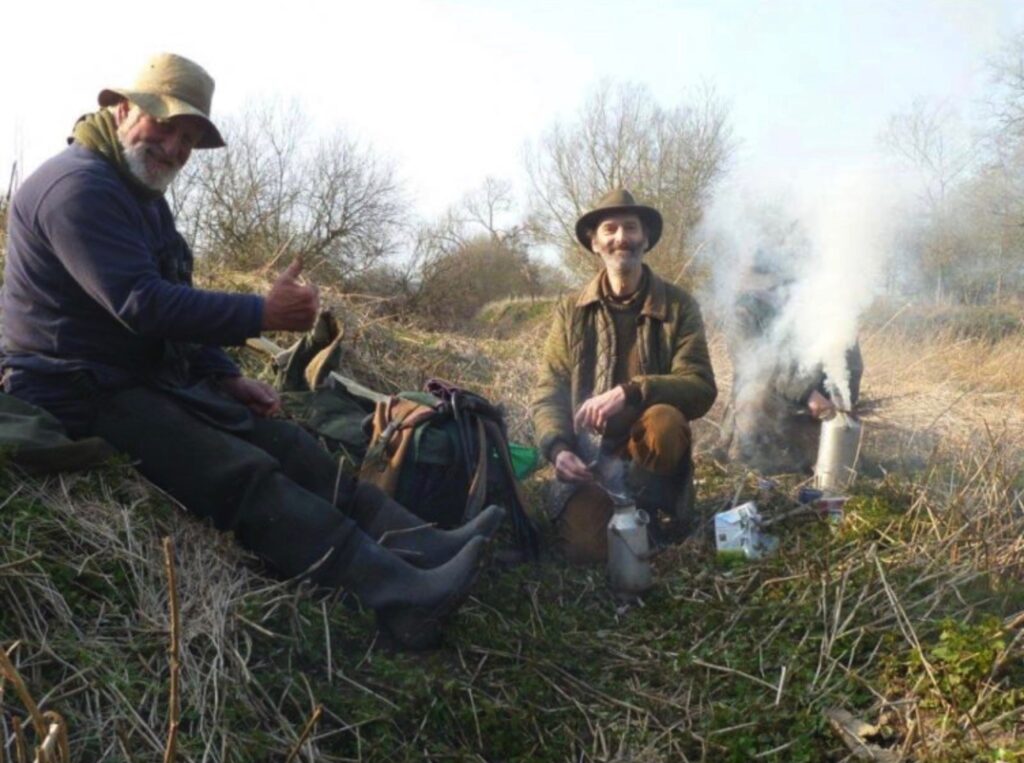
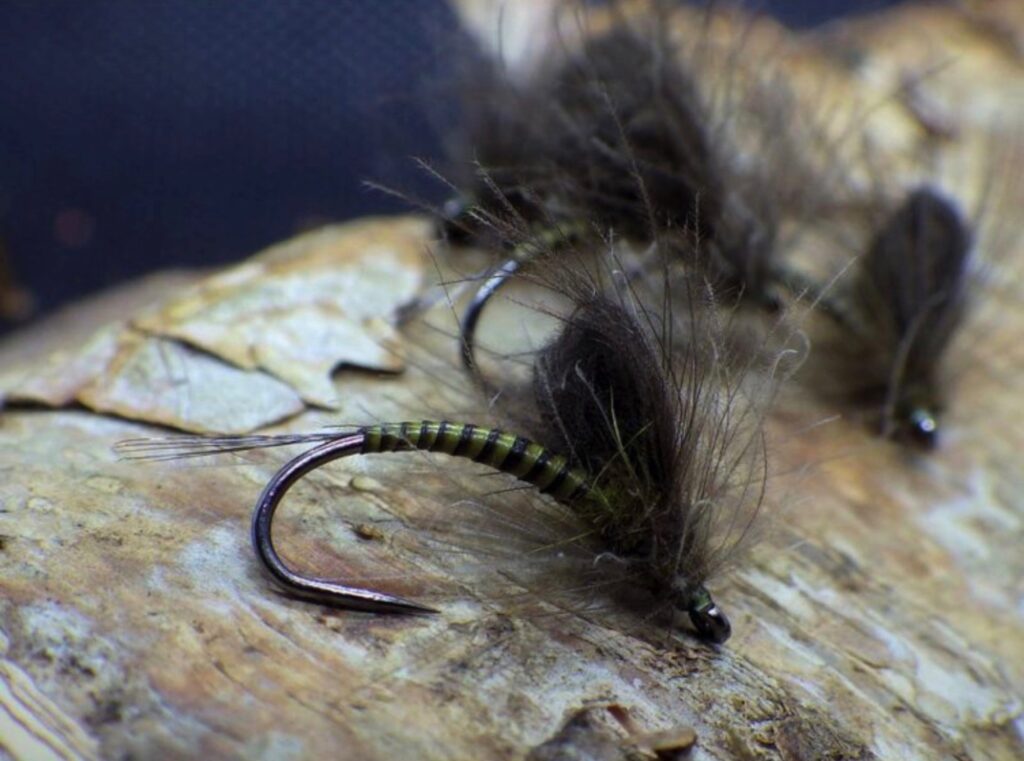
focusing on early-season invertebrates that catch trout.
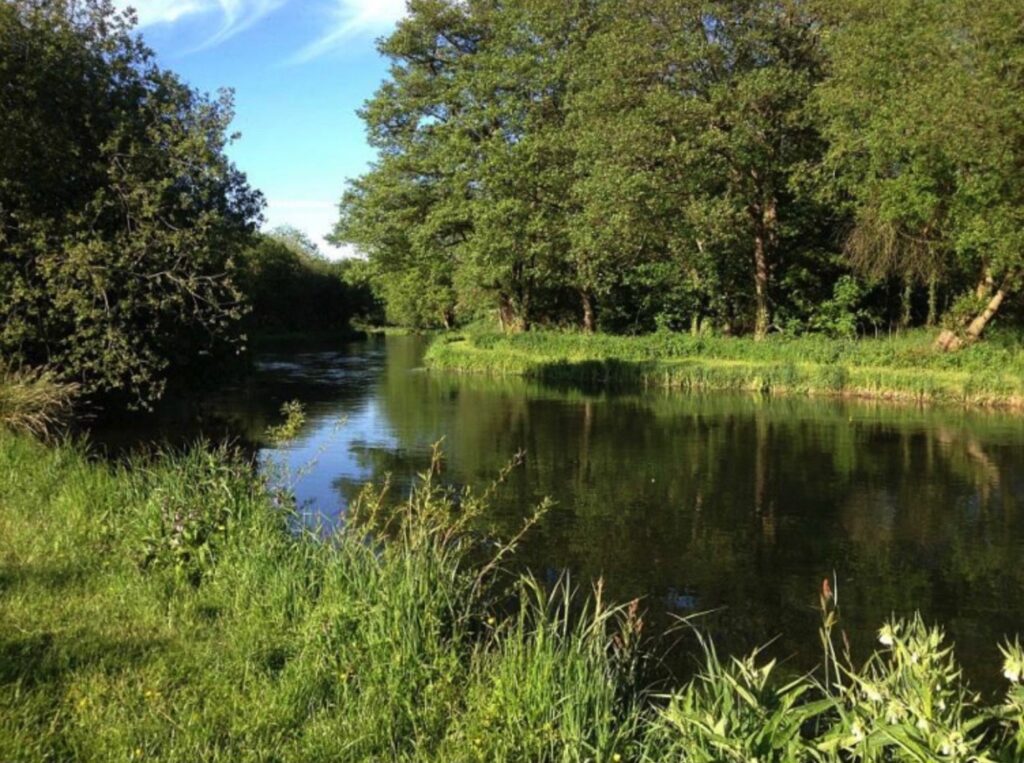
accompanied by WTT Director, Shaun Leonard.

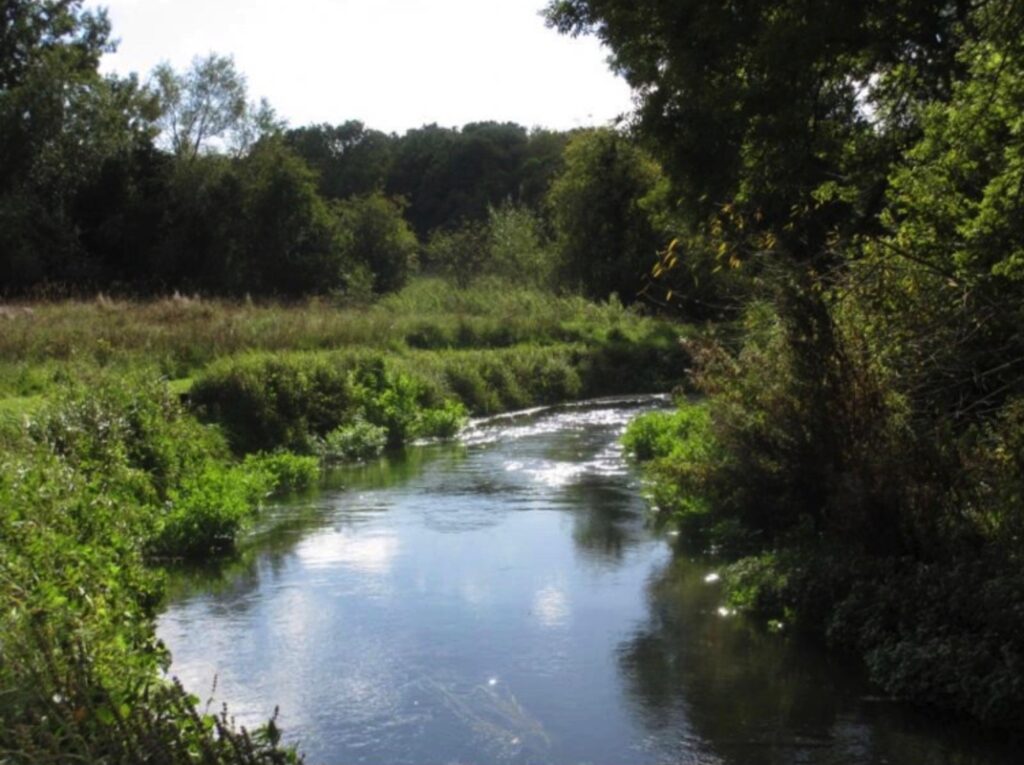
Preferably to be taken on 24 August 2022. Guided by Charles Jardine.
Cooked riverbank lunch, some flies and a sketch by Charles.
The post Wild Trout Trust Auction: March 18-27 appeared first on Fish & Fly.
Wild Trout Trust Auction: March 18-27 17 Mar 2022 12:29 PM (3 years ago)
The Wild Trout Trust annual fundraising auction takes place 18-27 March on the WTT’s own auction website. With 366 Lots, this is their biggest ever auction. Most of the Lots are fishing days – not only trout, but coarse, salmon and sea fishing too.
There is a handy map that allows you to search for fishing days close to home or to help plan a trip away. The fishing days include top class chalk stream fishing on the Lambourn guided by Charles Jardine and many other famous Wessex chalk stream beats, as well as huge range of other rivers across the UK and Ireland.
Many of these days are kindly donated by clubs, syndicates and owners and are not publicly available. This is an affordable auction, with Lots to suit every pocket.
Non-fishing Lots include flies, tackle, art, books and experience days.
Proceeds from the auction are spent on providing practical advice to fishing clubs, community groups and landowners and delivering habitat improvement projects.
Auction website: https://auction.wildtrout.org/
Map of fishing lots https://www.wildtrout.org/auction/map
Sample lots:
Lot 160: A day for 2 rods in the company of Chris Yates and Hugh Miles, angling for tench and crucian carp on a pond near Wimborne, Dorset.
Lot 054: A dozen dry flies tied by Gareth Lewis, focusing on early-season invertebrates that catch trout.
Lot 199: One day for 2 rods on 4 beats of a private fishery on the River Itchen, accompanied by WTT Director, Shaun Leonard.
Lot 002: ‘Wee Brownie’ by Sam MacDonald. Original artwork, 30cm x 20cm, signed by the artist.
Lot 277: One day for 2 rods on the River Wye, Haddon Estate plus one night’s dinner, B&B and packed lunch at the Peacock at Rowsley, guided by Andy Buckley.
Lot 203: One day for 2 rods, River Lambourn, Berkshire. Preferably to be taken on 24 August 2022.
Guided by Charles Jardine. Cooked riverbank lunch, some flies and a sketch by Charles.
The post Wild Trout Trust Auction: March 18-27 appeared first on Fish & Fly.
Thomas Turner Classic Rods 17 Mar 2022 12:06 AM (3 years ago)
ROD HISTORY
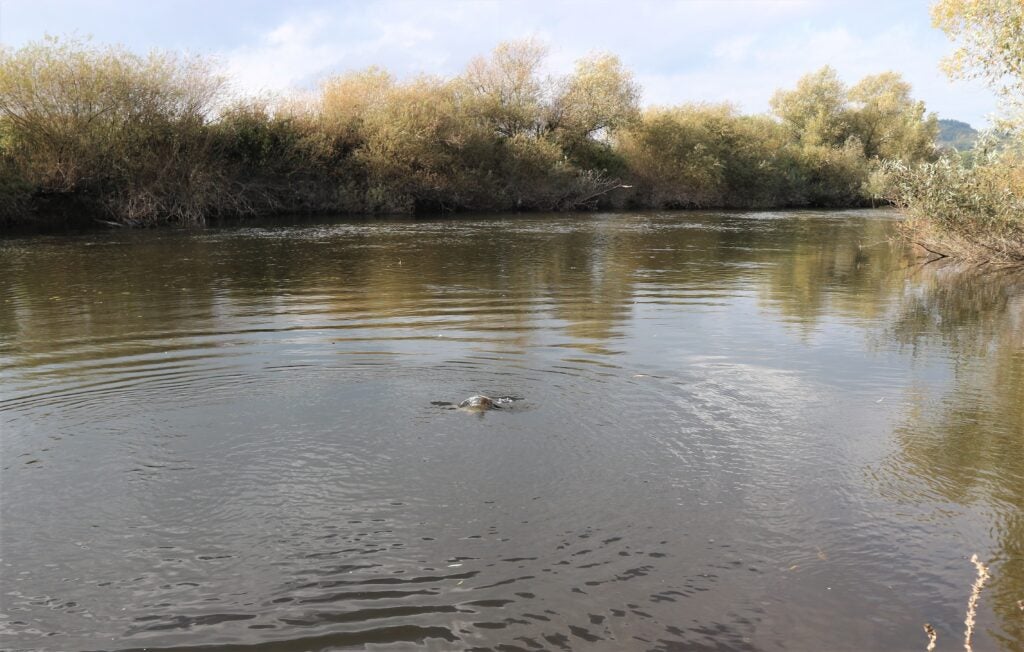
The first 13ft float rod I proudly purchased was a fibreglass Hardy Matchmaker. I spotted one in the museum at Alnwick when I worked for the famous company. My next notable investment was in a revolutionary Normark carbon blank, which Jack Simpson of Turnford fitted out for me. Another irony here, because I ended up working for Normark France a few years ago, pleading with them to put their iconic name back into state-of-the-art coarse rods. They wouldn’t do it, insisting it’s a corporate title now. It looked like I would have to be content with the multi-award-winning Hardy Marksman Supero rod range I designed over a decade ago. I thought this was a shame because I had visions of taking things much further. Suddenly, my dream came true. I found myself on the magnificent River Wye, watching John Bailey attached to something big and angry. He was using one of several new rods Thomas Turner asked me to develop.
NOTHING FANCY
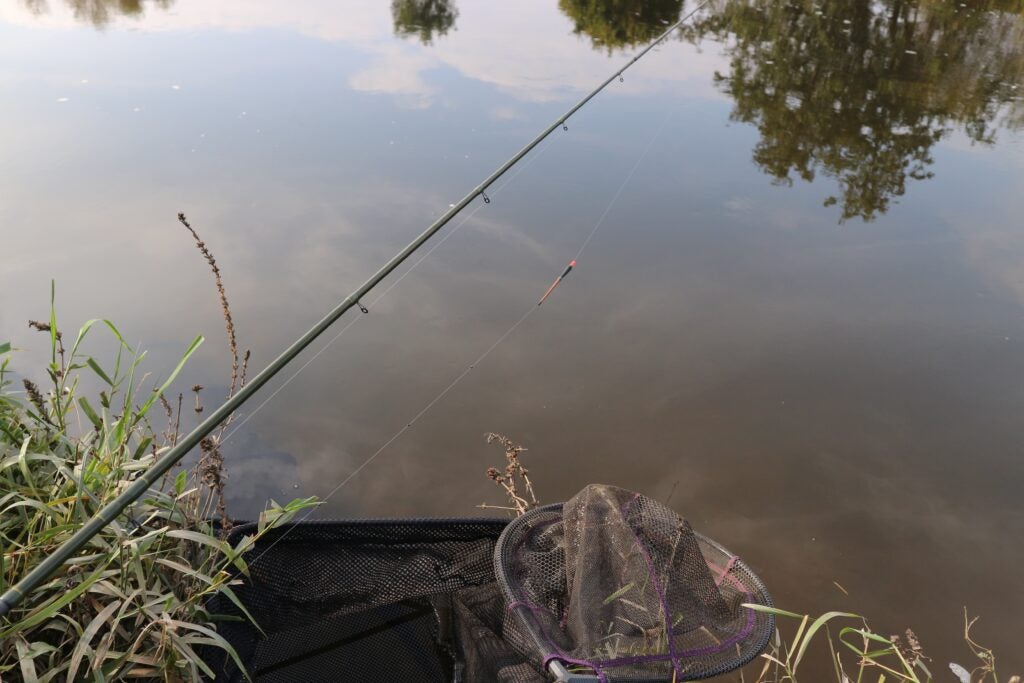
Like Hardy Marksman, the maxim with Thomas Turner Contemporary Classic coarse rods was to use the best blends of high modulus carbon, without any undue frills, to produce products that would be a joy to fish with. This meant lightness, crisp actions, and beautiful balance, but not going to crazy extremes that would sacrifice strength. Some other rods might be a tad lighter, but the aim was for models that could cope with traditional venues and methods, without exploding if anything big was hooked. Having worked with many rod factories while with Hardy, I knew exactly where I could get what was needed. In fact, I had already started work on a third Marksman range when Pure Fishing bought the company. I had discovered a new type of nano carbon that’s stronger, never wanting to lock up under pressure, also retaining its fast nature after being tested to its limits. Only trouble was, the new owners decided to make Hardy game-only.
RING SCIENCE
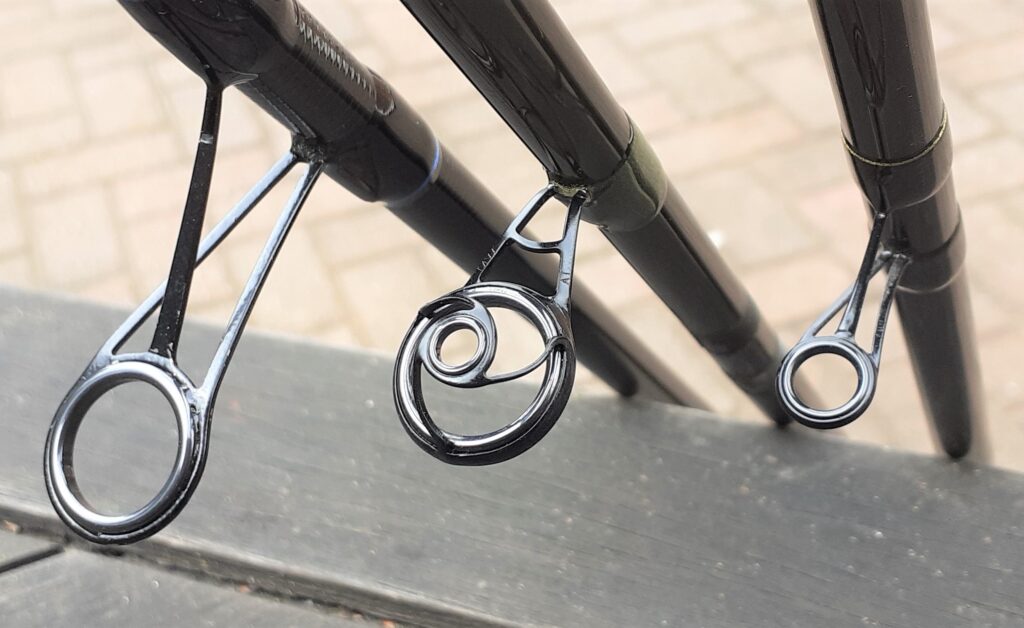
Some companies make up names for the rod rings they use. There are only so many ceramic lined designs out there, all very similar, so the hope is a scientific-sounding title will sell more of the rods they end up being attached to. It’s mostly sales hype. I decided against that by opting for trusty workhorse ceramic line guides, which mono or braid sailed through smoothly, without generating excess heat or friction. I’ve never rated certain types of highly expensive line guides anyway, finding some were rather harsh. They often damaged line, causing it to grate and coil prematurely when wound in. Another common feature, that doesn’t make any advantageous difference, is having over-large butt rings. The American Tackle Microwave design has proved that with its secondary inner eye, which channels line straight, creating less friction as it travels up the rod. I’ve tested it and got longer casts. Now I simply keep butt eyes a sensible size.
WHERE IT MATTERS
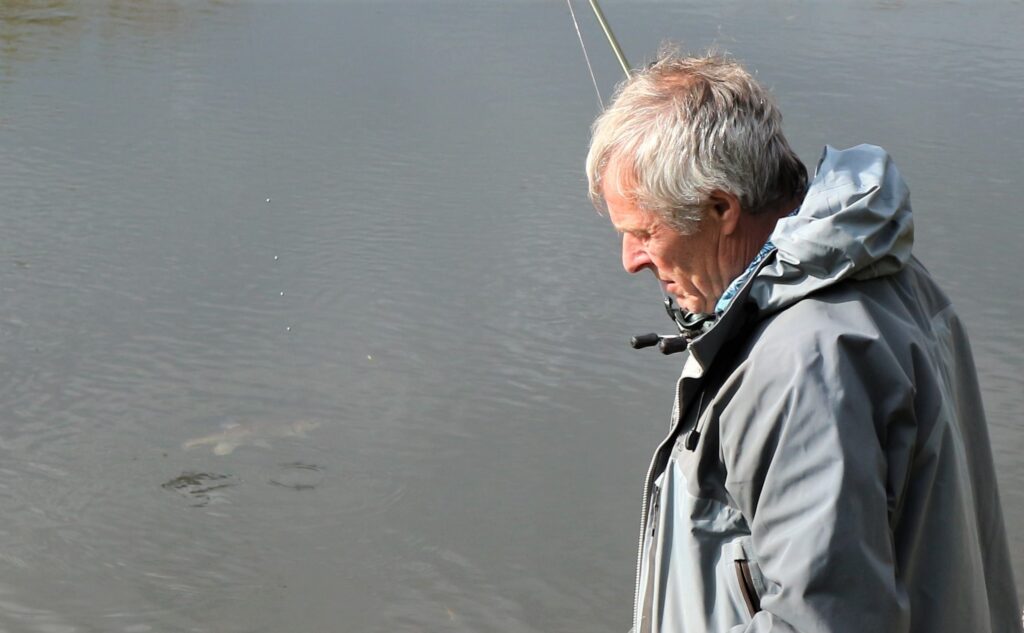
John Bailey is out on the bank more than I am with his guiding and filming work, so it makes sense to have him field-testing initial rod samples. They get a much more severe workout that way, and are put in various people’s hands for important feedback. Of course, I test the rods as well, which gives me a good excuse to grab some extra fishing time! It makes me laugh when I think back to being allocated an odd day or two for field-testing when I was working full time as a product developer. Really? How on earth can you properly test a whole range of rods in a couple of days? That’s certainly not the case here, after many months of being out there in wind, rain, snow and sunshine, on the most demanding of venues, catching fish up to specimen proportions. Getting new rods out on the bank makes it easier to see anything that needs tweaking. If something isn’t right, it quickly becomes apparent when something wild is attached.
ALL-ROUNDERS
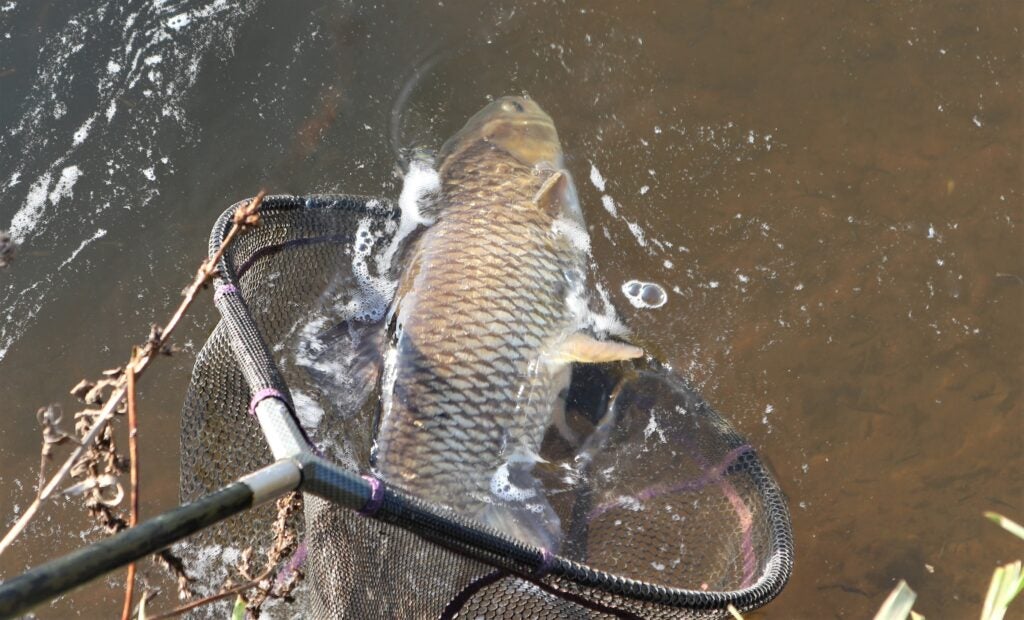
Some rod ranges are over-complicated, with several tweaked versions of the same thing. I much prefer the idea of having a design that can do most jobs, whether it’s a traditional 13ft float blank, a 12ft feeder model kitted out with several quivertips, an 11ft Avon designed for big fish, or a short 10ft bomb rod. I like being able to grab a favourite first choice model from my holdall, which I know can do what I want in most situations. It becomes like a familiar and trusted friend, something I can rely on, knowing exactly what it’s capable of. Some demands might require a more specialised approach, but again no need for several different versions of whatever that might be. I’ve learnt over the years to keep my fishing as simple as possible, having been lucky to enjoy the company of many great anglers. I always remember Frank Barlow telling me not to mess about with stick floats, just to let them do their job and fish like this would result.
CRAZY STUFF
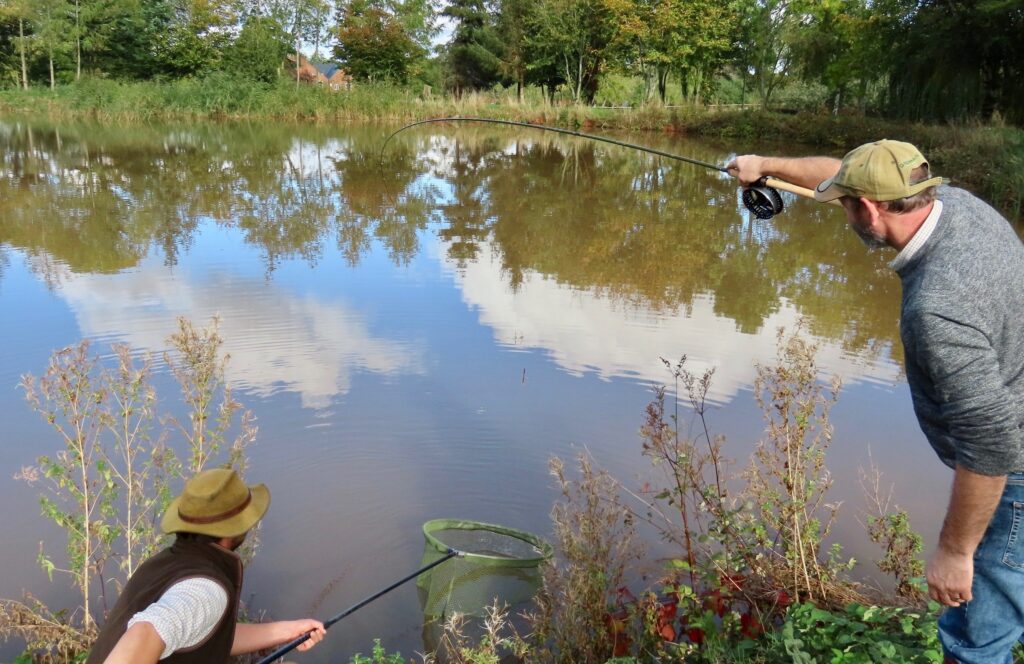
I have trouble watching many fishing videos. They get so deadly serious and seem to completely forget that angling can be lots of fun. Mates getting together and putting the world to rights, while enjoying catching plenty of fish, is a better option. Here we see a typical John Bailey and friends’ day on the bank, where it wouldn’t surprise me if at some stage rods were downed for a glass of wine and a sandwich. These guys were having a great time anyway. They were latching into wild carp, testing out a prototype Thomas Turner 14ft Float rod, combined with a traditional centrepin reel. If the blank could handle this, it wouldn’t be out of place on a river searching for barbel and big chub, or fishing down the margins on a big estate lake for tench. Nano carbons might be expensive, but they can absorb extreme pressure like this, being less brittle than standard high modulus carbon. These blanks don’t soften up after extended usage either.
DUAL ATTACK
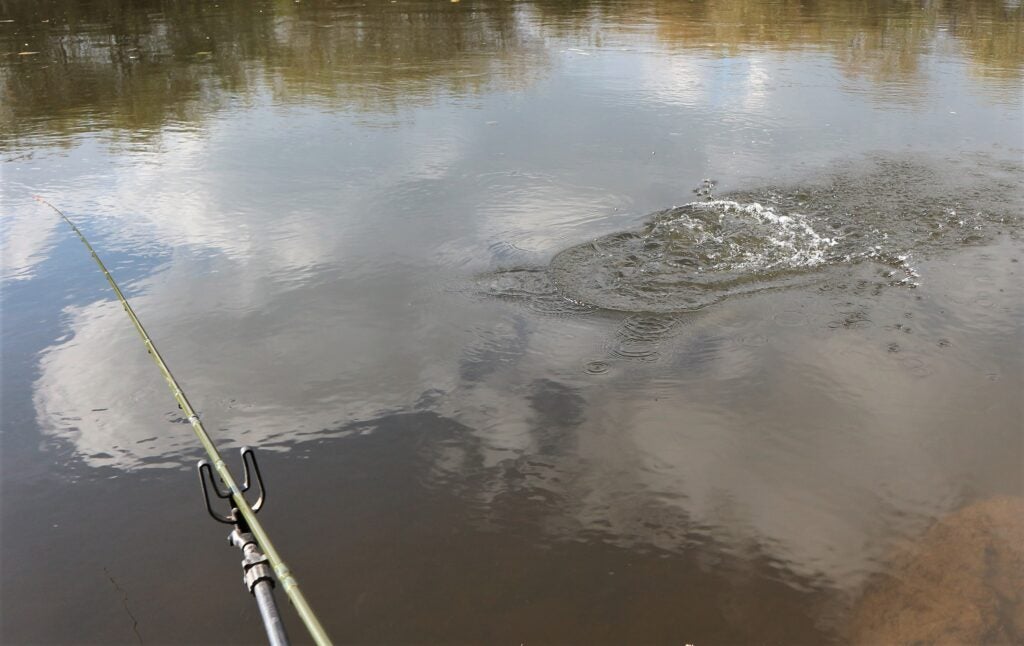
I was testing the new 12ft T.T. Quivertip rod, while John Bailey upstream was putting the 11ft T.T. Avon through its paces, quickly giving it a proper workout with feisty chub. The blank I was using had equal lengths with a quivertip installed, allowing convenient pre-tackling. It’s supplied with a generous choice of four super-sensitive carbon quivertips, covering 3/4oz, 1oz, 1.5oz and 2oz ratings. This makes it equally at home launching out feeders on lakes, gravel pits or reservoirs, as it is casting heavier end tackle on powerful rivers. In this instance it was comfortably casting 50g loadings, absorbing the most powerful of lunges from anything big that came along. J.B. was crooning about the 11ft Avon, saying it was already his favourite rod for targeting big chub and barbel, especially when touch legering on flowing water. A lot of strong rods like this are all about brute strength, while this classic features a far more subtle action.
BOMBING IT
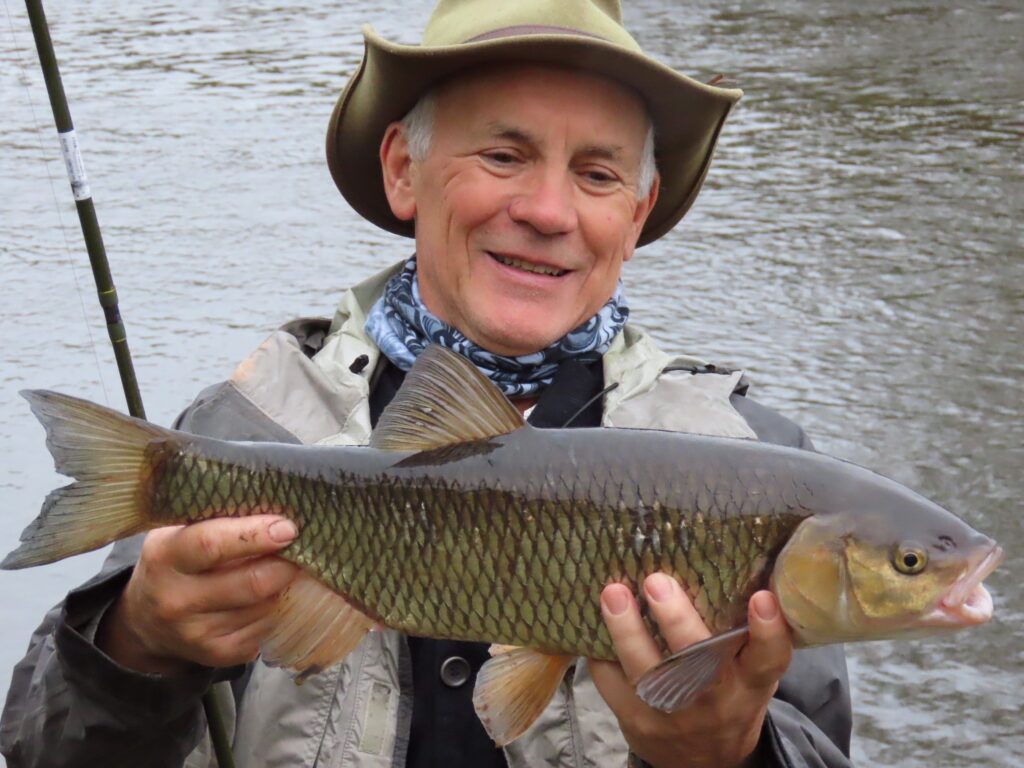
The new T.T. range includes a 10ft Bomb rod. The traditional “bomb” title doesn’t exclude being able to use small swimfeeders by the way. It’s designed with finesse in mind for winkling out bites when the fishing is hard, on occasions when fish are just plain difficult to catch. The super-lightweight and slim blank has enough backbone to flick out light to medium leger weights, or small feeders with up to 20g loadings. A generous four solid carbon quivertips cover wide-ranging requirements with their 3/4oz, 1oz, 1.5oz and 2oz ratings. Where this superb rod really comes into its own is with its surprising strength, combined with a lovely through action, which comfortably cushions light tackle against the lunges of bigger fish. During testing John Bailey landed a sizeable barbel from a raging big river and his mates caught chub. I targeted specimen-sized roach with no problems, just absolute delight in using such an awesome featherweight wand of a rod.
AVON SPECIAL
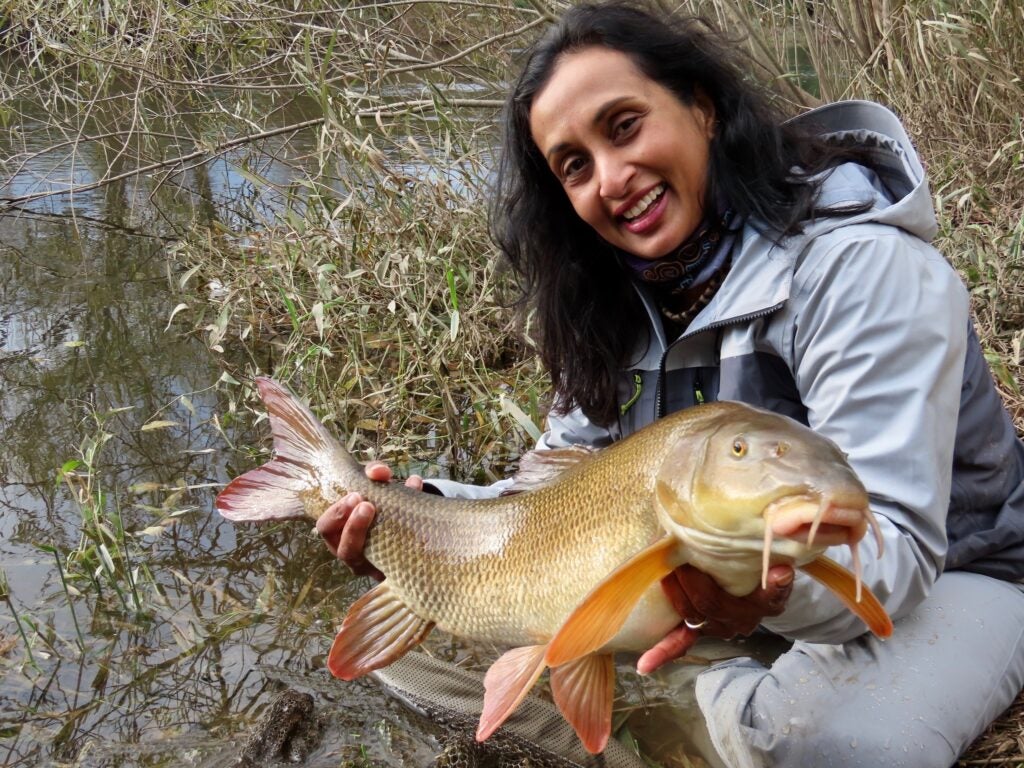
The 11ft Avon has managed wonderful fish like this with ease. It’s already John Bailey’s favourite for targeting big chub and barbel, especially when touch legering on flowing water. Every movement of the end tackle, and any attention hook baits receive, is clearly transmitted down the high modulus nano carbon blank. This rod is much faster than original Marksmans, being made from superior modern materials, retaining a forgiving nature when playing and controlling big fish. It bends progressively, never wanting to lock up, retaining plenty of low set power in reserve. John says this is the best Avon he’s ever had the pleasure to use and has well proved the point, seeing the first prototype land loads of big River Wye chub and barbel, including this huge double figure fish. A lot of rods in this category are too stiff in my opinion. This new classic can match most of them, but with a far more subtle and surprisingly lightweight action.
ON THE BANK
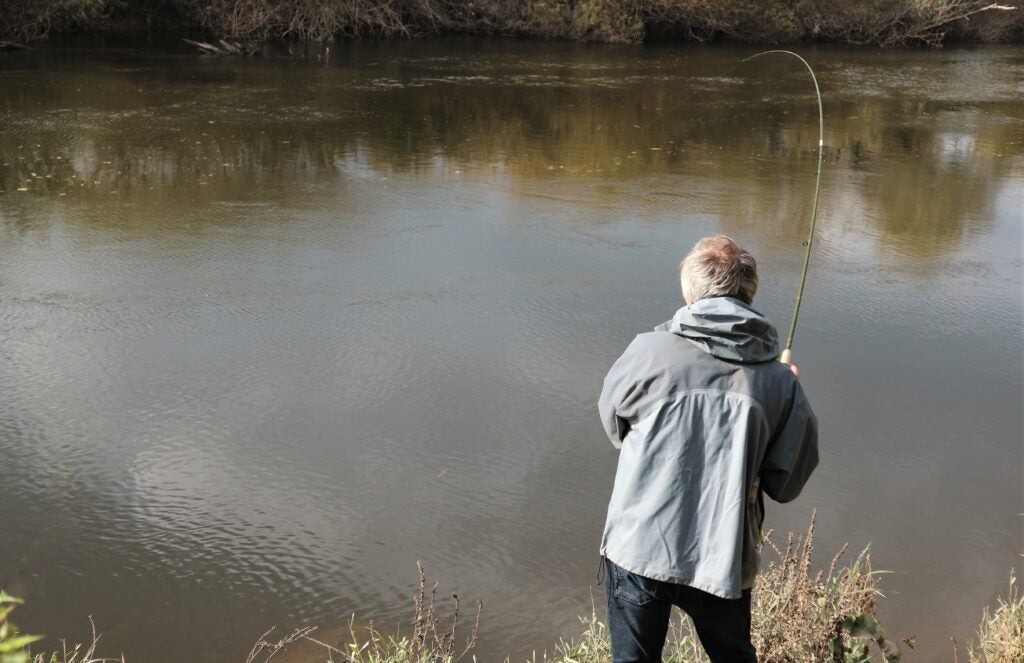
I was working on a magazine feature on a famous fishery and recognised a sales rep for a big tackle company in the distance. We had met several times and I walked around to say hello. When the chap saw me coming, he hurriedly packed a green rod away. Standing there having a chat, I could see the distinctive cordura tube of a Hardy Marksman poking out the end of his rod holdall. It often amuses me how rods can become status symbols, when in reality they are just essential tools for the job of catching fish. I think it helps making such weapons pleasing to look at and nice to own, although the rods I design don’t need lots of words on their butt sections, just their title, length and test curve – where applicable. I’ve seen rods with almost complete stories printed on them, which always makes me suspicious they might be hiding something. I like my rods to blend in with their surroundings, not stand out like sore thumbs.
FLOAT POWER
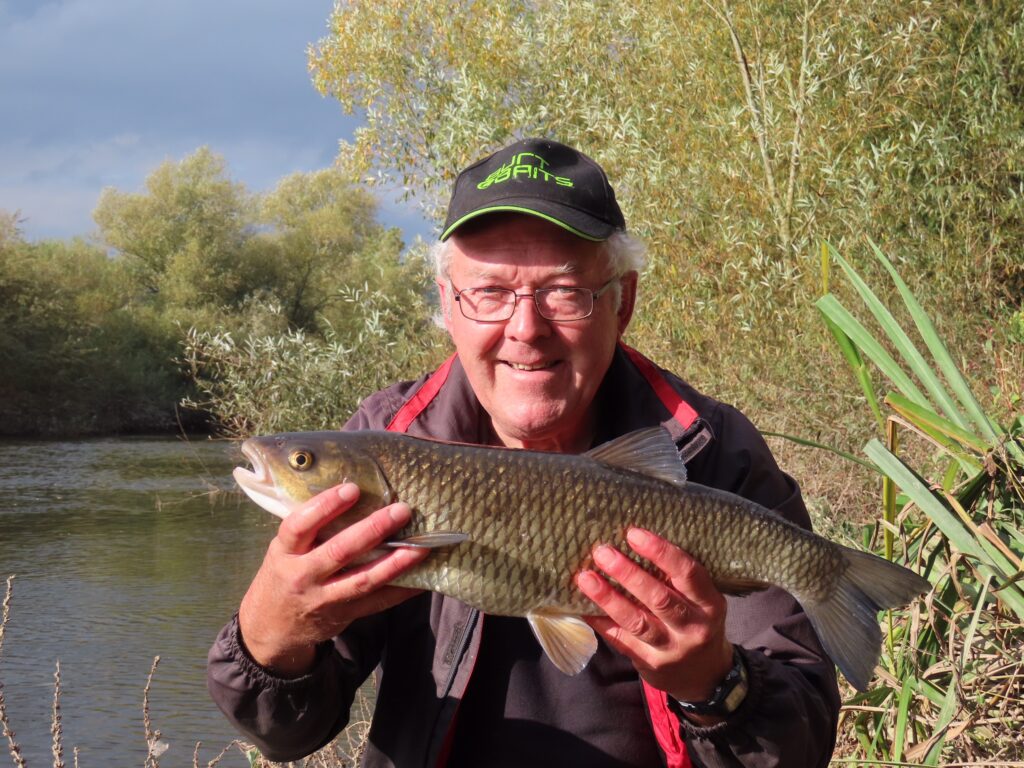
The Thomas Turner Classic 13ft and 14ft Float rods balance perfectly in the hand, without being too lightweight to sacrifice strength. These wonderful blanks can be held all day, whether punching wagglers out on stillwaters, or running stick floats through on rivers. They are a joy to use, crisp when mending or sinking the line and super-fast when hitting bites. They comfortably handle big fish, never wanting to lock up thanks to their state-of-the-art nano carbon construction. During early testing, some whopping river chub were landed on surprisingly light tackle, the same applying to wild stillwater carp. They really are go-anywhere, do-anything float rods, destined to be the first choice from any serious angler’s holdall. They can happily be used with light, delicate floats – right through to big loaded wagglers and sliders. They lap up punishment from big fish, having a unique balance of a forgiving nature, matched with power in reserve.
JOINING THE CLUB
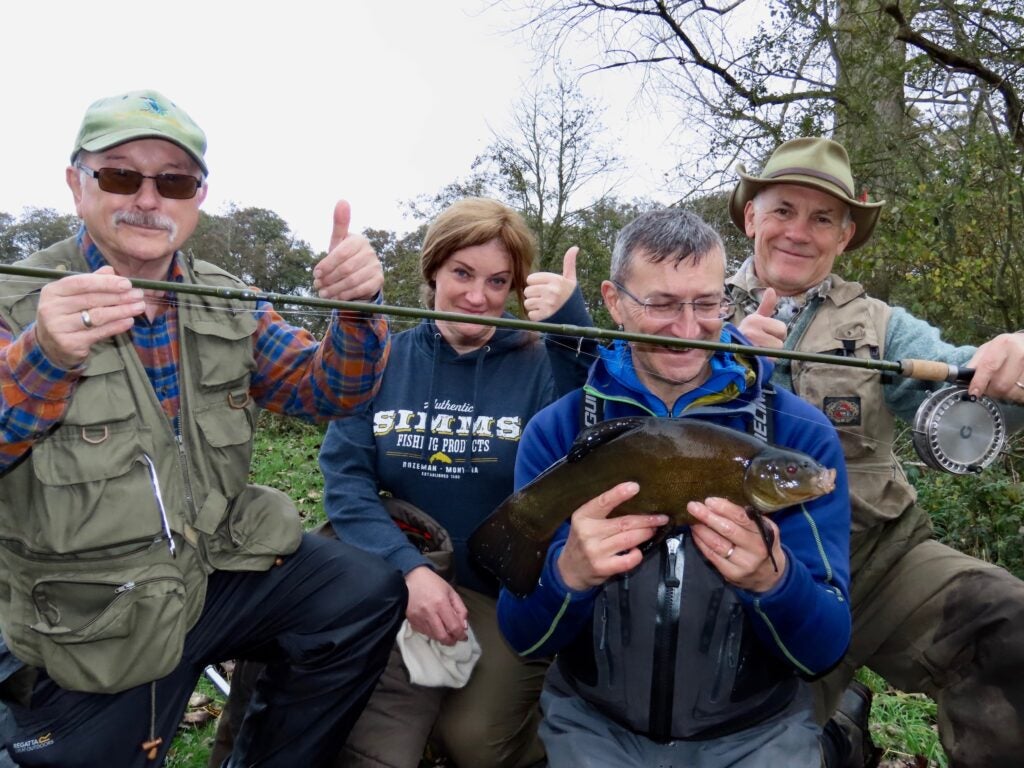
Hardy Marksman coarse rods were launched in 2006, becoming hugely popular, but surprisingly, production was halted when Pure Fishing bought the company. This move left lots of coarse anglers disappointed. The demand for Marksmans has never ceased and second-hand ones have held their value exceptionally well. Because Thomas Turner can’t source enough of these wonderful rods, they are making their own version. Latest nano carbon technology has the ability to make rods lighter, faster in action, and yet stronger. That’s exactly what has been achieved with the new range of T.T. Modern Classics. In a nutshell they are “Big Boy” rods, designed with natural venues in mind, but of course they can be used just about anywhere. They feature beautiful actions and a classic finish, crafted for discerning anglers, supplied in custom-made protective Cordura tubes. Each rod is fitted out with hard-wearing, smooth-running high-tech ceramic lined guides and top-grade cork handles. Quite simply, they make fishing an even more pleasurable experience.
The post Thomas Turner Classic Rods appeared first on Fish & Fly.
Lure Fishing with Robbie Northman #56 16 Mar 2022 2:21 AM (3 years ago)
Season’s End
The end of another season of angling has drawn to a close. It’s a time of the year I enjoy, a rest, a chance to clean a very messy tackle shed, and to reflect. I slipped out for one final outing in the glorious weather on March 14th. A hard day, but a few pretty pike and a pub lunch made me content. It wasn’t a bad ending, I managed to put in a little bit of time through the final weeks of the season, to say it paid off would be an understatement. At the end of a really tough day, I was rewarded with an epic fish…
I decided on a late start, with clear water conditions I expected the fish would feed best close to dusk. 2.00pm, I loaded the boat, rigged my rods, and set off in search of some end-of-season bruisers. I spent about half an hour checking the usual areas with side scan, finding very little activity in the bright sun. To pass the time I moved on to fishing cover and shaded areas, eventually tempting a few perch and pike. Slow techniques in tight cover did the trick. A tiny ned craw just hopped along the bottom, hop, pause, repeat. Simple, yet very effective for perch and pike. Despite using such small lures, I expected regular pike encounters, making me choose light wire as a hook length. Either 6lb Knot2Kinky or 10lb Drennan Soft Strand. Both being very easy to knot.
As the light levels began to drop, I decided to resume my hunt for perch. I scanned a few key areas, eventually spotting a roach shoal with several larger shapes stationed nearby, these had to be perch, hanging out in the main channel in bright conditions. Not what I expected to find, but some of these shapes were big! I carefully manoeuvred around the shoal, setting the boat up in a position where I could cast upstream to them. Locked in my sights, visible on the live sonar as I made my first cast, using the same little ned cray that had been productive throughout the day.
Bounce, pause, repeat. I worked the lure through the swim, watching the jig flutter and fall in front of fish. Zero reaction! They couldn’t have been more switched off to the style of lure. I mixed it up again, switching to a much larger swimming-style crayfish. Bigger movements, with a slow drop and pause. This time they flinched. A couple of the smaller shapes moved slightly towards it, inspecting the jig before settling down. Bigger movement was aggravating them, but they weren’t willing to feed aggressively.
I grabbed the twitching rod from the rod rack. A 7-23g SG4, with a 15g Gravity Twitch 95, roach-style pattern with a yellow belly. I worked the lure over the shoal, twitch, twitch, pause, wind, repeat. This time a couple of bigger fish moved in to investigate, following right to the boat. After a few more casts with similar reactions, I decided to stop. Close to dusk, I let the fish settle down for ten minutes before trying again in the fading light.
As the light began to drop, more roach appeared, and the shoal began to move, the odd fish breaking formation, checking out potential food. Now was my perfect opportunity. I cast beyond the fish, beginning an aggressive retrieve. A sequence of aggressive twitches followed by a long pause. Erratic and aggressive, yet slow at the same time.
Twitch, twitch, boom! The tip slammed around, I was in! Machine gun thumps as a powerful fish kited to my left. This one felt really big. Suddenly, it swam to the right, heading toward my bow motor, then diving beneath the boat. Beneath me I felt the full weight of the fish, growing increasingly nervous. It ran back to open water, breaching the surface. A goliath perch appeared! I couldn’t reach the net quickly enough as the beast thrashed at the surface. However, luck was on my side as I landed another giant at 48cms and over 4lbs.
I unhooked the fish, quickly casting again, bang! Another great fish on the line. Slow thumping headshakes made me nervous. Surely there couldn’t be two that size? I readied the net for a second goliath as another great perch breached. Not quite the stamp as the last fish but another great perch in the 3s. I unhooked the second fish and cast again, this time without a bite. Making another cast, this time I slowed it down, a couple of twitches, and longer pauses.
Twitch, pause, plink! A faint tug and I set the hook, feeling the headshakes of yet another decent perch. A smaller fish, perhaps in the mid 2s, a great specimen in its own right. I netted the third and cast again, this time without results. Several casts later and I’d added two more scraper 2s to the tally and the perch shoal had finally moved on. I took a few quick photos and slipped them back. One last haul of the season.
The post Lure Fishing with Robbie Northman #56 appeared first on Fish & Fly.
Lure Fishing with Robbie Northman #55 9 Mar 2022 1:13 AM (3 years ago)
Ten Minutes of Magic
It was time for a day out that I look forward to every year. A visit from Kevin and Ken. I’m joined each winter by the guys, who make the journey up to visit me in search of a big perch. Last year proved challenging, with a few fish up to low twos. However, this year conditions were perfect.
We decided to meet in darkness, preparing the boat, ready for a long motor towards the first spot. As daylight broke we set our course, through freezing mist and icy wind. A cracking start followed, the first spot of the day producing a couple of fun-sized pike and a perch. A confidence boost, and a sure sign a few fish would be feeding. Once the bites dried up we continued on, the air still freezing cold.
I soon found a couple of areas holding fish. Despite our efforts covering the zones with different techniques and angles, we managed just a few finicky bites. It was time to break for a coffee and lunch before heading out for Round Two. The weather changed dramatically. Sun broke through cloud and the temperature lifted by a few degrees, certainly more comfortable to fish in. We worked back over the productive areas for a few more hours, before switching to Plan B.
The perch had been feeding aggressively for an hour or so around last light during recent sessions. So, after fishing on the move a while longer, we decided to head to an area I had located a few fish this season. Our primary goal to catch big perch on crankbaits. We pulled up on the area, and I decided to do a few passes with the sonar. Pinpointing the fish, and anchoring up in the right place would be the key to success.
After a little searching and test-fishing I found the perch, sheltering on structure. I briefed the guys on the best area to cast, Kevin working a lure around the swim, while Ken decided on traditional bait tactics. Ken made a perfect cast to a group of big perch. It was just a matter of time, and I had a good feeling…
I watched the shoal move in on the sonar screen, then Ken hooked up to a powerful fish. This one kept its head down, kiting like a pike towards cover. A tense battle followed, powerful headshakes and slow lunges. Finally a big perch surfaced. A quick scoop with the net, a life-long PB was broken. Ken was shaking, having just set eyes on his first three pounder.
Kevin was next to hook up, connecting to another powerful fish! Determined to get under the boat, this one fought hard, taking every opportunity to return to the depths. Kevin soon gained the advantage, and I readied the net again, scooping up another great perch in the high twos. Now it was my time to shine…
Having helped a couple of good mates catch PBs, I decided to get in on the action. The perch were active, a few good fish were moving about. I spent a few minutes working crays and shads around the swim. A few small perch later, I figured these fish wanted a proper meal. I swapped over to the crankbait rod, rigging up a 15g Gravity Crank. Fishing over a snaggy bottom, I removed one of the hooks, adding a little tungsten putty to counter the weight change.
Slow and steady, I ground the lure over the snags, pausing for a moment every now and then, allowing the crankbait to lift. It didn’t take long. During a pause the rod slammed over, I was connected to another great fish. I backed the drag off, allowing the rod to flex, absorbing the head-shakes of a decent perch. Thump, thump, thump, a nerve-wracking feeling as the fish drew closer to the boat. I readied the net just in time to see a big flank breach the surface, and quickly landed my prize.
With the technique sussed out, and light fading fast, Kevin, Ken and I cast around our crankbaits. A mad ten minutes of action. Alongside some smaller perch I hooked up with another great fish, scraping two pound. Then, just as the bites were beginning to dry up Kevin hooked a good one. Working a Goby Crank deep, his rod hunched over, yet another decent fish.
I watched as powerful lunges flexed the rod blank, quickly grabbing the net. Another cracking 2lb plus fish, marking the perfect end to our session. It had gone from slow to bonkers in an instant, and just as quickly died. But the guys were thrilled, having both landed PBs.
The post Lure Fishing with Robbie Northman #55 appeared first on Fish & Fly.
The Fine Art Of Fishing 8 Mar 2022 3:43 AM (3 years ago)
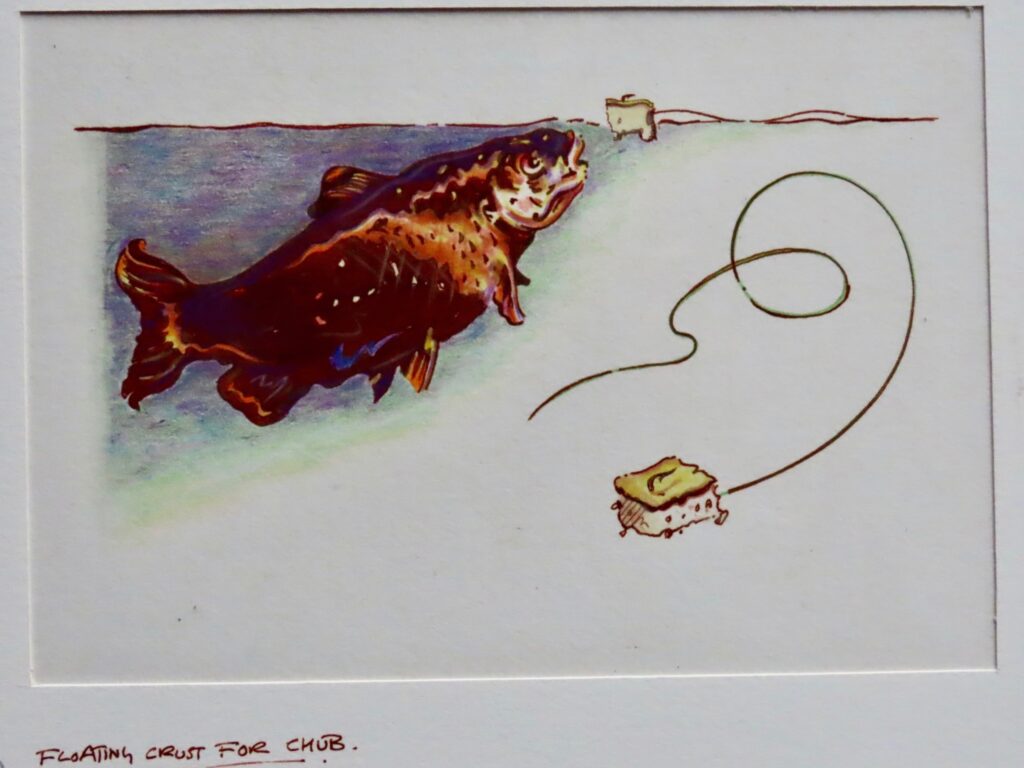
Over the past year, I have frequently highlighted the artists of one sort or another operating around the angling scene.
I have also from time to time profiled a particular angler who deserves recognition of a special kind, in my view, of course.
Today, I am talking about Rob Olsen, who amply fits both criteria.
He is a man who can fish sublimely and who can write, photograph, draw, and paint everything about fishing with equal magic.
His website (www.thefineartoffishing.com) is a treasure trove, and I guess many of you will have read either his first book “Tom’s Book” or his follow-up, “Waterlust”.
Both are shot through with angling writing of the highest order. Olsen reminds me strongly of Chris Yates but, honestly, Olsen’s words and sentiments stay with me longer.
In fact, I can quote small chunks of Olsen I read years back, so in that he is up there in my reckoning with Patrick Chalmers, BB, and even Negley Farson.
Like the last of these writers, Olsen writes beautifully about angling abroad in Spain, France, Canada, India and Mongolia. His evocative photographs only add to the allure of these dream destinations.
Olsen is very much a man for remoteness, for untrodden banks, for fishing waters his inimitable way. That is why the river Wye suits him so well, and that is where I first met him a quarter of a century ago.
Since then, I haven’t fished with him as much as I would have liked, but I have a fair idea of what would be his perfect day.
He’d ideally arrive at dawn, whilst there is still dew on the pasture and the cattle are still drowsy. He’ll travel light; a rod, a waistcoat with spare this and that, a few baits (or flies) and a net.
He’ll watch the shallows especially, careful for barbel or trout still combing there for insects, but he won’t stop anywhere for long.
By 11.00am, he will have caught a few fish almost always, and perhaps met up with a friend for a Kelly Kettle coffee and quick chat.
By midday, he’ll be in the bar (the Red Lion I guess) and after a pint, he’ll find a good place, in woodland perhaps, where he can still see or hear the river, but have a good snooze ’till later in the afternoon.
As the light loses its intensity, Olsen will regain his, and be on the prowl for a last opportunity before the drive home to Cheltenham.
This is how Olsen has caught salmon, trout, barbel, chub and grayling on float or fly, rolling baits, and wheedling baits into nooks and crannies that no other angler even knows exist.
This might sound like artifice, like those angling groups that insist you fish wearing a tie and pressed underpants, but it is not. This man fishes his own way, and looks at fish and fishing his own way.
That’s what makes him special. It’s our luck that we can read his books, look at his photographs and drawings, and appreciate the entirety of the angling world he has created.
It’s a world well worth exploring, I can tell you.
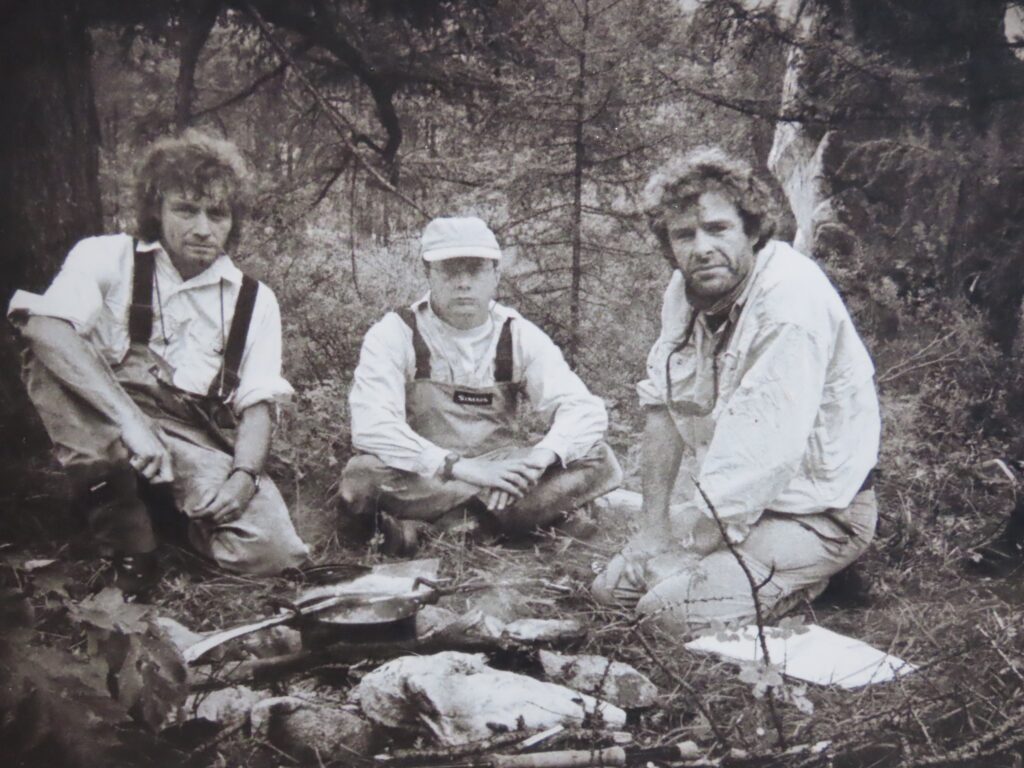
The post The Fine Art Of Fishing appeared first on Fish & Fly.
All About Flavours 8 Mar 2022 1:25 AM (3 years ago)
MAGIC FORMULAS
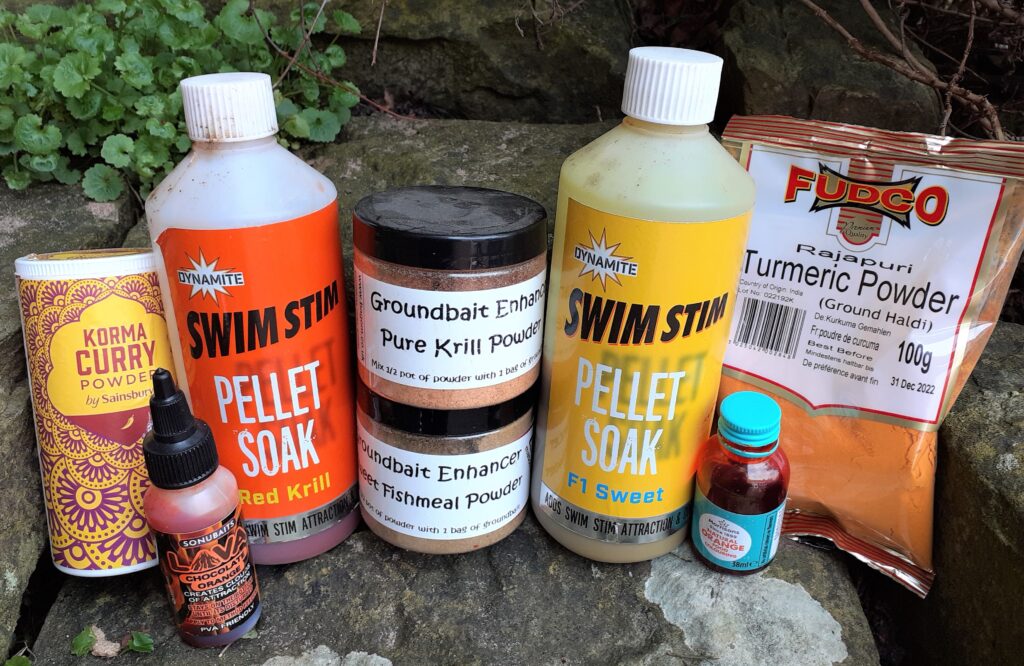
Going back to my early club days, I remember an older and wiser member spending most of a coach journey moulding some cheese into a big ball of bread paste. He went on to win the day with a top catch of quality roach, making my basic pint of maggots look a bit sad. Years later, when I ran a tackle shop, must-have flavours and additives came and went. People continued to catch fish with them and without them. There was always a big mystery factor, and I suspect much of it was sales hype. However, I began to change my mind a little when a carp angler gave me a bottle of sweet liquid, which smelt like a tangy cross between pineapple and pear. He told me he was fed up with catching everything but carp when using it! I tried the mix on maggots and won a winter league section by a country mile, while nobody around me got a bite. I caught loads pleasure fishing with the flavour too, also enjoying a runaway match win with it.
PLAIN SIMPLE
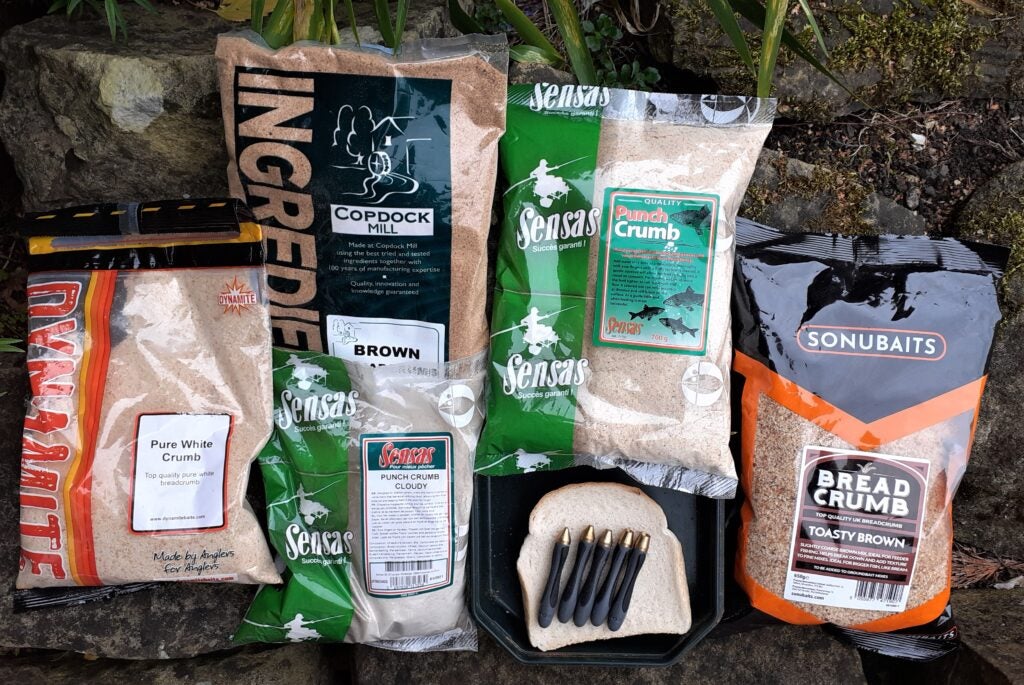
Thinking I was going to clean up with the fruity cocktail that caught everything (except the carp it was intended for) soon came to a disappointing end. When I asked the chap who gave it to me if he could make up some more of the liquid additive, he sadly declined, saying he couldn’t remember all the ingredients that were used. My visions of cashing in at the draw bag quickly evaporated. At the time I was discovering other bait tricks that made a difference. I got into bread punch fishing, after finding the method worked particularly well on several favourite canal stretches. The fish loved small pellets of fresh white bread on the hook, but could be fussy about what was fed with it. Plain tackle shop crumb worked okay, but when I experimented with some gear I made myself, I caught loads more and the fish got bigger. My groundbait smelt like new loaves from a bakery, while some commercial crumb was bland and even sour in comparison.
GOING TO SEED
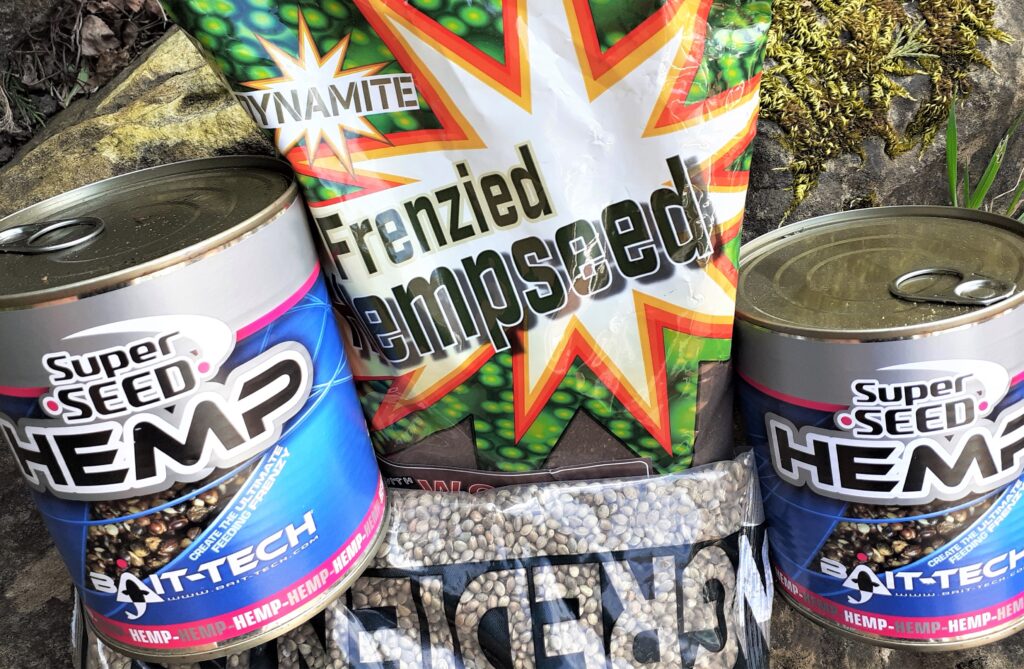
I remember when hemp seed made a huge difference. These days hemp is probably used more by carp anglers in their spod mixes, but that wasn’t always the case. There were places where hemp was fed so regularly, you were wasting your time without it. I don’t think it was addictive as many believed, but more to do with fish becoming reliant on something that was constantly available to them. This trait has become apparent with other types of popular offerings like pellets, which currently dominate so many fisheries. Hemp isn’t used as a main line of attack by many general coarse anglers now, in these fishmeal-orientated times, but it’s still a big ingredient in a lot of groundbaits. This oily, nutty smelling bait vaguely resembles tiny water snails and occasionally it still works wonders for me, being handy in convenient ring-pull tins. Not so good on carp puddles, but still has the potential to be highly effective on wild venues.
IN THE BAG
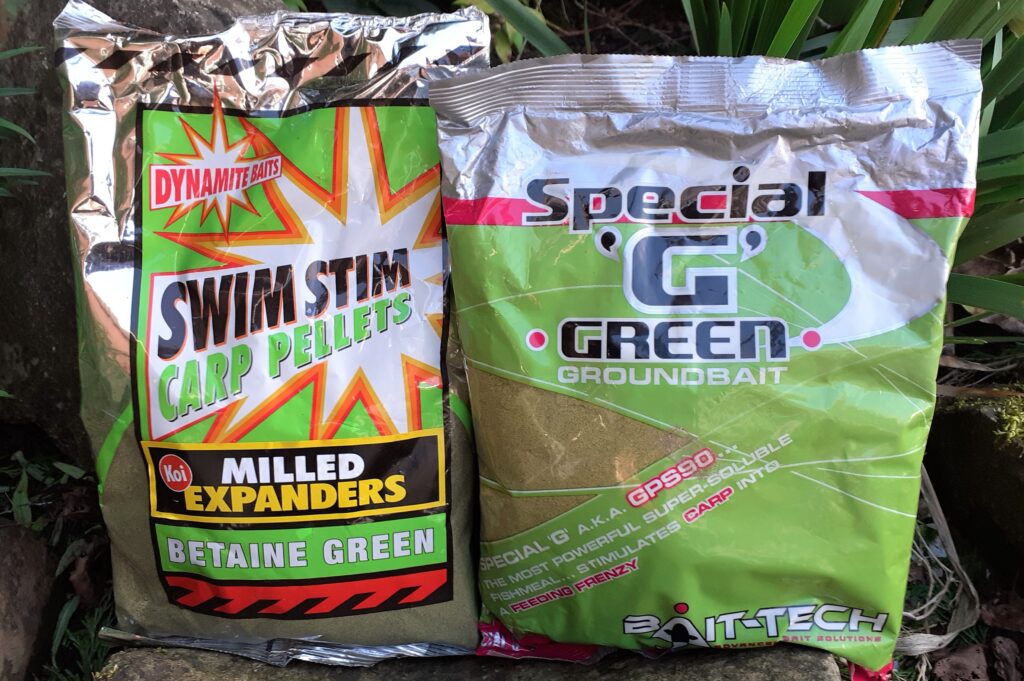
We all have our favourite groundbaits, whether originally attracted by fancy packaging, clever marketing, or hearing about effective products through word of mouth. Many of the long-lived recipes have proven track records, but the most effective way of finding the best ones is to use them as paste on the hook. This quickly eliminates duff stuff, and there have been a few mixes I’ve tried over the years that were swim killers. Two great concoctions that stood out were milled expanders and Special G Green. Apart from carp, milled expander pellets attract lots of fish, not just on commercials where fishmeal and pellets have become an important part of the food chain. Add some of this potent powder to any groundbait and skimmers in particular love it. It’s already an important ingredient in many recipes anyway, because it works so well. The same applies to Bait-Tech Special G Green, one of the very best fishmeal mixes.
NATURAL CHOICES
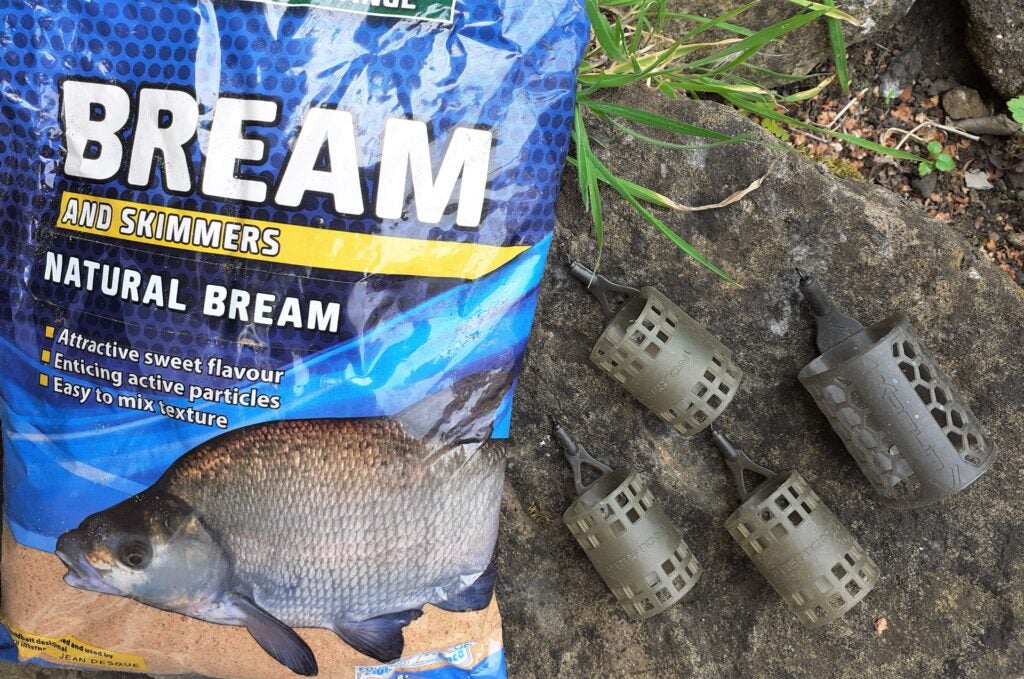
Pellet and fishmeal don’t work everywhere, I’m almost pleased to say. Any products that contained these ingredients used to be the kiss of death on many carp free venues, but that trend gradually began to change as more anglers began feeding these products. But there remain wild venues where anything with a fishy aroma doesn’t work that well. Natural or sweet groundbaits continue to be far more effective, along with using good old favourites like maggots, casters, sweetcorn, hemp, bread and worms. A pellet-free zone is not a bad thing occasionally! On venues that hardly see any pellet feed, I’ve experimented with fishmeal and natural groundbaits. I quickly discovered high fish content had a limited impact, pulling fish fast but not for long. Less potent mixes worked so much better and for greatly extended periods. I found skimmers, bigger bream and tench the first species to switch over to fishmeal, while roach tended to lag way behind.
BEING SELECTIVE
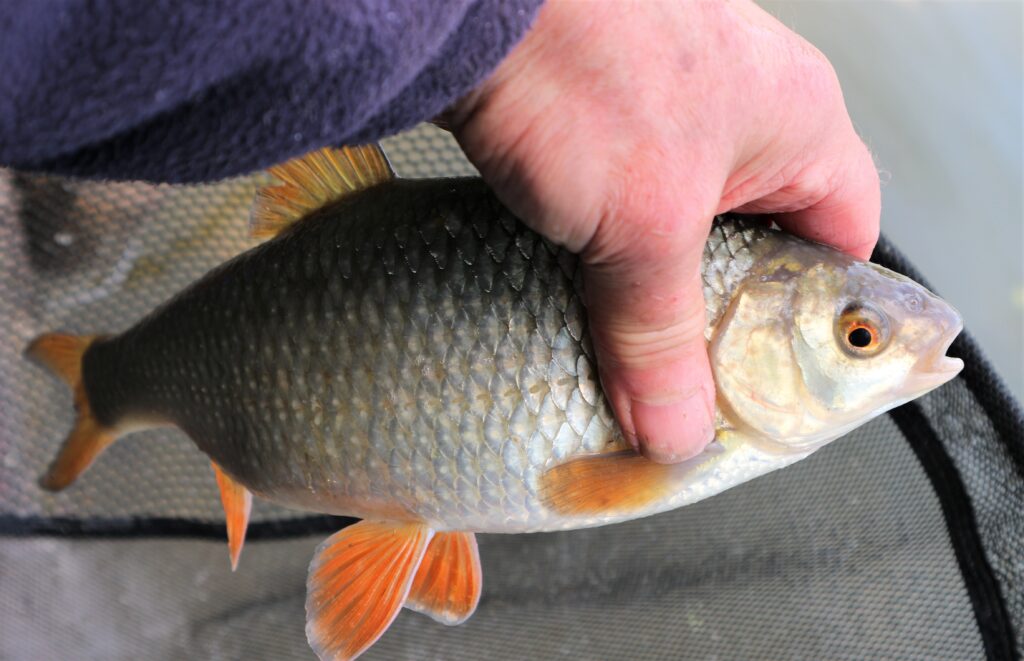
While big roach are sometimes accidentally caught on baits like pellets, boilies and the like, they only show up occasionally. I think most of the time they learn to forage on the smaller bits and pieces of grub carp anglers heavily spod or chuck in. I’ve also discovered when targeting carp, bream and tench with pellets and fishmeal groundbaits, that very few big red fins turn up. Yet, feeding with proper roach groundbait on the same venues, along with natural baits they prefer, roach can show in big numbers. I’m talking about fin- and scale-perfect fish, many well over the pound mark, that have obviously never been caught before. These big boys are marvellously clever, but with extra guile they can be fooled, even on the busiest of day ticket venues. It becomes a game of cat and mouse, carefully looking for overcast wintry days, fishing on until it gets dark, using small hooks, light lines, well thought out rigs, and feeding ultra-carefully.
KRILL FACTOR
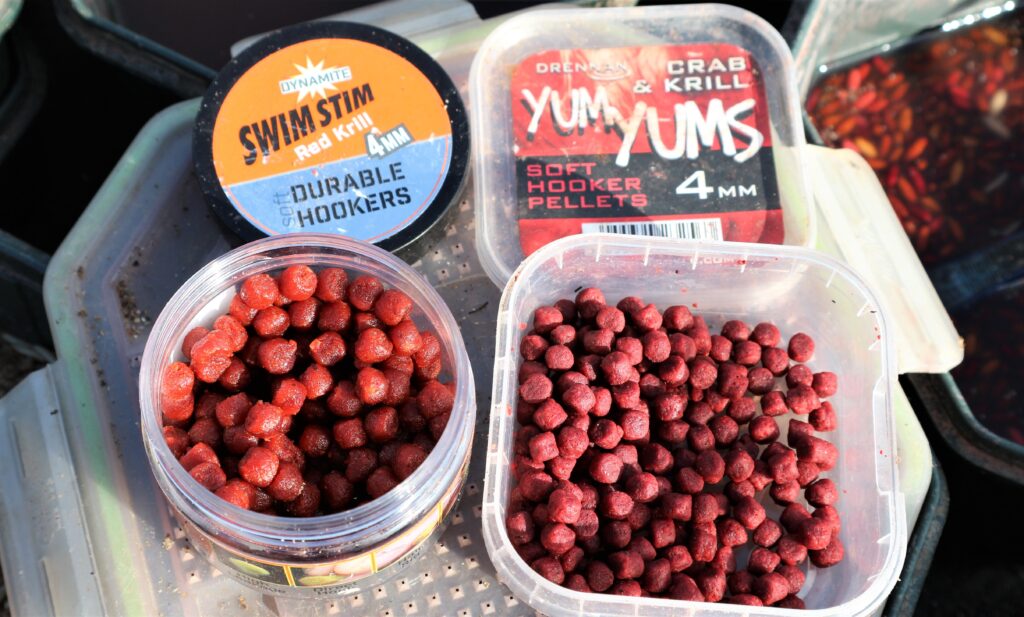
I was late getting into using krill, thinking this additive was just another sales pitch. I don’t really like the smell of krill groundbaits and pellets anyway, but have to admit there’s something about these products that works particularly well. Simply feed this flavour in crumb or micro form, or catapult out some larger pellets, and you are almost guaranteed a busy day on many venues. Most species respond, even perch surprisingly. I’ve caught quite a few perch on krill pellets, so I now add some of these in micro form when using chopped worm for that species. A few local lakes I fish don’t allow groundbait, but pole cupping some krill micros is just as effective for skimmers and roach, with bonus tench, crucians, rudd and carp often turning up. Apart from combining krill feed pellets with baits like red maggot, casters and worms, I like using Dynamite 4mm Krill Durable Hook Pellets (which are nearer 6mm) and Drennan 4mm Crab & Krill hookers.
TEMPTING THEM
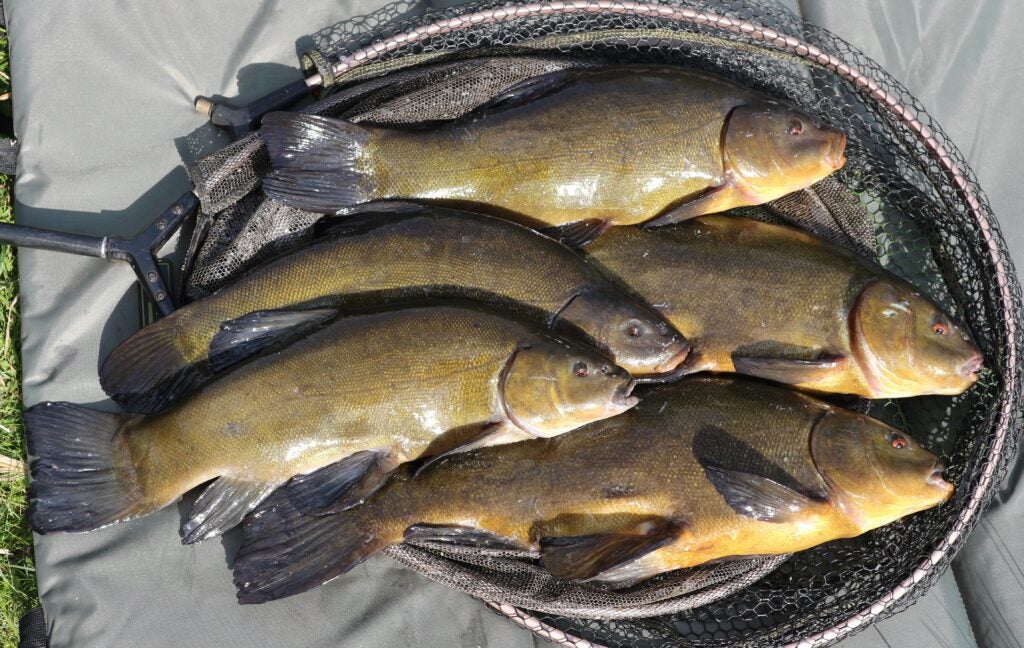
Krill has completely changed my tench fishing tactics, after finding both red groundbait and pellets steeped in this flavour score heavily. Most times I use krill, I enjoy a busy day. When I don’t use it, sport is less hectic. In warm weather a mixture of krill groundbait and micros is often enough to get tench fizzing clouds of bubbles. I once added chopped worm and casters, but found those baits pulled in too many nuisance fish like rudd and small perch. A 6mm soft hook pellet is normally large enough to bypass these and find tench, although I like to try large dollops of krill paste on a big hook at some stage. One lake I fish has lots of bream and they respond well to loose fed 4mm krill pellets, switching between double red maggots and similar flavour hook pellets. The big perch in another stillwater, respond to krill groundbait, laced with similar flavour micros and a bit of chopped worm in a cage feeder, using prawn or worms on the hook.
MIGHTY MEAT
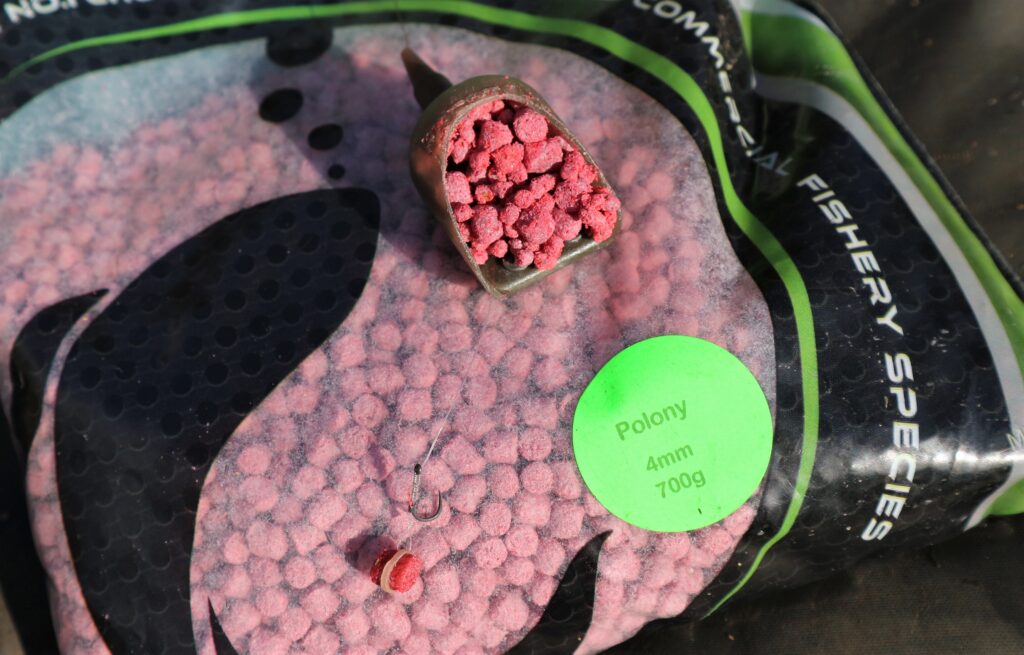
I was out of the habit of using meaty flavours and baits, until I went back to the River Trent, after moving closer to it. Many barbel anglers on the stretches I visit use pellets these days, so I tried some with a strong meat aroma, using similar groundbait to hold them in a feeder. I was getting blitzed by small dace, roach and bleak, so I tried banding a 6mm hard pellet and to my amazement started catching quality roach and the odd skimmer. This gave me the idea of experimenting with a pellet feeder when I went for a couple of days’ fishing on the River Wye. Using a mixture of micro and 4mm pinkish red Polony feed pellets, simply banding a 6mm version on the hook, soon provoked some savage takes. Big chub responded almost straight away and I think I might have had a barbel attached at one stage, but it came off. It makes sense to me to use meat flavoured pellets, because of the way baits like luncheon meat work so well.
CHANGING DIRECTION
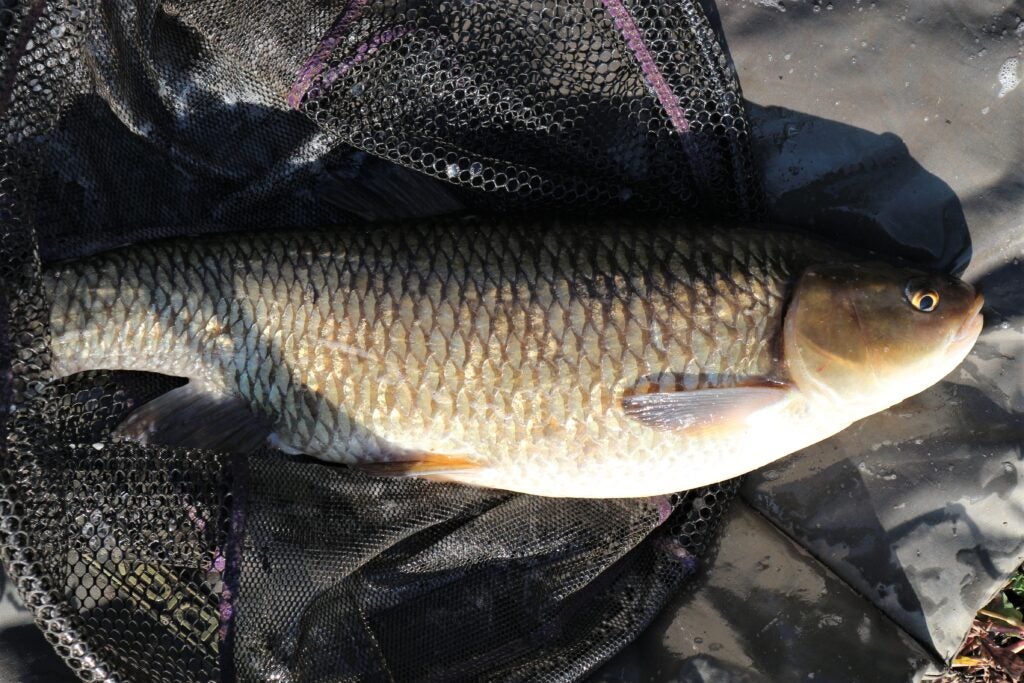
For many years I wasn’t totally convinced that bait flavours and additives made such a huge difference, trying to tell myself that anything I caught with them would have probably happened anyway. But gradually, some of the experiences I’ve previously mentioned here have begun to change my mind. I still believe there’s never going to be a magic formula that will catch everything in your swim, but I do think certain baits can be enhanced to increase their attractiveness. This big brute of a chub responded almost instantly when I started feeding meaty pellets, after several hours flogging a river swim with my usual hemp and caster attack. Those baits can still work, but weren’t finding fish this big, also having trouble getting through teaming shoals of minnows, dace and bleak. Some flavours and recipes appear to be superior to others in some situations. If nothing else, they boost your confidence, using something you like and trust.
FULL CIRCLE
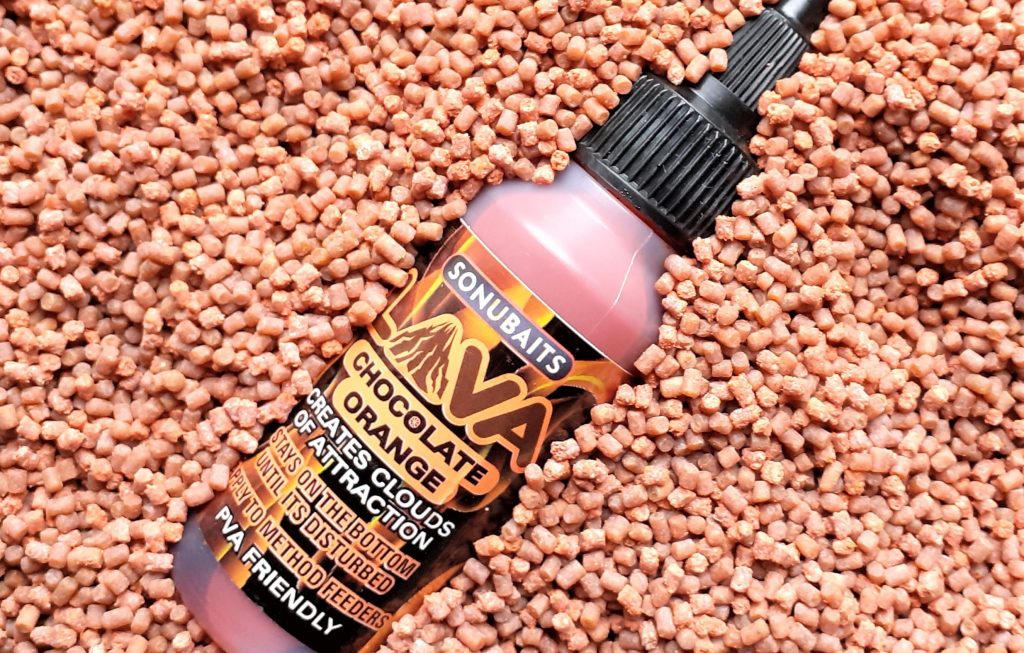
Of course, it had to happen. Just as I was getting my thinking straight about flavours, a mate hit me with a curve ball. When he first turned up with chocolate orange pellets and matching groundbait, I thought things had gone a step too far. I laughed, the bailiff had a good chuckle too, but we were both quickly brought back to earth when he emptied the lake. He did the same thing again a few days later, on the water next door. To help underline this wasn’t a fluke, I was given a bag of the new stuff and went back where I had struggled. It was completely different and I bagged up all day. A couple of years later, back on the same venue where it all kicked off, my pal gave a bag of the sweet chocolate orange groundbait to the bailiff. He later used it next to me, combined with a cage feeder, adding just a few red maggots to the mix. Crazy action followed, with skimmers and other quality silvers waking up in the freezing cold conditions.
BELIEVING HELPS
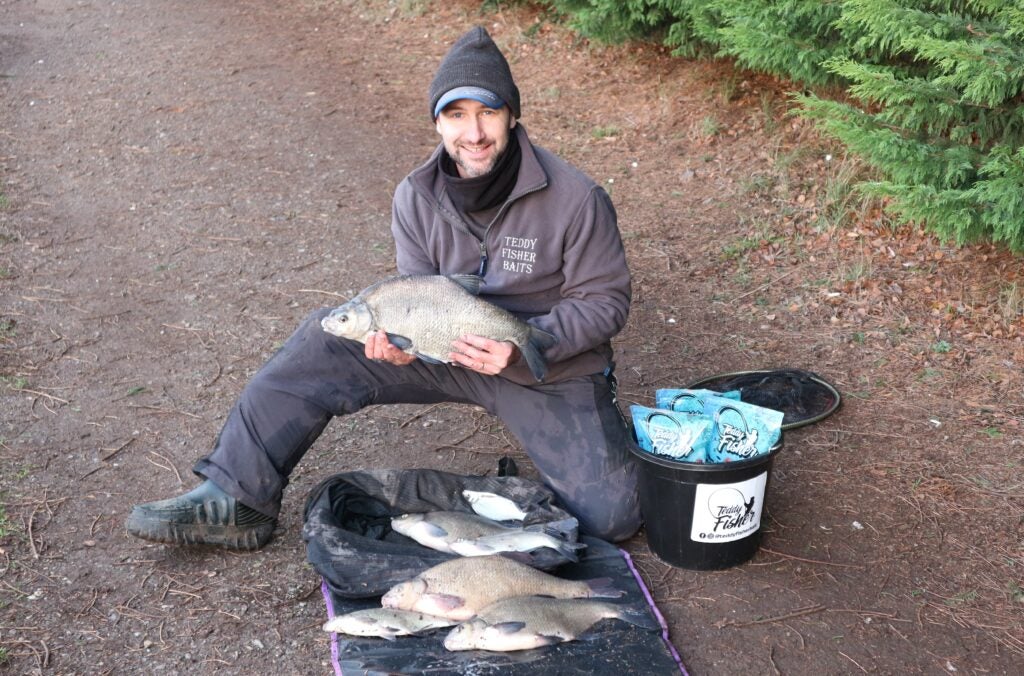
Another friend is a bait disciple with Tommy Fisher products, made in Sheffield. Whenever I go fishing with the other Dave, he is always showing me interesting stuff, whether it’s pellets, groundbait or various hook offerings. He is a very accomplished angler, but also has great faith in what he uses and nearly always bags up big time. I watch all this closely and I’m convinced the quality bait he uses (and believes in) provides an important edge. I will never forget the time when the editor of an angling publication I was working for received a big box of groundbait samples from a new company. He would have a fish nearby, while I got my act together before we started a photo shoot for each feature. Suddenly he was struggling everywhere we went. I was bagging up and he couldn’t buy a bite. He tried to offload some of the groundbait on me, but mixing some up, it smelt like the contents of a dustbin. That’s where it ended up.
The post All About Flavours appeared first on Fish & Fly.
March 3rd Breakthrough 3 Mar 2022 8:36 AM (3 years ago)
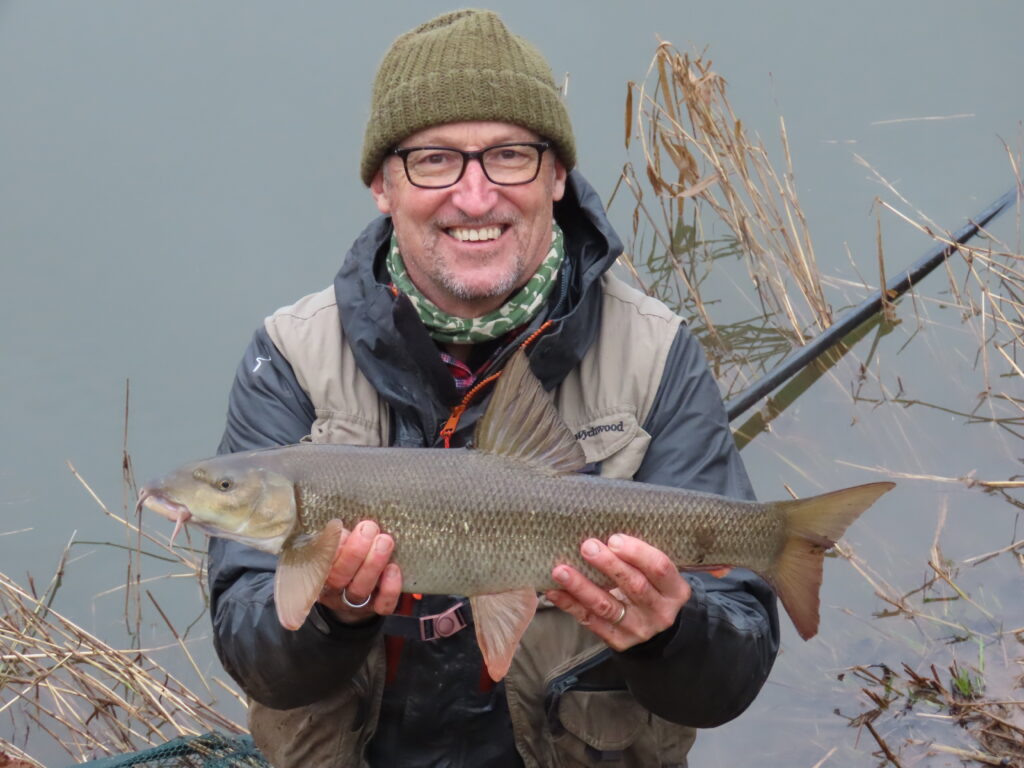 So… there you go… a barbel every month of the winter, though I accept March might officially be the first month of Spring. Not angling’s greatest achievement ever, but a good thing to have accomplished in some small ways I suggest.
So… there you go… a barbel every month of the winter, though I accept March might officially be the first month of Spring. Not angling’s greatest achievement ever, but a good thing to have accomplished in some small ways I suggest.
March 1st was tough, as I reported on the day. Low temperatures. A harsh Easterly wind. A totally dead river.
March 2nd, Enoka and I arrived at 2.00pm, and left when her bones were aching at 5.00pm. Yes, it was cold, but the previous night had been 2 degrees, and during the day it reached 8 degrees, so the 10 degree rule had been recorded. The swim, perhaps as a result, did have feeding fish in it. But it was all on the cusp. The tip barely nodded thrice. Just before 5.00pm, it did move six inches, hesitated, and then fell back. Could I have hit that? No. Not really, I’m pretty sure. Still, I drove home actively looking forward to the next trip.
March 3rd. I arrived at 8.00am. Looking at weather forecasts and my diary, I reckoned my window was a small one, and that today could well be make or break. Almost immediately, the tip flicked twice. Nothing to strike at, but a continuation of last night’s encouragement. I decided to touch leger and settled into relaxed pose!
10.00am and the very faintest movement could be felt on the fingers. The line was telling me something, that fish were down there, not summer active but at least showing life. Fifteen tense minutes passed. Again, the slightest of plucking, and out of nowhere a pull distinct enough to show on the tip as well. That was it. I went for it and my March barbel came to the net after an agonisingly brutal eleven minute fight.
Now, at nearly 5.00pm, drizzle has become stair-rodding rain, and I fear the river could be anywhere by tomorrow. Dear friend Simon Ratcliffe won’t worry… he got his barbel two hours after mine. But with the season wending to its ending, I’m a happy man to have inched past the post.
I’ll let it sink in, brood, and perhaps come back to you with any conclusions that might not be a waste of your reading time…
The post March 3rd Breakthrough appeared first on Fish & Fly.
Dave Coster’s Fishing Diary – February 2 Mar 2022 11:08 PM (3 years ago)
TOUGH CUT
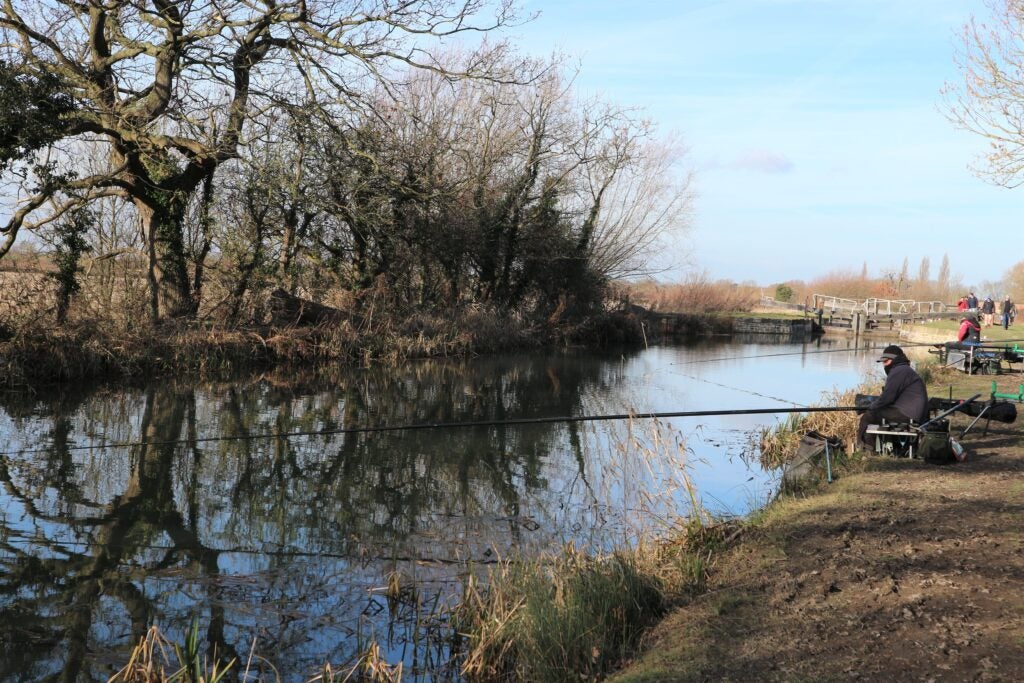
After the first tricky match on the Grantham Canal back in January, I wasn’t expecting anything different early February. It was cold with a stiff breeze blowing through the trees opposite. At least none of us got our cars bogged down this time, parking up on the access track to the lock and walking down onto the Half Mile stretch. The match was split into two sections, attempting to put everyone on a few fish. I couldn’t see anything wanting to be tight against the reeds on the far bank in the shallow water, so for my long feed line I concentrated just down the shelf, where it was a bit deeper. Plumbing around closer in with an even lighter rig revealed a weed-free area, just short of the middle. I fed that with powdery dark groundbait and a few red pinkies, cupping in chop and casters over towards the far side. It was a dismal five hours. I scratched out 20 sprats close in and caught zero across, narrowly winning the section with 11ozs!
STORMY WEATHER
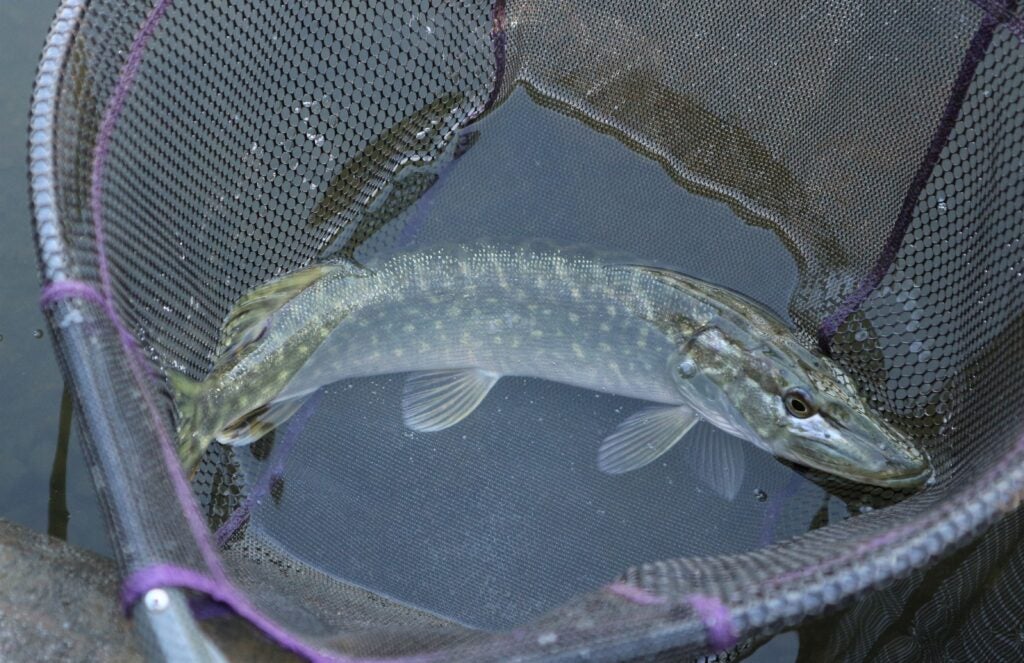
Storm after storm swept across the UK for much of the month and it was very cold sitting out in the icy winds. Quite a few of my outings concentrated on the big Specimen Lake at Woodland Waters, where there are some reasonably sheltered areas when the prevailing westerlies are blowing. I found a lot of fish had moved into the long bay down near the Match Lake and spent several sessions in that area. I quickly discovered helicopter rigs and small maggot feeders could still catch plenty, while groundbait feeder tactics were pulling lots of skimmers. I was hoping to find the big roach that often show at this time of the year, special fish over the 1.5lb mark, with chances of a two pounder. The usual pattern emerged where it took a good hour to get bites, but once they came I enjoyed some busy sessions. The only problem was getting through the smaller roach and hybrids, plus bigger skimmers up to 2lbs. Pike were very active too.
SWITCHING TACTICS
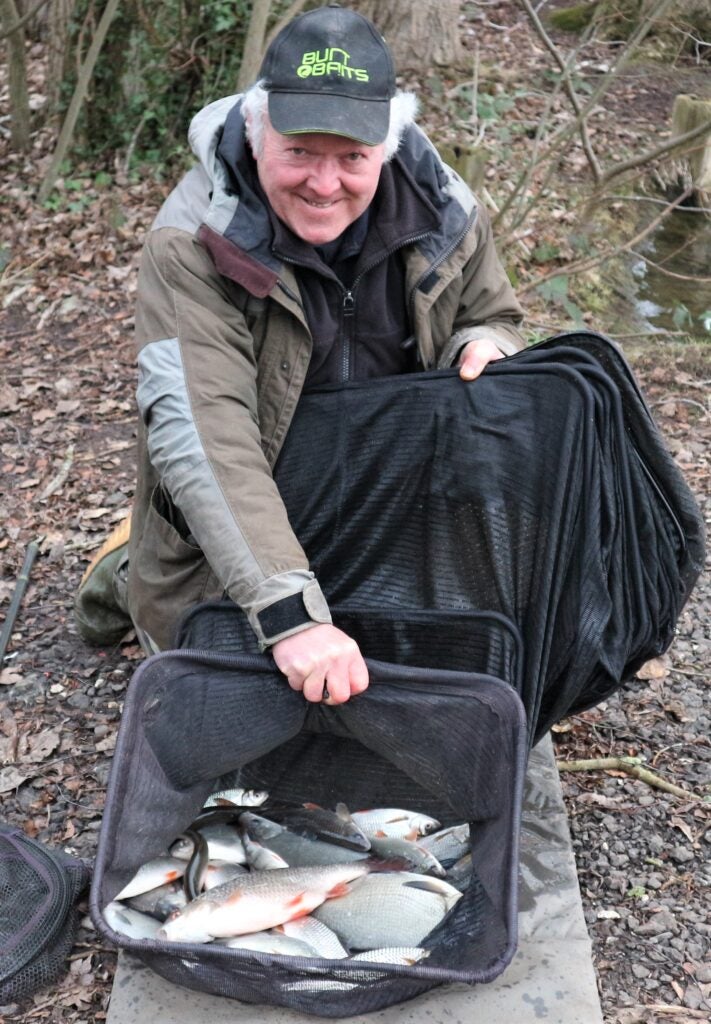
I’ve caught most of my big winter roach from this venue alternating between a groundbait feeder and the long pole. The latter normally comes to life late afternoon. I know when to change to it because I use an active groundbait well laced with tinned hemp. When fish move over this, they disturb the oily nature of the feed and it sends fizzes of tiny bubbles to the surface, creating a mini oil slick. Only trouble with both methods this year has been the explosion of skimmer bream. They are great fish to catch but are tending to push the roach out when using groundbait close in, or far out. Skimmers still butt in on maggot feeder tactics, but not as much, so the helicopter method has been finding a lot more roach and big hybrids. It’s generally been a case of working through the small stuff and enjoying the odd big fish turning up. As is often the case with roach, cold bright days have been hard, overcast and windy ones have been good.
ON TARGET
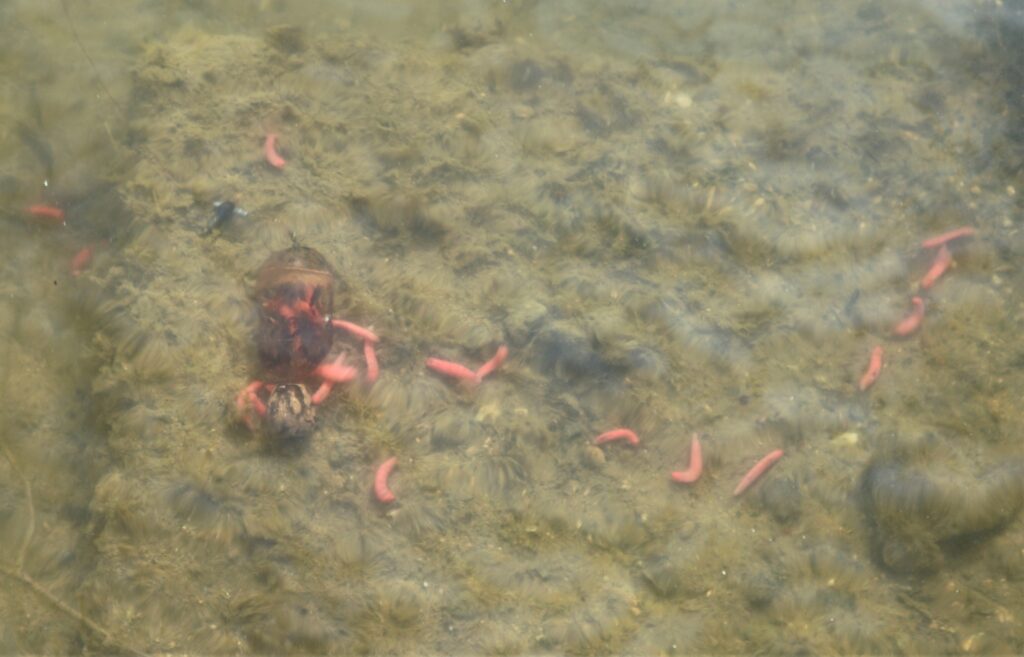
I’ve recently found small Drennan Carp Maggot Feeders excellent for helicopter rigs, casting extremely accurately and releasing their loads quickly. I’ve also discovered each feeder loading doesn’t release as I imagined, because most days there’s quite an undertow on the big lakes I regularly fish. Experimentally dropping a loaded feeder into the clear margins, saw the bait coming out fast, but also being swept by the current into a long trail – in the direction of the water movement. This put my slightly longer hook length perfectly amongst the released red maggots, whereas the tradition way of having a mini-trace set well above the feeder would put hooked grubs well out of the way. Also notice that by using a black waterproof felt tip pen on my feeder, how it blends in better with the bottom terrain. I was surprised how even tiny Stotz weights, locking the bead swivel on my 5inch hook length, stood out.
PERFECT PLACING
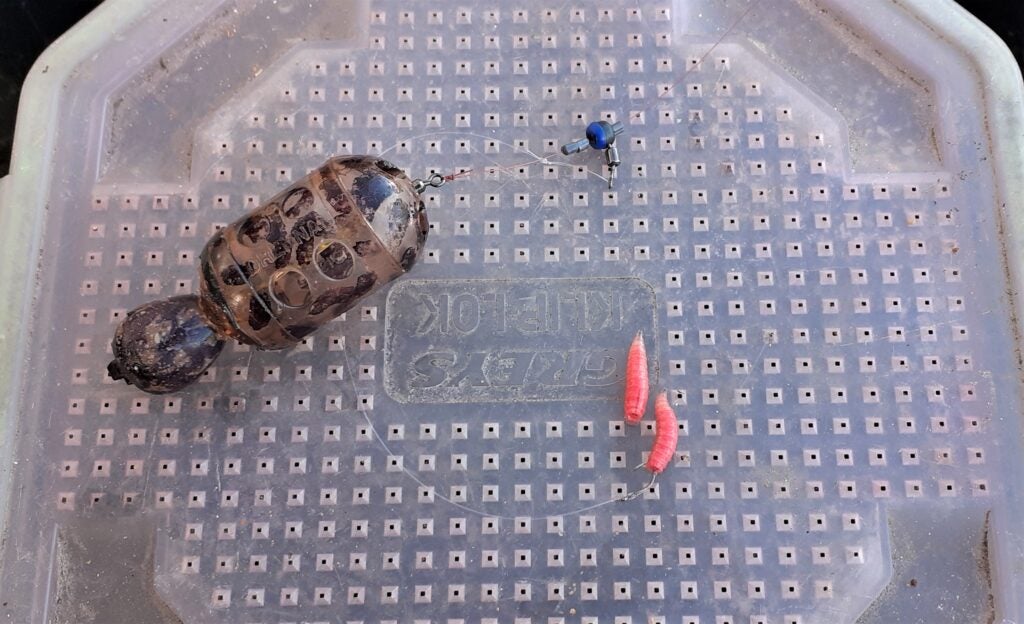
To confirm my hook bait was ending up in the right place, I cast out with one maggot on this occasion and wound back with another one caught in the bend of the hook. Incidentally, these Drennan blockends have now been altered, with later versions having smaller interchangeable lead weights installed. I have found weight forward designs like this don’t cause line spin as much as side lead models. This is important because it stops that annoying occurrence of the main line wrapping back around the quivertip when baiting up. At the end of sessions I unclip the main line and cast the rig a bit further. I then wind back with the mono running through the forefinger and thumb of my right hand, which is supporting the rod in front of the reel. If you do this a few times and hold the feeder just above the water after it has been retrieved, it spins for ages. After a couple of chucks this stops because a lot of twist has been removed.
WANTING MORE
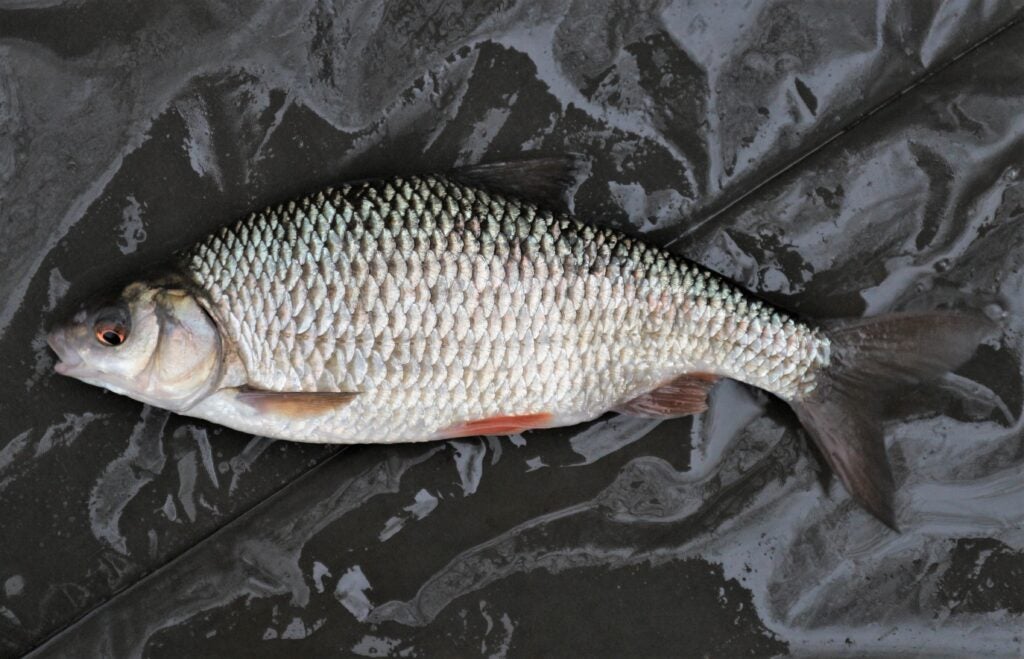
It was turning into a productive month fish-wise, but frustrating, only getting the odd glimpse of bigger roach like this one. Too many “bits” have been turning up this year, good for the future but making things tricky. Over past winters the smaller silvers have tended to switch off when it gets cold, providing better chances of finding the bigger red fins. But this time round, when the small stuff has shut up shop, so have the bigger ones. I think some of this is down to the unsettled weather. I’ve noticed in the past that long cold periods can put small fish off feeding and let the bigger ones get a chance of finding your bait. This year it has been cold for a few days, then windy and milder, then cold again, following through with that pattern most of February. I’m not complaining because I always enjoy catching lots, but it would be nice to string a few of the jumbo roach together, before they do their usual disappearing act.
EXPERIMENTING FURTHER
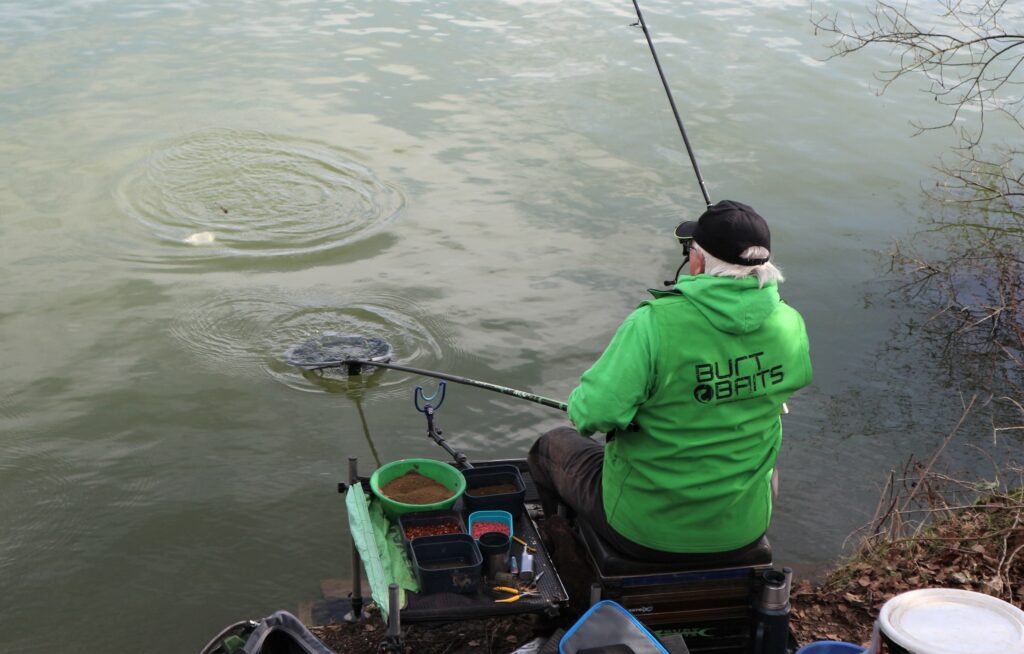
My mate Andy from London joined me on the Specimen Lake and we tried a little experiment. He fished feeder tackle with groundbait, while I stayed with the all-maggot blockend approach in the next peg. We fished the same distance out, into approximately 14 feet of water. It was the usual slow start but after an hour we began to get a few indications. It was blowing a gale again, but at least it wasn’t too cold and was nicely overcast. All Andy fed was dark groundbait with crushed expanders, adding a few casters and using red maggot on the hook. I stuck with my helicopter set-up, although I did spice my red maggots up this time with a mix of madras and turmeric powder. I started to catch roach up to 12oz and odd perch, while Andy was connecting with some decent skimmers. It wasn’t easy but gradually things improved, having to wait less long for bites. The perch were like footballs, obviously getting ready to spawn.
DIFFERENT WORLDS
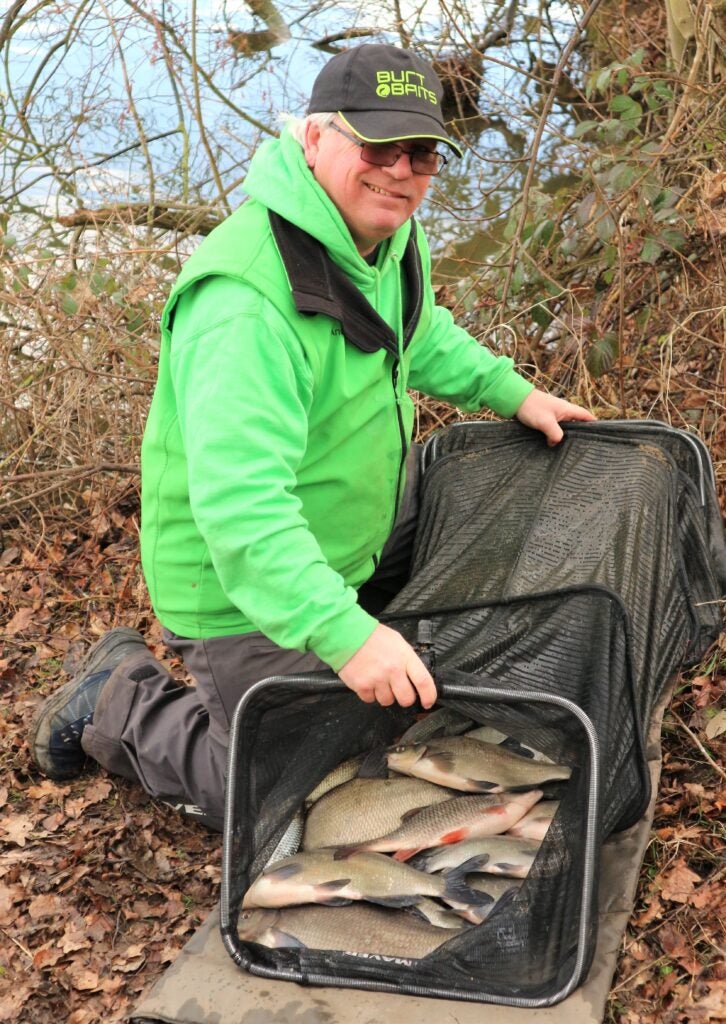
I often wonder if I should use groundbait or not during a lot of winter sessions, never quite sure if it is attracting the species I want. On this occasion is certainly proved that the quality skimmers wanted groundbait when Andy lifted out over 30lbs of them. I had around half that weight, but most of that was made up with roach and perch, only adding a couple of bonus skimmers. My best roach was around the pound mark and one perch was quite a bit bigger than that. It was noticeable that the groundbait attack only produced a solitary net roach, so that species appeared to prefer neat bait. I noticed a similar pattern with other anglers on the water catching lots more skimmers with groundbait feeder tactics, only finding stray roach, while I had been bagging up with plenty of them with a maggot only approach. I have also tried neat chopped worm in maggot feeders, expecting loads of interest, but it turned out painfully slow.
CANAL HAVEN
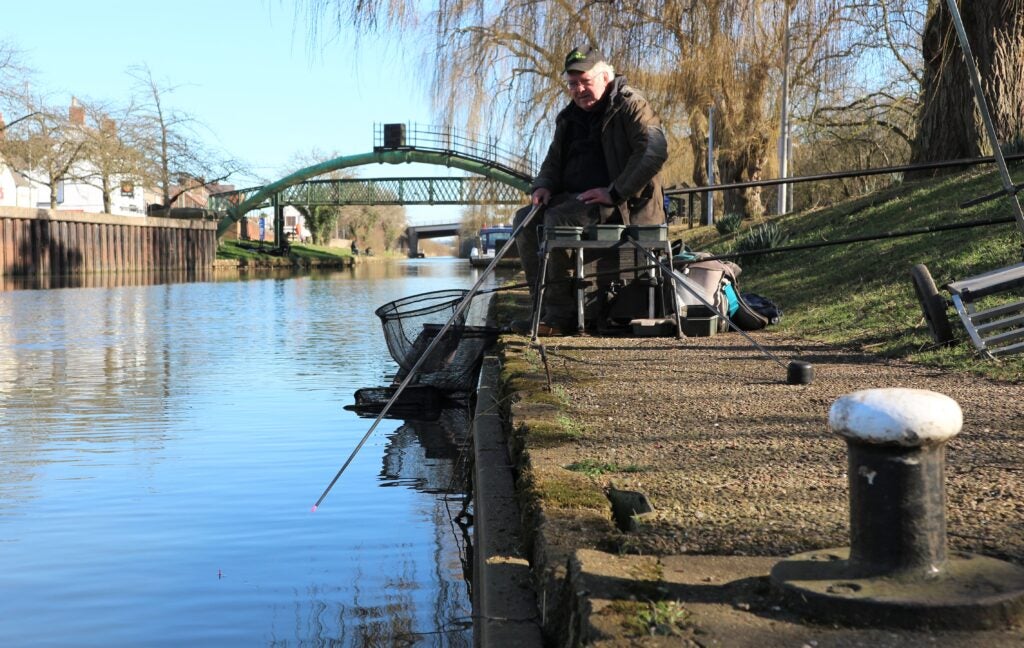
Trying something different with rivers in flood, a pal suggested the Fossdyke Canal outside Lincoln. The match stretches have been poor this winter and surface weed was a big problem before that, but the fish had to still be in there. We tried a wider built-up section, which is more sheltered than most. There were already quite a few anglers about, so it looked promising. The water was nicely coloured, prompting me to fish just off the end of my keepnet, a couple of feet out from the bank. This is a well-known tactic for the Fossdyke perch, which tend to hang around the metal pilings, or tins as locals call them. I had 3ft of depth very close in, cupping in a mixture of chopped worms and casters. I also had a throwaway long pole feed line, not sure if I would need it because it was a bite every put in fishing short. Segments of worm hardly got a chance to settle before hungry perch were on them like a pack of wolves. They were good sized fish too.
SPECIAL PLACE
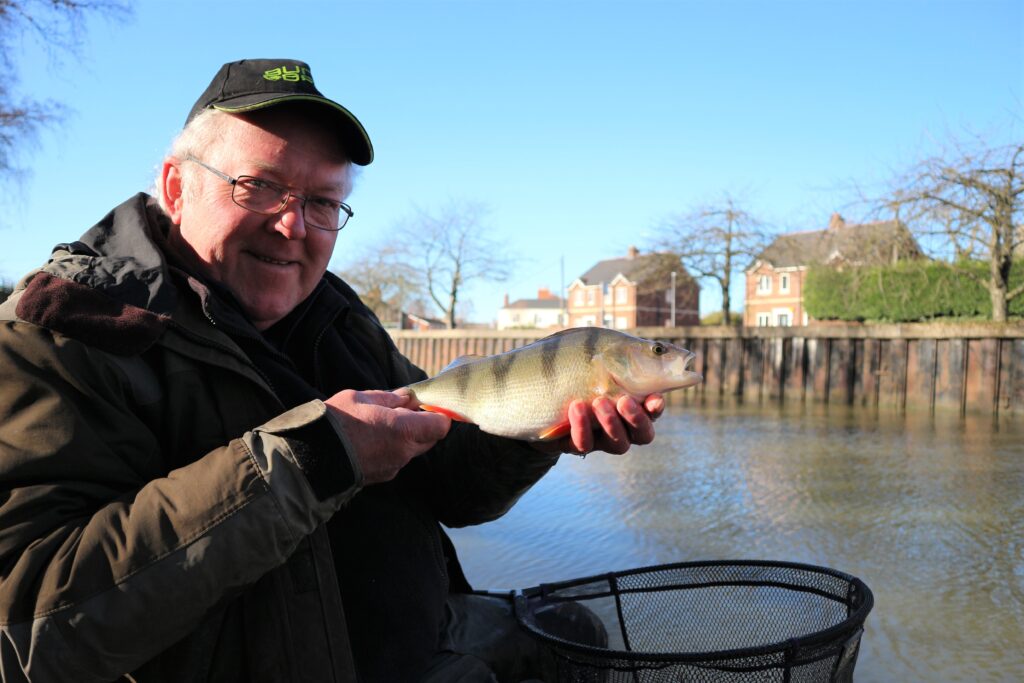
The Fossdyke is the oldest canal in the country, dating back to Roman times. It’s 11 miles long and connected to the rivers Trent, Till and Witham, which adds to the mystery factor regarding what might turn up. There was certainly plenty happening for me, netting perch after sizeable perch. I switched to using casters on the hook and this made it take a little longer to get bites, but the resulting fish were much bigger. My mate caught a two pounder and an angler down by a nearby footbridge had one of 2lb 12oz. Even bigger specimens to 3lbs plus have been weighed in matches and lure anglers catch them to over four pounds from this amazing waterway. I was happy with what I was getting, but didn’t forget to keep a few casters going out on my throwaway long pole feed line, where earlier I had cupped in three balls of groundbait. I wasn’t sure if I would ever get to that, but old match habits told me to keep it primed, just in case.
IN RESERVE
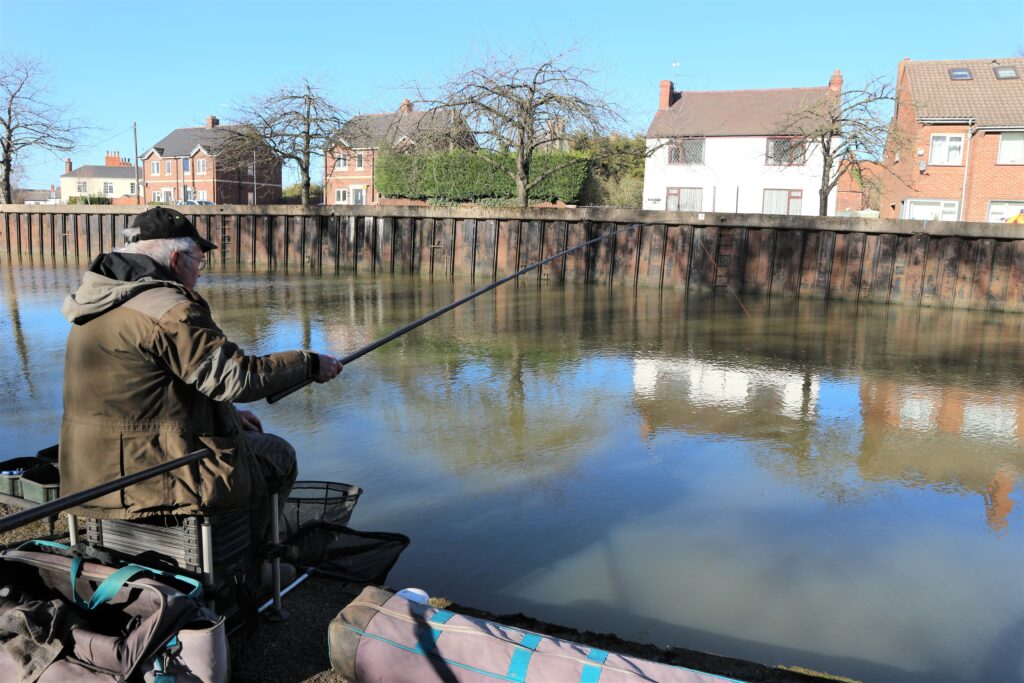
I enjoyed several hours bagging up with the perch, but didn’t forget that throwaway part of the swim, which I had been dinking casters over the whole session. There had been a couple of passing boats, but nothing to badly disturb it. I had also noticed a few little clusters of bubbles out there a few times when the wind dropped. I shipped my long pole over the spot with a single caster and my float buried almost straight away. Another good perch resulted, but next time I went out and the float slid under again, a much heavier weight was attached. That turned out to be a proper bronze bream. It’s amazing how many times having a second feed line like this has worked for me, particularly on canals. I did it all the time on the River Lee Navigation down at Stonebridge and Tottenham Locks, when there used to be lots of regular matches. Many were won in the last hour as the quality fish got themselves into a feeding frenzy.
DOUBLING UP
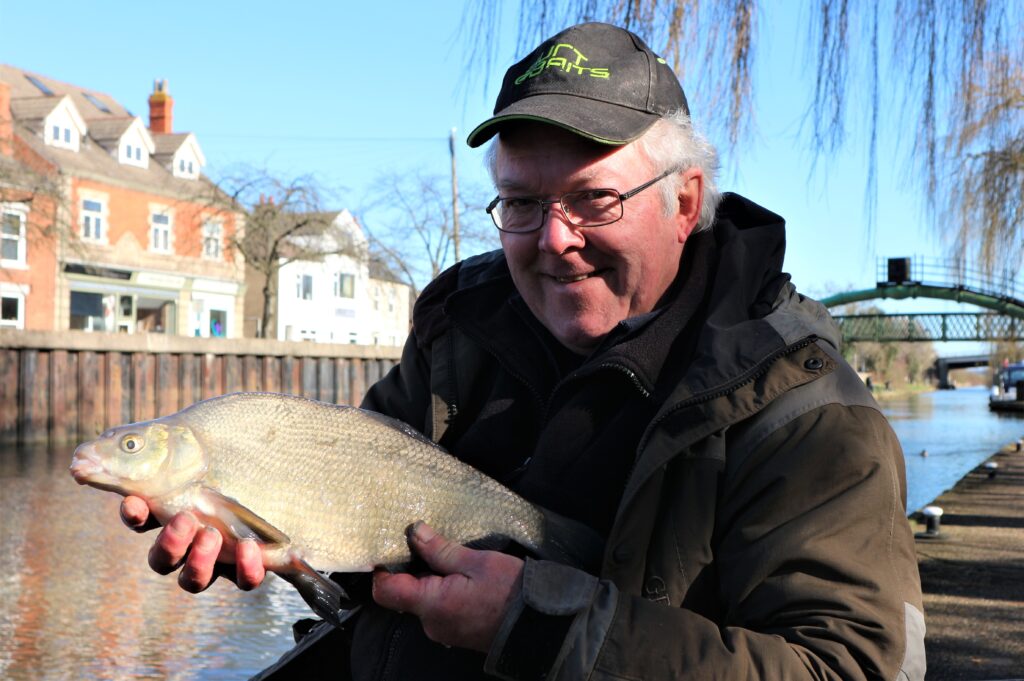
A string of bream nearly doubled my haul during the last knockings, finishing off a great day. These bonus fish might have been missed altogether by going out too early where they are most likely to show. It was the same with the River Lea chub. Hit them too quick and you got a couple, then the rest of the shoal faded away. But feed them for several hours, leaving the shoal well alone and very often you could bag up big time when eventually a baited hook went amongst them. The Fossdyke bream can be frustratingly elusive at times, but occasionally they will switch on in a previously fed but left alone area. Fish up to four pounds turned up in a very short time. I think I might have foul hooked one that came off, and then small roach moved in. Location is key on this canal. On many stretches different species come and go, migrating quite big distances I suspect. I certainly found the perch and bream during the final days of February.
The post Dave Coster’s Fishing Diary – February appeared first on Fish & Fly.
Lure Fishing with Robbie Northman #54 1 Mar 2022 11:33 PM (3 years ago)
The Girls Get It Done
Having a free day, I decided to give some friends a call. I’ve been quite busy recently and struggled to find free time. Unfortunately, that meant I’d neglected a few good friends. It was time to make up for my absence. After a catch up with my fenland pals Adele and Adele (Del) we decided to get together and try to tick off a target fish… The magical 2lb perch.
DAY ONE
With an absent Del, Adele and I decided to tackle some local waters. We were hopeful, putting our heads together, that we could find quality perch fishing on her doorstep. In the past I’ve tried, and while breaking through to the bigger fish proved difficult, I managed perch to 2lb 8oz. That alone filled us with confidence to head out and give it a go.
We started mid-morning on a small canal-like drain. I rigged up with a simple ned rig while Adele fished a finesse dropshot set-up. Slow delicate presentations would be necessary here, in clear water and bright sunshine. We set off walking the embankment, stopping to fish any feature we could find. Barge moorings, reed banks, bushes and trees. We tackled the lot without so much as a nibble.
We stopped beside a tree with a few dimpling baitfish, hopeful of a fish or two there. Other than a few tiny perch following the lure, that too proved uneventful. Perhaps, in the conditions, we needed to find some real shade, so we walked on towards a bridge, often a reliable perch area. I decided to give Adele one of the Goby Tubes to try on a very light ned head, then we moved into position.
It didn’t take long before Adele got a take, hooking up to angry perch which fought aggressively right to the net, leading us to think it was twice the size. Alas, not our target two pounder, but a great fish all the same. The rest of the day proved slow, with a few small perch and pike. It was time to turn our attention to zander.
A short drive later we rigged up in darkness, both picking finesse dropshot rigs. Fishing proved slow, with the following hour producing little action. Right before we decided to call it a night, Adele’s rod slammed over, she was in! This time a quality zander, fighting hard on the 1-7g rod. We netted the fish, which made her session, and made a plan for day two of the perch hunt.
DAY TWO
Day two arrived, and Del finally joined us, a change in conditions inspired a change in venue. Low air pressure, windy, and bitterly cold, I fancied our chances of locating a big fish or two. We started off fishing fast, covering ground, trying to entice a quick reactive bite. It soon became clear that the fish were in a much lazier mood.
Adele persevered with a slow dropshot technique, while Del and I ground creature baits slowly along the bottom. The slow dragging technique soon paid off. While crawling the lure over a snag I felt a faint tap, hooking up with a good fish. Landing one, I quickly cast to the feature again, instructing Del to do the same.
Bang! I hooked up to another heavy fish, deep lunges and headshakes, the tell-tale sign of a perch. I backed the drag off, giving in to the powerful lunges of the perch, moments later a three was in the net. While unhooking mine, Del hooked up, rod bent double into another powerful fish. Convinced it was a giant, I readied the net, eagerly waiting as the fish stayed deep, diving for cover.
I was fooled. Del’s light set-up had me convinced a giant was on the line, I was surprised when a fighting fit perch just under the 2lb mark emerged. A little short of our target, but a cracking fish all the same, she was thrilled. We cast again, eager for more action, and within seconds another faint tap led to a rod-bending, drag-clicking, bout of adrenaline.
Another quality fish! As the perch dived down, seeking cover, I made a careless mistake, losing focus for a second, the fish changed angle, relieving just enough pressure to slip the hook. And just like that the shoal had spooked. Our ten minutes of non-stop action had passed. It was time to move on, seeking out fresh targets in the remaining daylight.
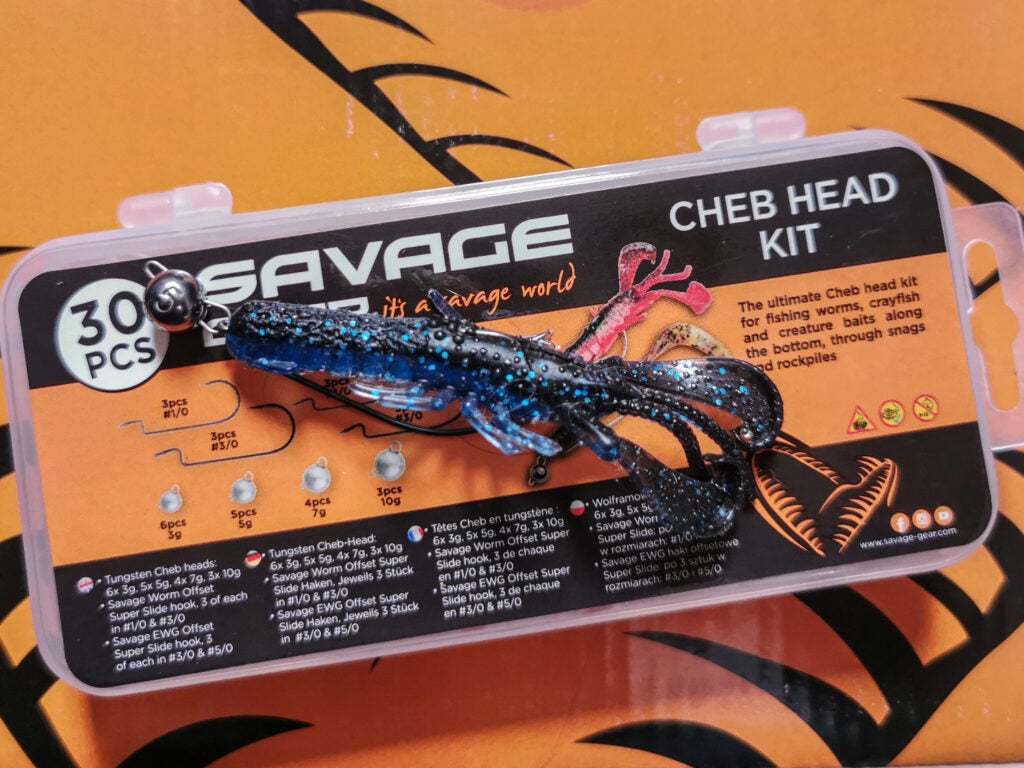
weedless presentations were necessary for fishing in snags and structure
The post Lure Fishing with Robbie Northman #54 appeared first on Fish & Fly.
What Chances Our March Barbel? 27 Feb 2022 4:34 AM (3 years ago)
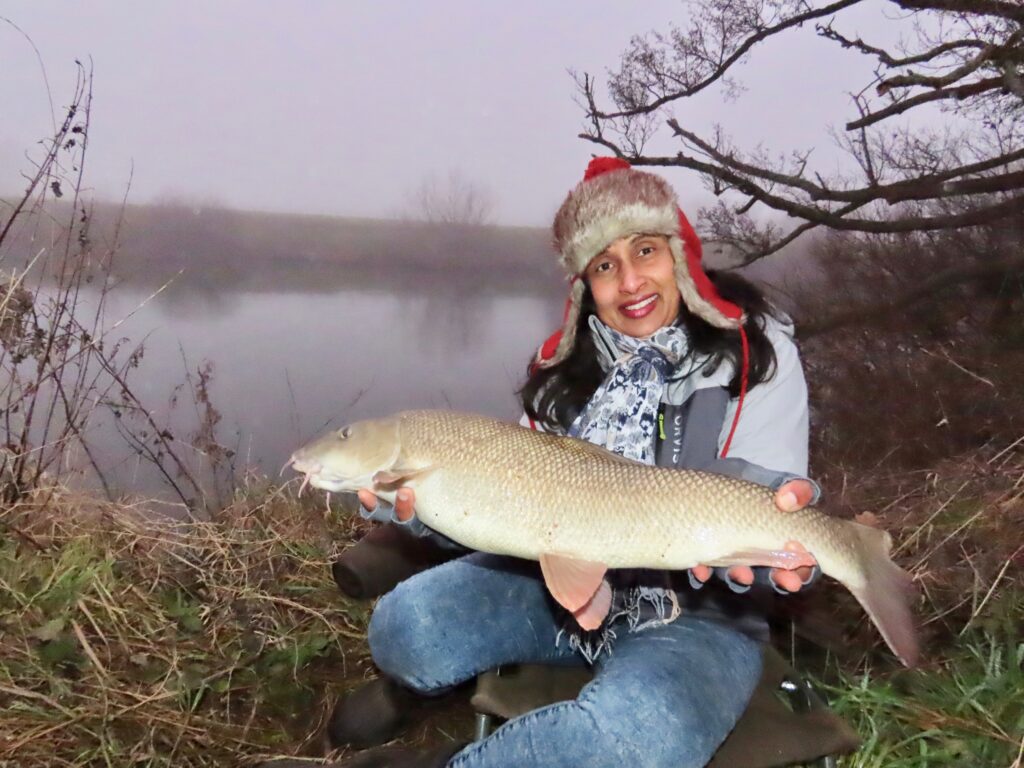
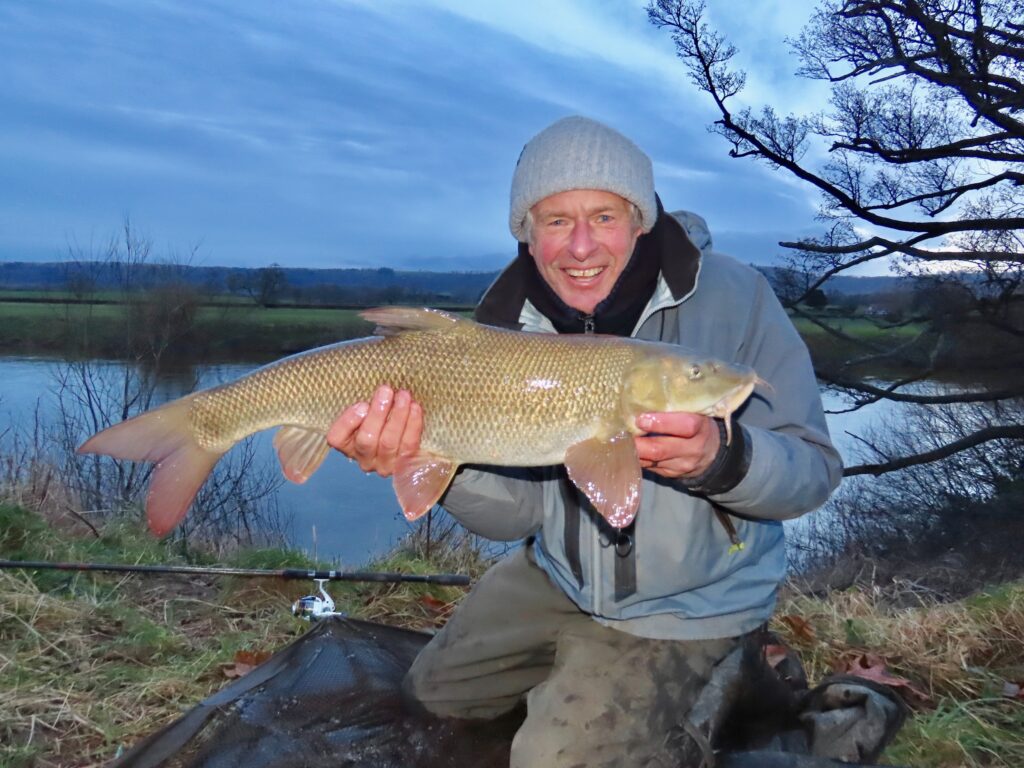 This is going to be nip and tuck. My goal of catching a barbel every month of the winter hangs perilously in the balance.
This is going to be nip and tuck. My goal of catching a barbel every month of the winter hangs perilously in the balance.
As I write, the river has fined down nicely from last week’s inundation and looks extremely fishable. I have been baiting a few swims with diligence.
But it’s February 27th, not March 1st. There are two days to wait and, frighteningly, heavy rain is forecast up the Wye valley as of tomorrow, leaching into Tuesday.
My guess is that as the land is already soaked, the river will rise high and fast. Yep. As I began in this piece, everything is in the balance.
I have in reality ’till around 8th March, and then in all probability my season will end in Norfolk.
There might be a window around the 13th/14th if I am happy to add 500 miles plus to my month’s tally. A balancing act indeed.
I look back to the winter’s barbel campaign, if so it can be called. (I realise my “campaigns” this century are not what they were last!)
I’m broadly pleased with it. I have caught barbel, or Enoka has, and I call that the same thing as we rod-share.
I have learned a good deal about barbel feeding habits in cold weather, something I needed to do.
Above all, the many twilight sessions helped me calm and focus on what life is all about, what a privilege it is to have lived one.
Surely that thought is all the more valid this horrendous weekend?
You’d have thought Putin, as a so-called angler, would have more grace and humanity in him than to unleash the abominations we are witnessing.
In years gone by I fished extensively in the states bordering Russia and met wonderful anglers pretty much everywhere.
My heart goes out to them. These poor brothers and sisters of the angler will be worrying about more than rain in the Welsh hills this sobering Sunday.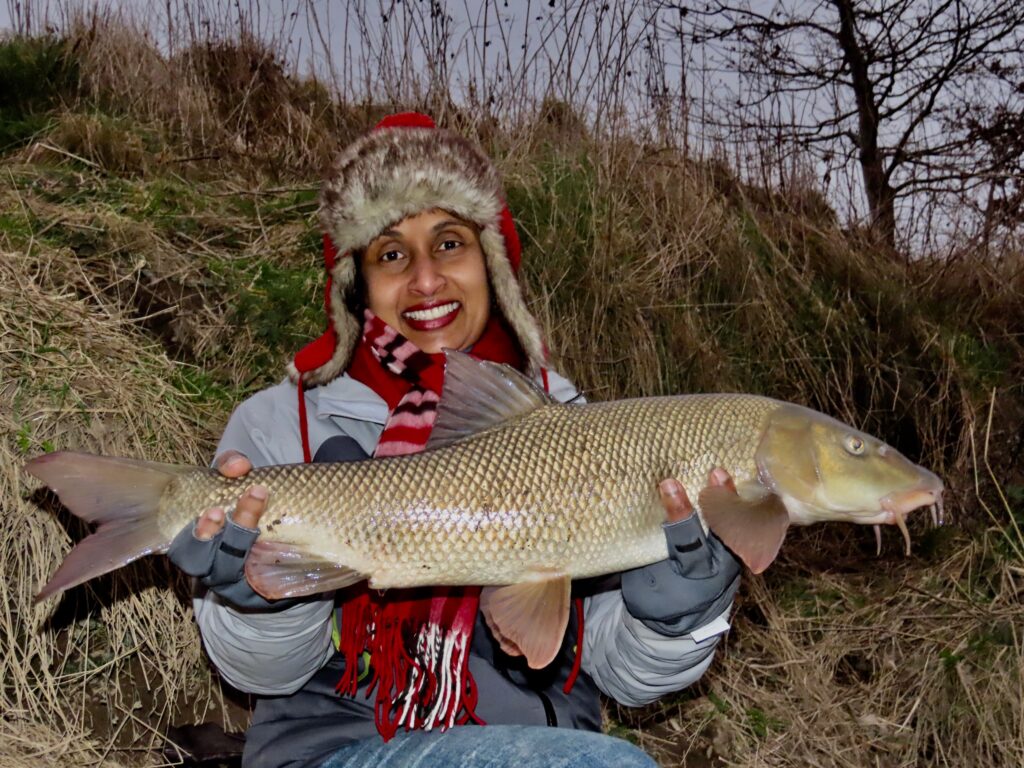
The post What Chances Our March Barbel? appeared first on Fish & Fly.
The Old Clay Pit 23 Feb 2022 11:33 PM (3 years ago)
COLD IN TIMBERLAND
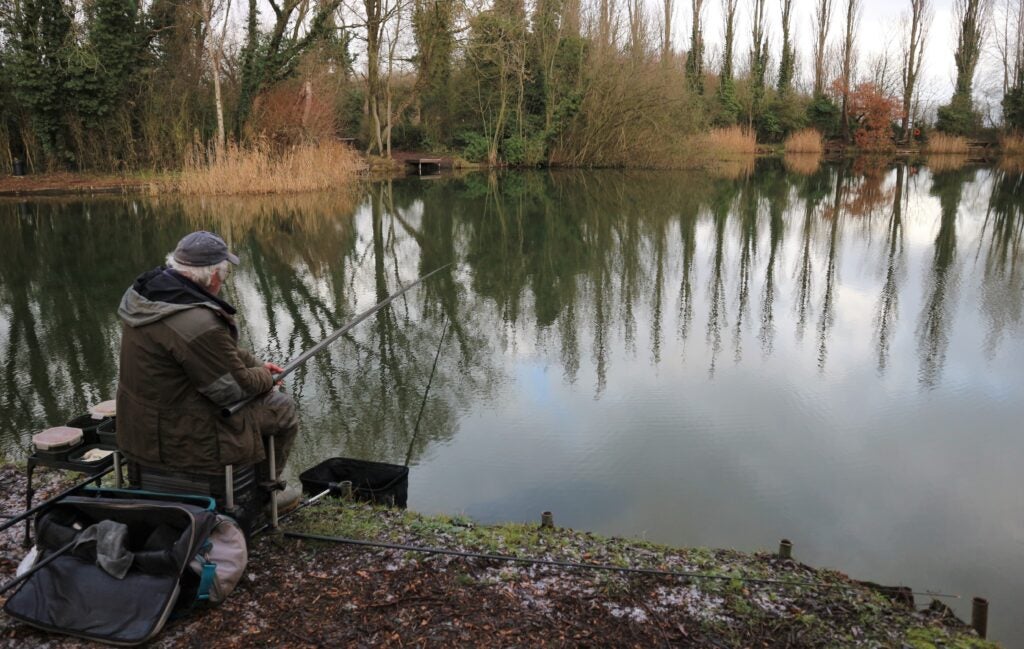
When a mate invited me on an outing to an old clay pit, a picture of a muddy hole in the ground filled with murky water came to mind. Instead, I discovered a beautifully mature lake, deep in the Lincolnshire countryside, on the outskirts of a small village called Timberland. It was winter, with frost on the ground, and I could see a big sheet of ice over on the far bank. That didn’t bother me because the place had a fishy feel to it, plus it was deep, which helps when it’s cold. I kept things simple, setting up two top-four pole rigs, one with a slightly strung bulk and one with an olivette. I had decided to try punched bread first, not knowing anything about the venue. I cupped in a helping of crumb and spent a few minutes taking stock of the place. It looked more like an estate lake now, with the owner’s stunning house and manicured lawn opposite, along with an island, backwater, plenty of trees, bushes, reed beds and several bays to explore.
THE OTHER DAVE
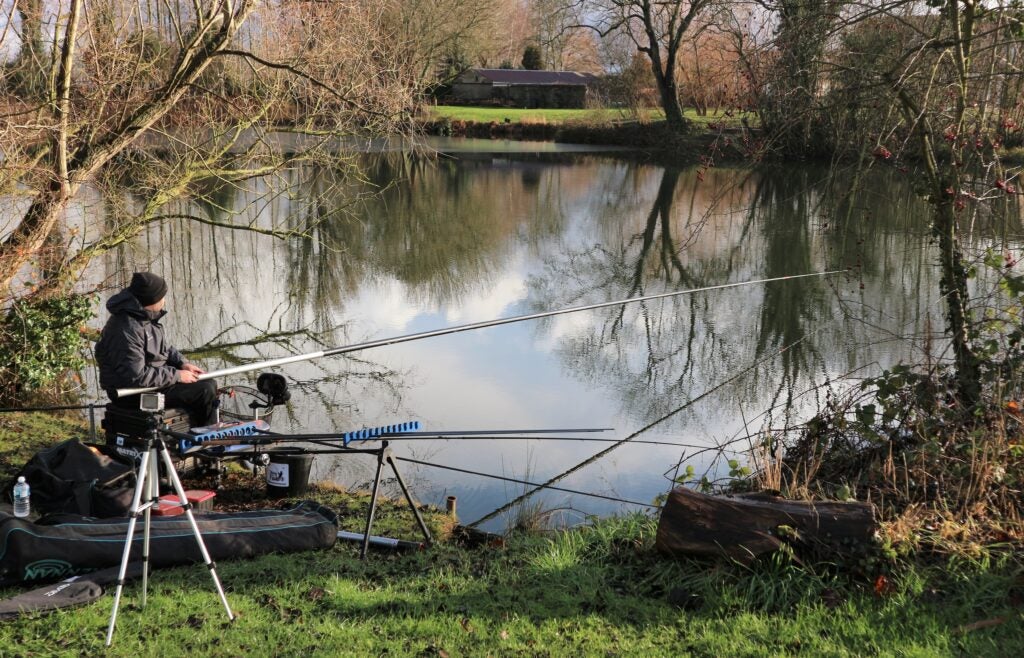
Dave Eastwood had set up pole gear too, just around the corner from me. He lives a bit closer in nearby Sleaford, which is how he discovered Peacock Waters, where a day ticket costs a reasonable £6 on the bank. Dave’s approach was similar to mine, using deep water 1g-plus pole floats, but combined with a groundbait, maggot and worm attack. He had also set up a feeder rod, but after a few trial chucks with it, told me he wasn’t confident with that method. It was very deep out in the middle and felt silty when retrieving the end tackle. It was slow to begin with, so I laboured through the first hour trying small pellets of punched bread on the hook, enduring several squally sleet showers. I did get a few slight indications, but nothing positive enough to convert into anything. I began to catapult a few casters over the same feed line, hooking a red maggot first. This resulted in positive bites and a few small perch, roach and hybrids.
FIGURING IT OUT
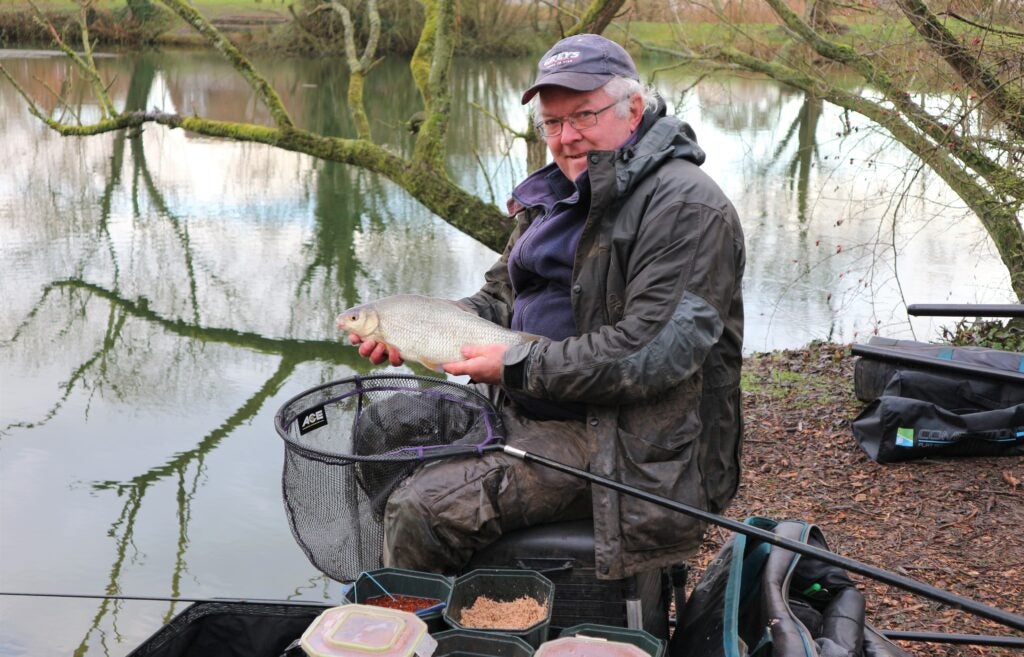
It wasn’t an easy session. The frost on the ground failed to melt and the big sheet of ice on the surface in the distance didn’t shrink back at all. But gradually, dinking casters in every 10 minutes, my swim came to life. Red maggot gained bites quickly, but resulted in small fish. It took longer to get a response with a single caster, but the bigger roach this tempted required a landing net. Dave was catching too by this stage, a nice mixture of roach, perch, hybrids and skimmers. Nothing massive but keeping busy. Although we were both putting a few pounds together, it was never going to turn into a bagging session, more a typical hard graft, winter day on the bank scenario. However, I eventually hooked into something a lot feistier, turning out to be a rocket-propelled hybrid, which gave me a good run-around on light pole gear. A few more quality roach followed, along with another big hybrid. I was more than happy with that.
GETTING WARMER
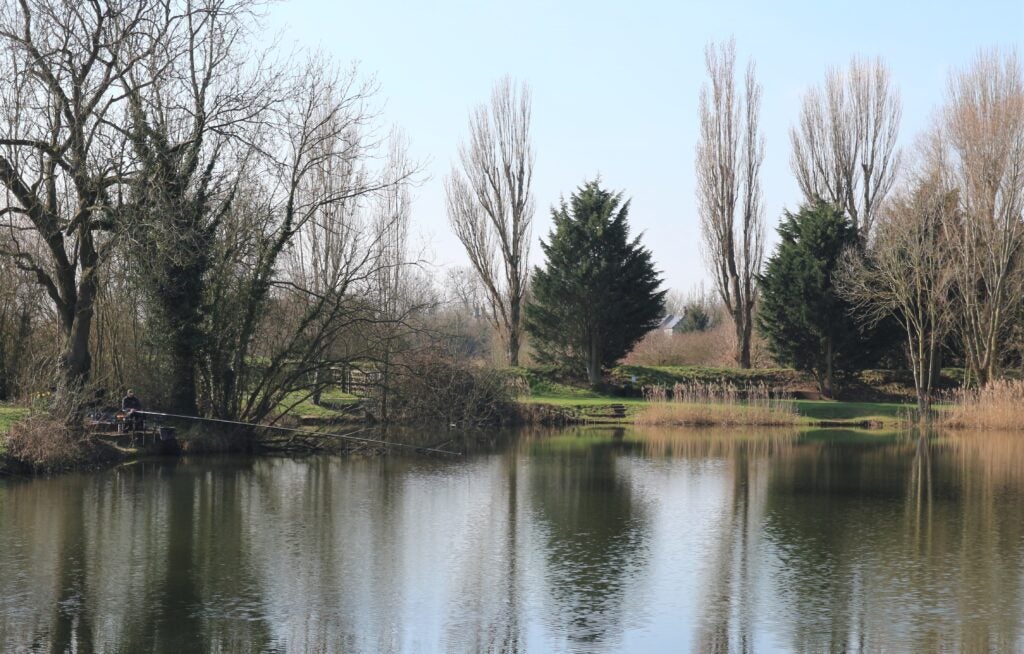
A return visit several weeks later rewarded us with a touch of Spring in the air. This time I opted for a peg in front of the big house and the converted barn that sits next to it. Although a day ticket fishery, onsite accommodation is also offered, plus caravan parking for holidaymakers. All this is ideal for anglers who want to spend several days by the water, with the potential of catching plenty of fish. I could see Dave in the distance, using pole tactics again, but fancied a change myself. I set up waggler and feeder tackle. I was where the backwater meets the lake, on an island that’s accessible by a footbridge. The owner dropped by and told me the pool behind gets stuffed with big carp when it’s warmer, also that the lake held big perch, rudd, roach, crucians, tench, bream and elusive stillwater chub. Although it was very deep in front of me, plumbing around I discovered a nice shelf over to my right, where it shelved up to 10ft at the end of the island.
MYSTERY FACTOR
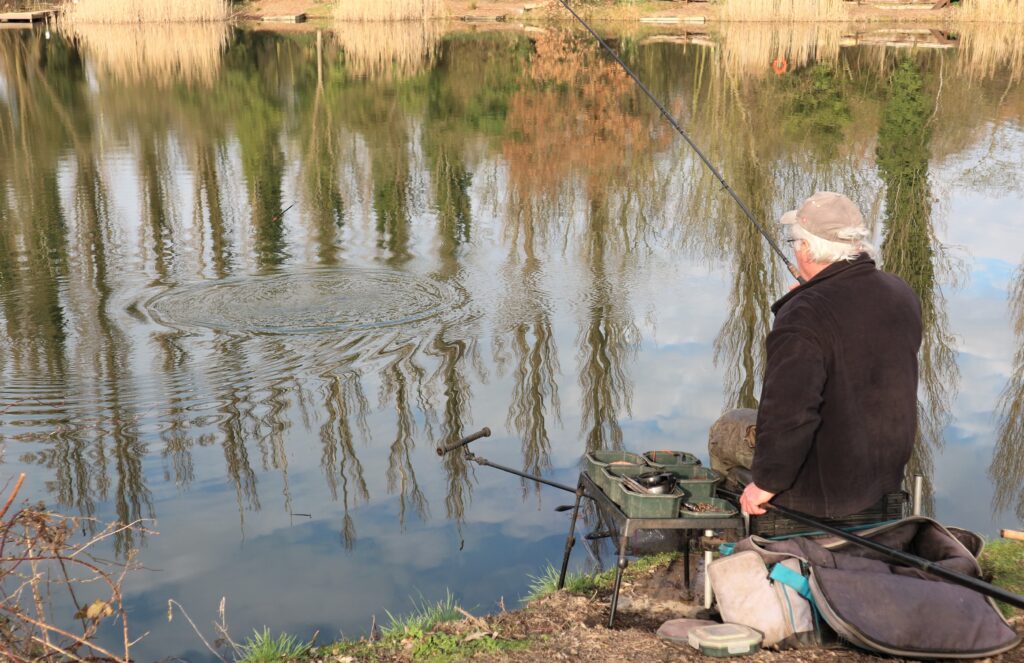
The bit I like most about exploring new places is not knowing what might work or turn up. There certainly appeared to be plenty of different species to target, but the trick would be finding them in such a deep place. I had a few experimental chucks out into open water with a groundbait feeder and it was a long way down to the bottom. I put some grub out and went on the waggler, but it took ages to get a bite. The water still had an icy green tinge to it and when I eventually received some interest, I failed to connect with whatever was out there. I kept feeding that part of the swim and tried the feeder again, which resulted in two quick bream, followed by a long blank spell. Back on the waggler and my steady loose feeding at last stirred things up. I caught some quality roach, perch and a skimmer. The feeder line was still dead when I tried that once more, but it didn’t matter because some cracking hybrids turned up on the float.
TIGHT MARGINS
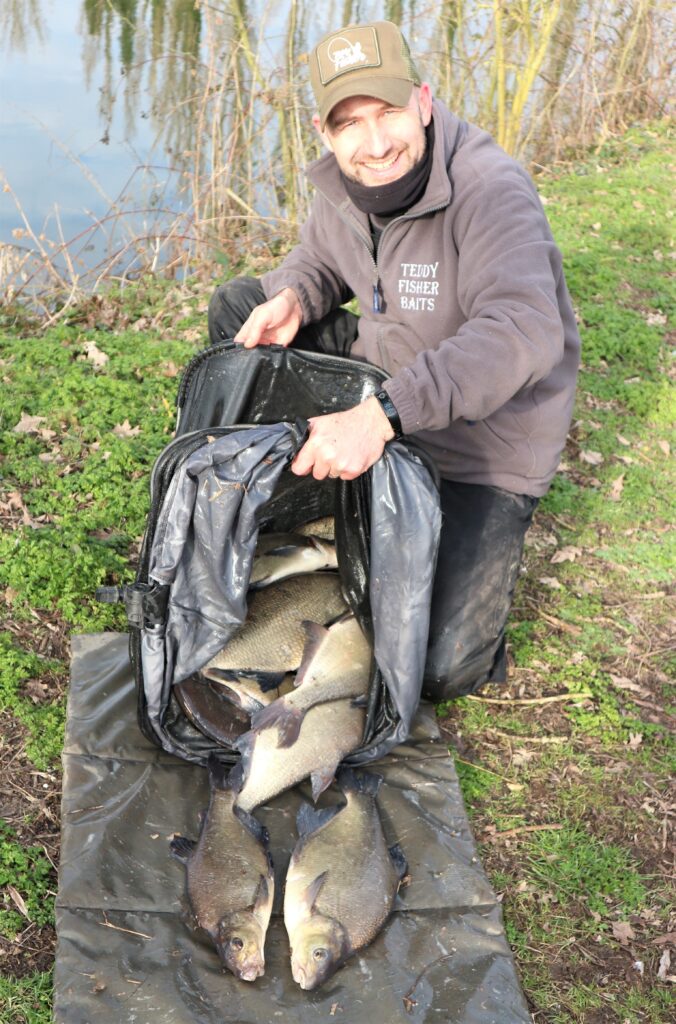
Dave caught loads of bream on the pole, only interrupted by a big carp that wallowed around his peg for ages before surrendering. The fishery owner had told me that a few days before a guy landed a twenty pounder on pole tackle, which was an amazing feat. It was interesting that Dave had found the bream stacked up closer in. I’ve noticed on many other deep venues that fish tend to show best not too far out, or well off bottom. I suspect in the deepest areas the water is a lot colder and almost liquid mud closer to the bottom. You could be putting a feeder out, not knowing if it was sinking out of sight. The only attention mine got was those two bites out of the blue, on a long hook length as the tackle settled. Otherwise, I was left wondering if the absence of any other indications was due to everything being obscured by soft silt. One thing I had noticed, was a lot of fish activity over in a reedy bay, which is where I intended to try next time.
THE BAY
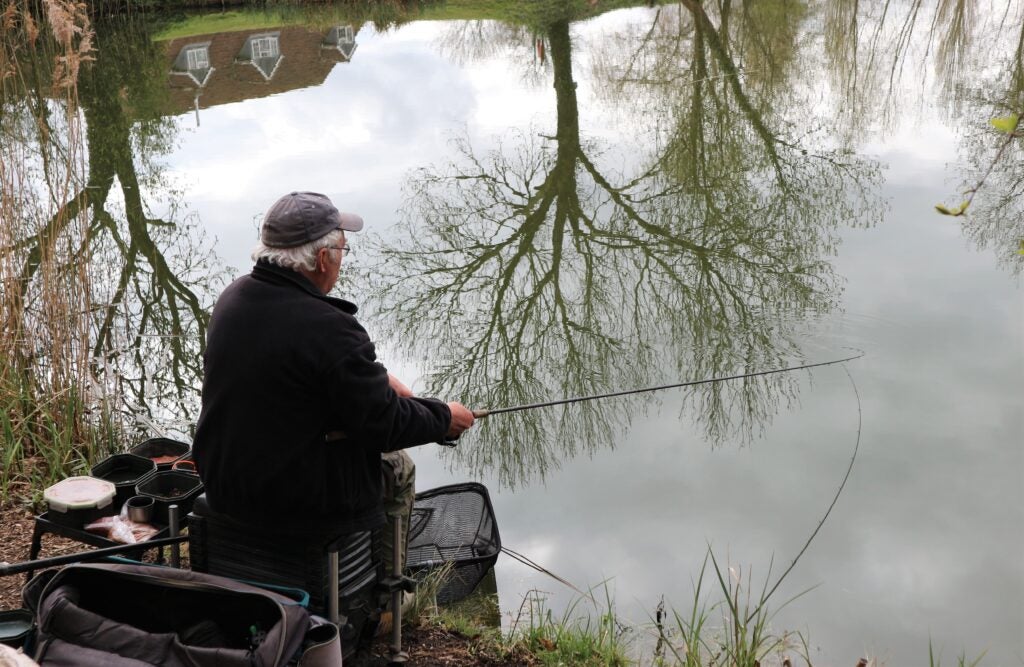
When I next returned to the clay pit, I found the reed-lined bay vacant, and it still looked inviting. It was deep over there too and I thought about setting up a pole, but it would be tricky getting tackle where I wanted. All the fish activity I had spotted last trip was right down in an inaccessible and overgrown corner some 20 metres away. I set up a waggler again and found good depth, just a few feet away from the thick bed of reeds that lined the bank. Although nothing was topping, I could see fish were knocking about, parting the stems occasionally as they moved through. I also spotted a long black shape, which looked like one of those elusive chub the owner had told me about. I trickled a few 4mm pellets and casters into the target area with a catapult, giving it a good 15 minutes before casting my float down there. When I did, the tackle hardly settled and my waggler disappeared, hooking into something decent straight away.
GOOD SPOT
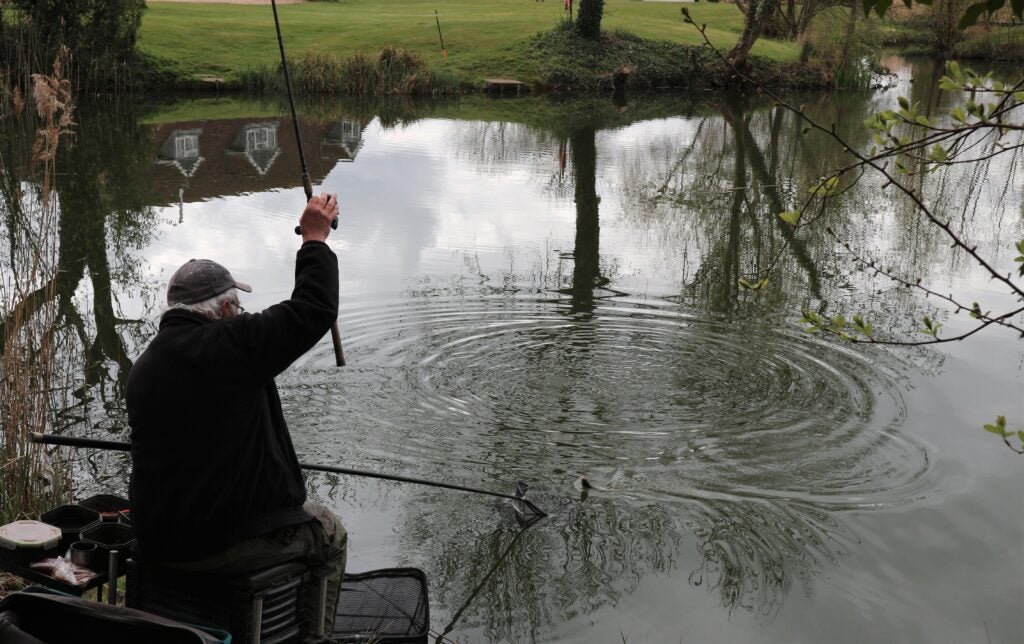
It’s nice when a plan comes together while getting to grips with new venues, finding some surprises along the way. It was fair-sized rudd that turned up first, mostly on the drop or just after the tackle settled. The rudd were on red maggots almost instantly. I later found I could get a single dark caster through them, waiting a bit longer for some interest and when that came it was from quality roach. I tried a soft pellet on the hook and waited even longer for a bite, resulting in a good skimmer. I could see that chub-like shape drifting in and out of the reeds occasionally, so when I fed casters next time I shallowed up. The sensitive tip on my insert waggler shot under again, but it was a small rudd and the shadowy big fish bolted back into the thick cover. I tried not casting, just sitting there dinking in small amounts of casters and the dark shape drifted out again. If it was a chub, it was a big one. I cast again and the float quickly darted under.
STAYING ELUSIVE
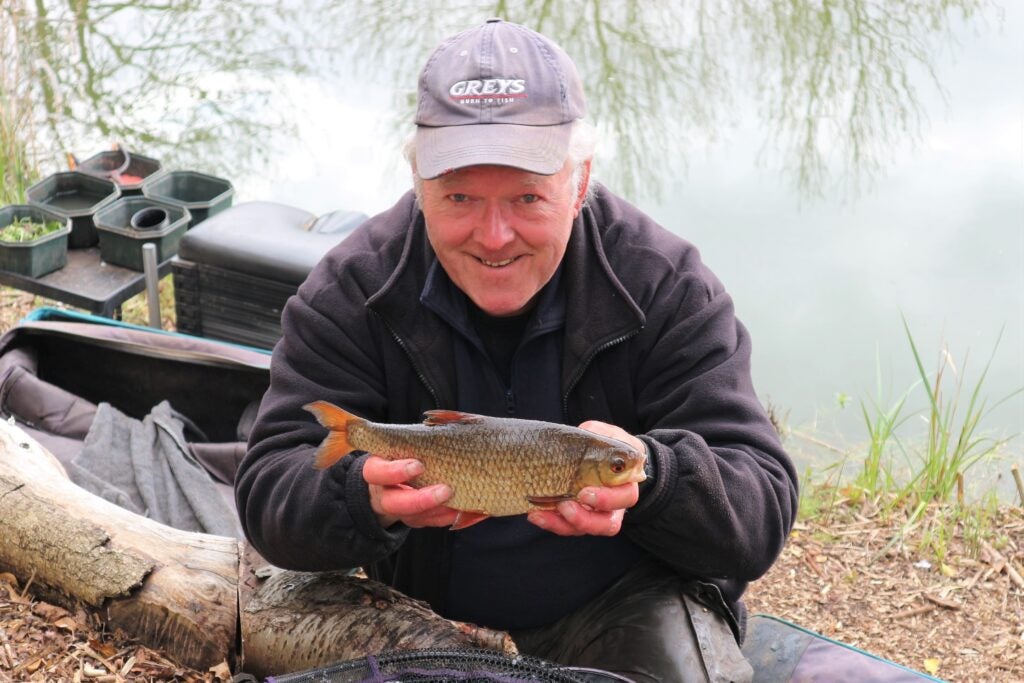
I was hoping for the type of thumping lunge big chub hit you with, but the fish I had hooked was skittering about too quickly. It still had some weight behind it and turned out to be a cracking roach, the best so far. I knew the chub tales were true because the other Dave had caught one the winter just past. But the fish in the bay was streetwise, coming out for some loose feed occasionally and quickly melting away when I cast towards it. I did think once again that I might have hooked a chub, but it turned out to be a small and powerful carp. After I put that back, a bream turned up next, in between wading through small fish. Towards the end of the session, I decided to up the loose feed, to try and get through the bits and pull something bigger. A few half-decent roach turned up, but nothing as big as the one I caught previously. I was just beginning to think that might have been a loner when it was rod-bending time again.
MYSTERIOUS FISH
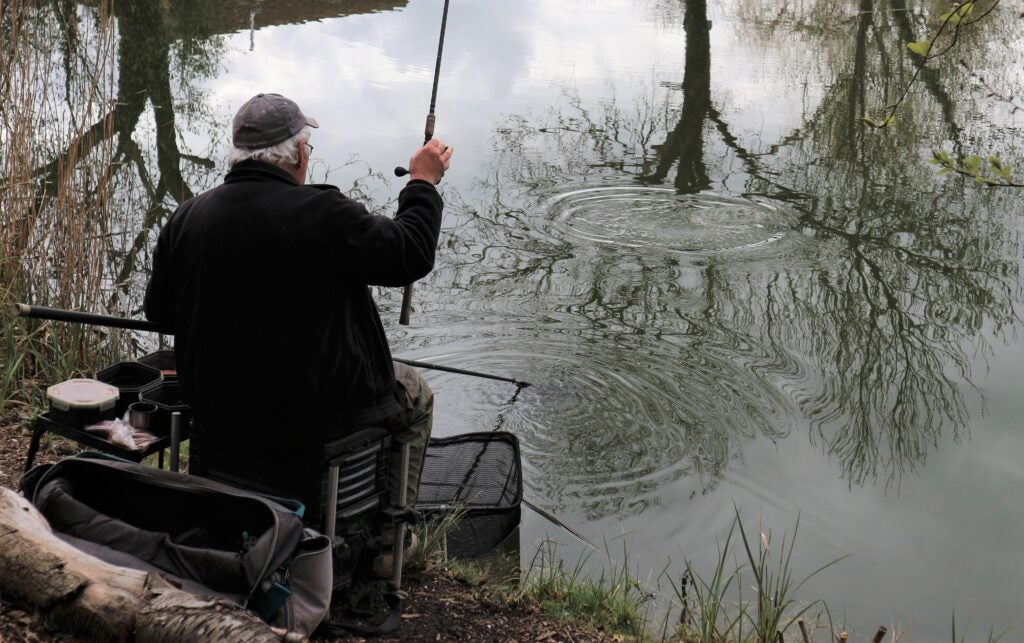
I wasn’t sure what was attached as it gave a good account of itself on my relatively light tackle. I saw the flash of a big silvery flank a few times and a hint of orange/red fins. I played it carefully and when the fish surfaced I could see it was another one of those hybrids, similar to the ones I had caught on previous visits, but bigger again. I don’t mind catching these fish at all. They are wild and interesting, fighting like demons and growing to a good size. I used to love catching this cross-species over in Ireland, where they turned up in loughs, rivers and canals. In some places they were the main fish you caught and locals were beginning to think they might be breeding. I’m not convinced about that, although they often patrolled around in packs, even in the massive game fishing waters like Lough Corrib. I once fished from an island on that massive stillwater and witnessed some huge hybrids coming out, from a place not noted for coarse fish.
ANOTHER LATECOMER
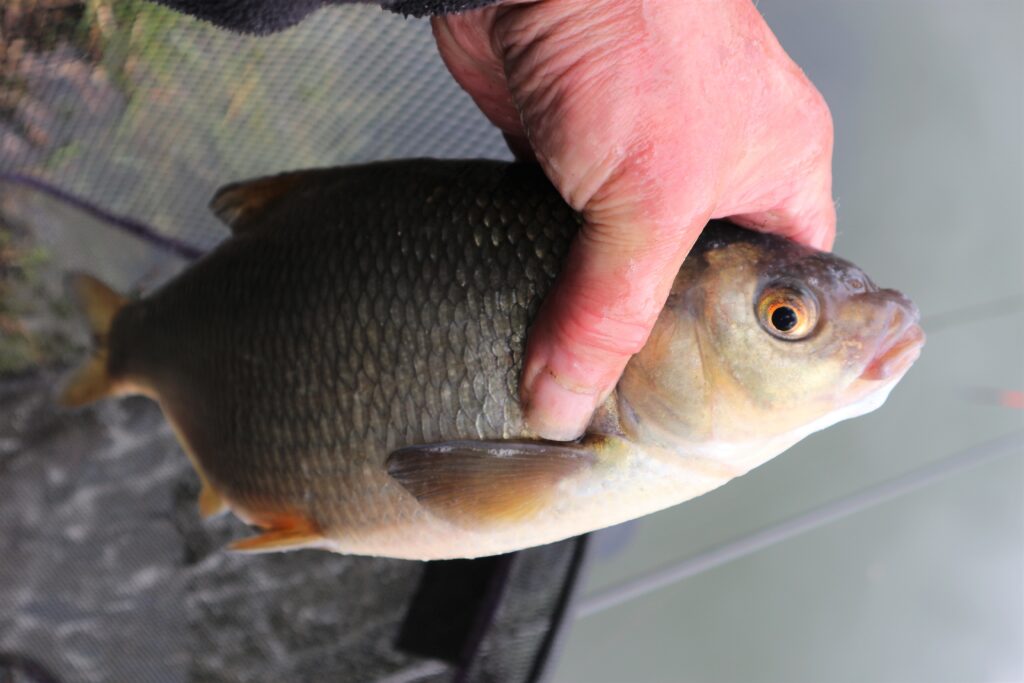
It wasn’t long before I hooked into another fighting force, that looked even more like a giant roach when I eventually netted it. That was until I lifted it out and saw those tell-tale signs of a hybrid again. There was a little bit of bronze in the scales, a longer anal fin and those paler eyes that give the game away. Some hybrids seem to have more roach in them than others. They also look different, depending on the way you handle and hold them up, almost morphing into a roach one second and then looking more like a bream the next. Very odd. But I was more than happy coming into contact with these wonderful fish again, a long way from where I used to regularly bump into them. The old clay pit was proving an interesting find, especially with the chances of hooking a big stillwater chub. Apparently, they have been landed up to 7lbs, which are big fish for a relatively small pit. Shame the one in my swim didn’t want to play.
PIT STOPPING
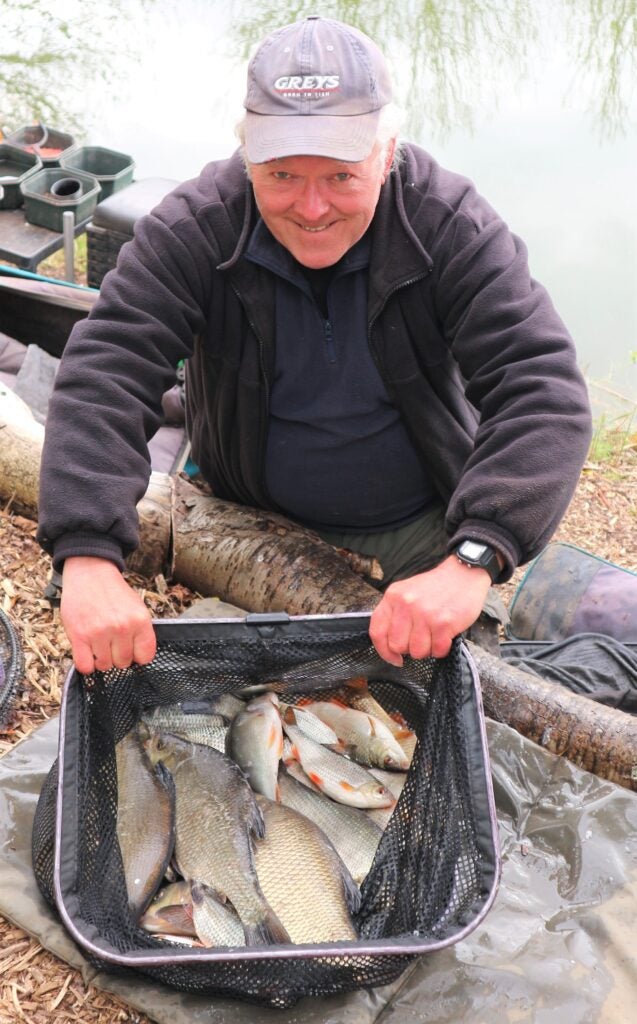
With some new venues I can take them or leave them, while on others I get caught up in their interesting atmospheres and features, which keep drawing me back. The old clay pit has become one of the latter. It’s just a nice spot to be in, made even better by its mysterious inhabitants. How did those hybrids grow so big and how did the chub get in? More importantly, how was I going to catch a chub, or two? A few days after taking this nice catch, I bumped into another angler who had caught some big chub from Peacock Waters. He reckoned it was all about picking the right swim. Apparently, the chub only tend to show consistently in a couple of spots. That makes sense to me after finding a similar trait on another lake that holds this species. On that strange water I have only ever caught chub from one swim. You could fish for years elsewhere and never see one. Peacock opens again March 1st and I’m definitely going back.
The post The Old Clay Pit appeared first on Fish & Fly.
High Wye! 23 Feb 2022 4:10 AM (3 years ago)
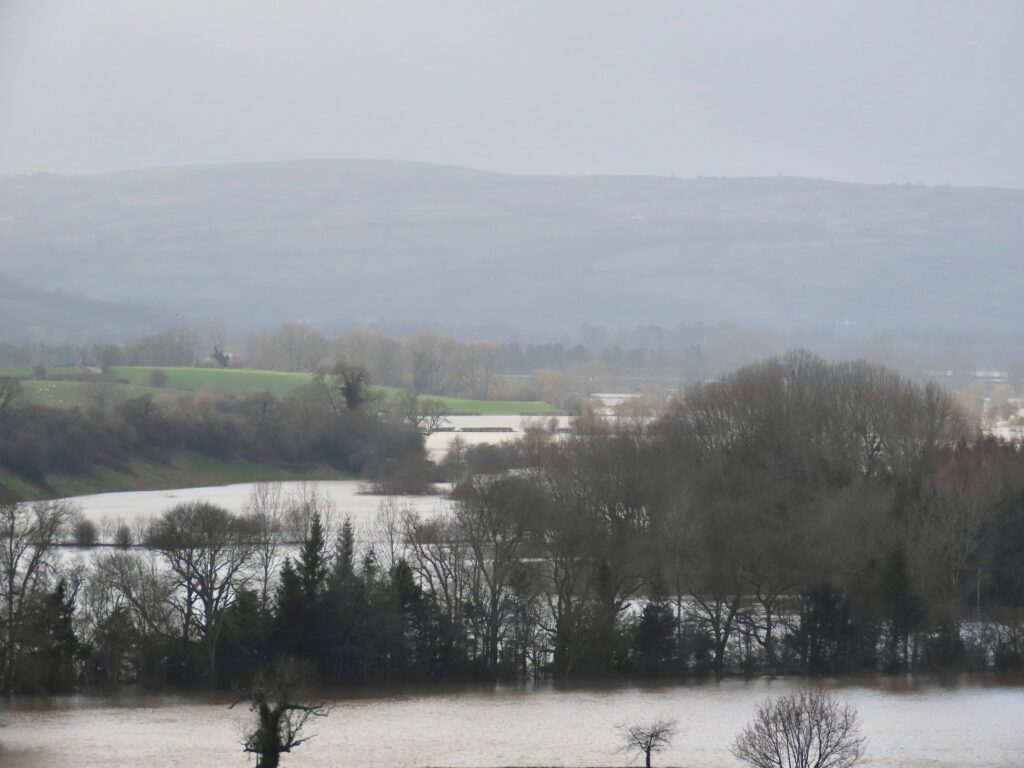
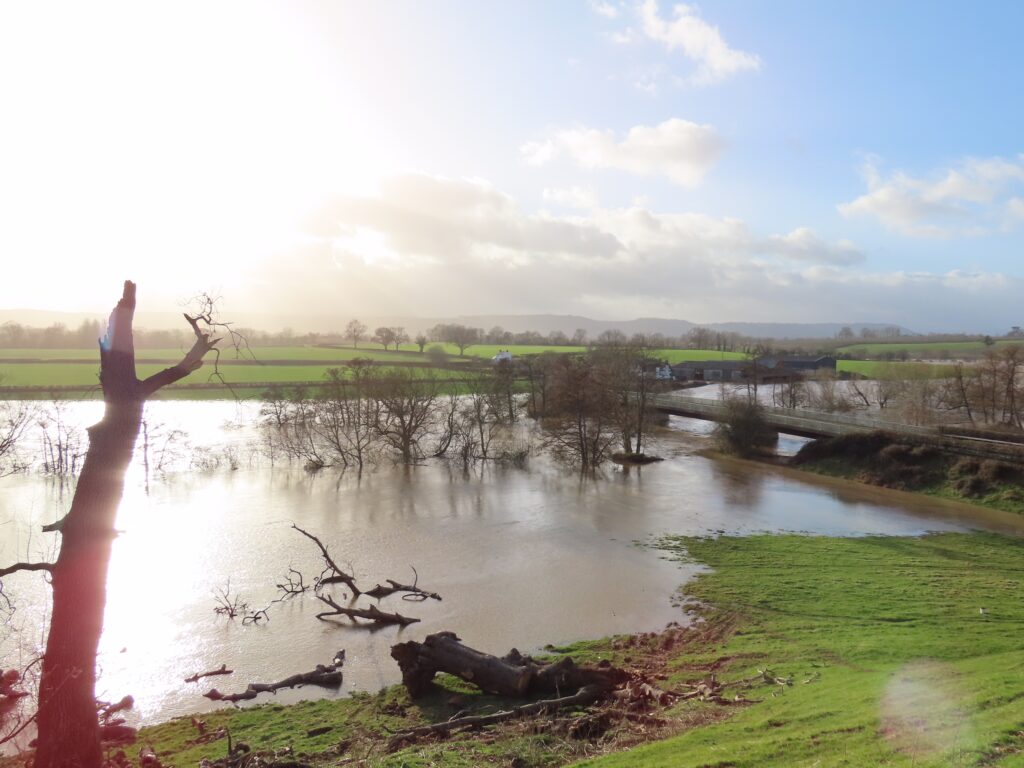 These pictures from Monday have raised eyebrows amongst my friends, and indeed are impressive in their biblical, dawn-of-time way.
These pictures from Monday have raised eyebrows amongst my friends, and indeed are impressive in their biblical, dawn-of-time way.
Of course, depressingly, they indicate my fishing has ground to a halt, but less selfishly, worries about riverside residents take precedence.
As do questions and worries about the floods themselves.
Why does the Wye rise so fast and drop so comparatively slowly? That’s something I have never quite got my tiny brain around.
Are Wye flood scenarios (and floods in general) really getting more serious and frequent? Even in my life I remember very many of them, and history abounds with records of them.
We know the media loves a story, and every story must have a shock horror impact.
What is the impact on fish of all species?
Surely smaller fish cannot face floods of this magnitude, and get washed downriver?
How do trout, chub and barbel cope?
Do they dig into marginal tree growth and hunker down?
Do they find deep troughs and channels where they can lie with the full force of the water over their heads?
Or do they get forced downriver little by little?
What about the remains of weed beds?
Can the remnants of ranunculus withstand long-term disruptions on this scale?
How do spawning redds and beds cope?
Are the gravels swept away? Do they become clogged with silt? Or do the floods hoover them clean?
And what of invertebrates? Can they take the force of floods like these?
The post High Wye! appeared first on Fish & Fly.
Lure Fishing with Robbie Northman #53 22 Feb 2022 11:18 PM (3 years ago)
The Year of the Monsters
2022! More like twenty-twenty wooo! But I’ll dive into that later. This past week of fishing has been somewhat incredible.
I kicked off the week with some good old perch, with a twist… See, I was a man on a mission, and a bizarre one at that. As most of you know I’ve been learning my way around the use of live sonar. Lowrance ActiveTarget to be precise. For those that don’t know live sonar, I will explain. It uses a high frequency of acoustic waves, combined with a very smart processor that relays the information to your screen in real time. This enables you to look ahead or below, and see fish before passing them, study their behaviour, and even watch them take a lure.
That was the challenge. It sounds simple but the set-up has to be perfect. So having gained practice, I decided to set out and try to record myself sight fishing a big perch through the screen. I wasted no time heading to the spot. I had found a tight shoal of perch in structure on a recent session, figuring they wouldn’t be far away. The hunch proved correct, there they were, behaving in exactly the same manner as last time.
I positioned the sonar, casting a creature bait into the shoal. Moments later I hooked up with the first fish of the day, a pretty two pounder, followed by several more smaller examples. Surely, I had the footage I wanted. I stopped for an hour and skimmed through the footage, disappointed that I’d missed the whole process on every single clip. I decided to anchor closer to the shoal and upsize my lure, giving me a much higher chance of capturing the moment.
I cast away, allowing my lure to slowly fall, pause, then jig. I watched as perch inspected the lure, refusing to take. With a good handful in the shoal it was just a matter of time. I cast again and watched as one of the larger shapes turned facing my lure. The moment was tense, my eyes glued to the screen as the fish approached. I jigged again, lifting the lure and watched as it merged with the shape of the fish! Simultaneously, I felt a tug, set hook, connecting with a large, powerful perch.
I averted my gaze from the screen, focusing on the fight as the perch dived toward the engine, with the tension on I steered the fish away, taking the fight to open water. Moments later it was in the net! Mission accomplished. I looked down at a beautiful dark perch. A long lean fish with a huge head, mere ounces under the 3lb mark. That alone made my day.
As you know, I’ve neglected the pike this year, having a brief go in the autumn with fairly poor results, and a few successful kayak sessions in the fens. Last year was amazing with fish to 28.8, rivalling my lure PB. I finished that season with a great score of 20s, never encountering that dream 30. With perch to 4.5, Chub to 7.10, Zander to 13.2. The 30lb pike was the final fish on my big lure hit list. So often, only putting the time and effort in will reward a fish of that calibre.
I sat at home, waiting for the onset of Storm Eunice, when I received a message from a great friend. A simple “Free Wednesday?“ Absolutely, Mr Bailey, count me in! Big wind, falling air pressure, perfect pike conditions. So we pencilled it in. Like good times past, I couldn’t wait to start. In fact, the day reminded me greatly of one we spent together a few years back, a similar storm, a special day, we banked a few epic fish.
THE CATCH
I began the day, braving the wind and working through the lure box. It was fierce! The strong gusts sucked the air from my lungs. But the sensation of extreme weather filled me with excitement and adrenaline. I started with big tail baits, struggling without a bite. I covered each swim then switched to a smaller jerkbaits to double-check.
Hours passed and the smaller lures began to produce. I soon figured they were keyed into a mixture of small size and high flash so I switched it up again. Rigging up with a Crazy Blade Jig Head and 11cm shad. To fish a lure so small, I compromised on the rod strength, picking out a 6ft 6ins 7-23g zander rod, hopeful if I found a big one it would be enough.
After many hours and six small jacks I felt a bump and set the hook. Instantly, it bumped off without so much as a movement, a snag? I don’t remember there being one there on the last cast. I covered the area for several more minutes before changing angle on the swim.
Bang! This was no snag, the rod doubled over and a huge boil appeared on the surface. Instantly I knew that this fish was huge! I held on, increasingly anxious, and the fish swam toward a fallen tree. I held on and decided to risk it all, clamping down the drag and folding the rod into a full horseshoe to stop the powerful fish. Finally, it turned.
I caught a glimpse, a split-second glance at the widest back I’d ever seen on a pike, and then… my composure vanished. A wreck of nerves, I was genuinely anxious throughout the fight as the fish, now tiring, ploughed along the surface, lure nicked just in the corner of the mouth. What was probably 30 seconds felt like millennia as I fought one of the greatest fights of my life.
Finally, she hit the net! Working quickly, the hook had come loose. Weigh, photograph and rest. I watched as the beautiful leviathan swam gracefully back to the depths. We celebrated, cheered, laughed, and then I collapsed, overwhelmed by the catch of a lifetime… The story of my first lure-caught 30.
The post Lure Fishing with Robbie Northman #53 appeared first on Fish & Fly.
Chalk Stream Talk 22 Feb 2022 1:09 AM (3 years ago)
I’m glad that my piece on stocked trout yesterday raised an eyebrow or two. In many ways, as was hinted at, this is a far deeper subject than it might appear at face value.
Perhaps the bottom line is that less is more, that a wild trout of two pounds is worth a stocked fish double, treble, even quadruple that weight? Most of us will see the truth in this: the question is how to convince those who do not REALLY “get” fishing in all its aspects. I’m not being elitist here. Those of us who have fished from childhood will see angling very differently from those who have come to it in later life and/or only fish a handful of times a year. Expectations and appreciations alter as life and experience work their magic – one hopes.
The photograph shows me in thrall to the river Glaven, a tiny chalk river in North Norfolk. I was all but raised in its lovely valley, and have seen it go through endless ups and downs. It is now wonderfully looked after by the Combe family, and is a model of river management. The wild brown population is healthy but fragile, and the slightest whiff of pollution is a major set-back here.
In a parallel universe, it would be wonderful if deeply sensitive anglers could flock here to enjoy the wildlife, the scenery, and the challenge of fishing for eight ounce trout in an eight foot wide river. In the real world, will we ever educate the fact that eight ounces of wildness is superior to eight pounds of artificiality… if in fact it is? What about footfall on such a vulnerable habitat? How long before orchids are crushed and banks become eroded? And what about these delicate fish themselves? Even with catch and release, how long before their numbers and condition collapse?
I wish we had answers to Putin, Covid, inflation, stocked trout, and every question that vexes us. What a world that would be.
The post Chalk Stream Talk appeared first on Fish & Fly.
Chalk Stream Trout 21 Feb 2022 3:58 AM (3 years ago)
I relish chalk stream fishing when I can get it, though with reservations. Stocked fish of size rarely interest me and to be completely honest, I’d rather leave one pound wild browns to their own devices. That leaves grayling, which I adore hunting in the crystal waters of the so-called Wessex streams. But that is just me!
I had been half aware of the EA stricture that shortly, stocked fish into these rivers will soon have to be two pounds or under (or thereabouts), but I hadn’t truly focused on the issue. Perhaps you haven’t either, in which case my chat with a Hampshire river keeper this weekend might be of interest.
Mr Keeper said that the stocked fish might be infertile, but that they still like to join in the spawning activities of wild, smaller fish, despite their limitations. The larger, stocked browns drive wild fish off the redds, and destroy (or eat?) their eggs in the process. This is what the EA objects to, and is trying to obviate.
All fine and dandy, but Mr Keeper told me that the bulk of their income annually comes from anglers who do not always appreciate the subtleties of smaller wilds, and like something hefty on their line, stocked or not. Two pounders from a stock pond will hardly excite these types and bookings will suffer. As a result, economies will have to be made and the likely scenario is that these rivers will be less protected… a disaster waiting to happen.
Mr Keeper added that it is possible to feed, lightly, the big stocked fish in deeper water at spawning time, and this keeps them milling around there and well away from the shallows where the action is. Problem solved – apart from the fact that the EA won’t allow feeding like this, Mr Keeper added.
We both agreed the excellent Neil Freeman’s annual fish-in down on the Test is a top idea. Anglers are invited along to fish for the coarse fish, but also catch a high percentage of the big, hungry stocked trout, which can then be taken to stew ponds, and by the time spawning takes place, they are well out of harm’s way.
I wonder if I have got a clearer idea of the issue now? Perhaps, but I’m sure I’ll be told if I have not! The chalk streams thrive on TLC and that TLC is paid for largely on the backs of big stocked fish. Place limitations on stocking sizes and incomes fall. If cut-backs then follow, the whole river suffers. I have a lot of experience of rivers that are not looked after in any degree whatsoever, and what a disaster they have become. Even if I am conflicted by the Test and its like, I would not want to see them threatened in any way.
The post Chalk Stream Trout appeared first on Fish & Fly.
Small Rivers & Streams 16 Feb 2022 11:49 PM (3 years ago)
THE MYSTERY FACTOR
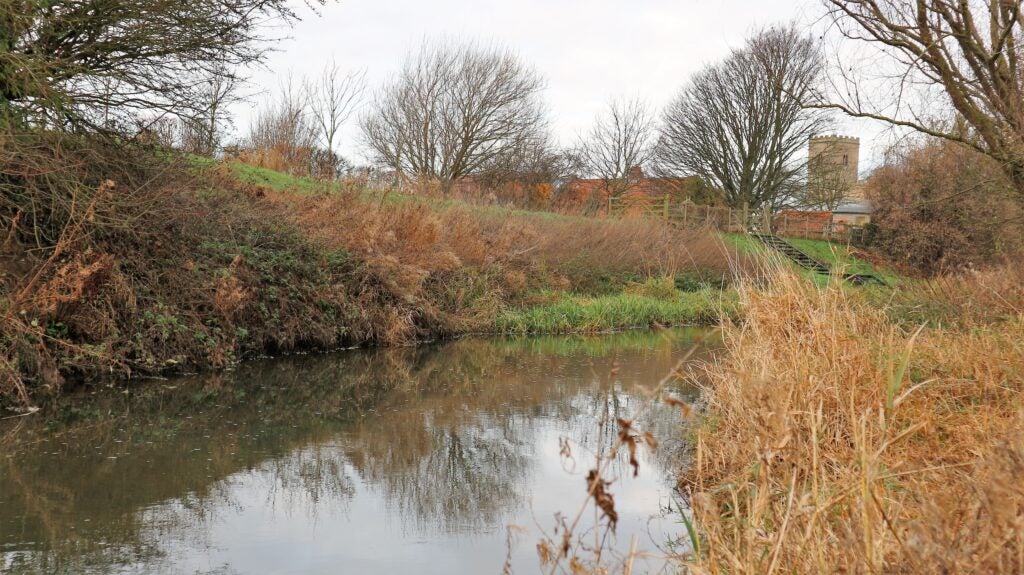
Recent discussions, regarding tiny running water venues on the Fishing Magic forums, reminded me that I’ve always been interested in such places. I first got the bug for fishing small rivers and streams when I was a kid, mainly because you never knew what might be in them. I used to visit relatives in the West Country and loved exploring the tiny River Frome that meandered through fields nearby. I discovered a narrow stream that ran off this river and the only way to fish it was to take the middle section off my already quite short three-piece split cane rod. I then stuffed some paper into the ferrule in the butt piece, so the top section would fit. Trotting a mini float I caught some cracking roach. Later, when I got into club fishing, we used to have outings on a small tributary at Eaton Wick that ran into the Thames. It was stuffed with dace and provided great sport. This is another small Midlands river where I currently enjoy similar dace fishing.
BACK ON THE CASE
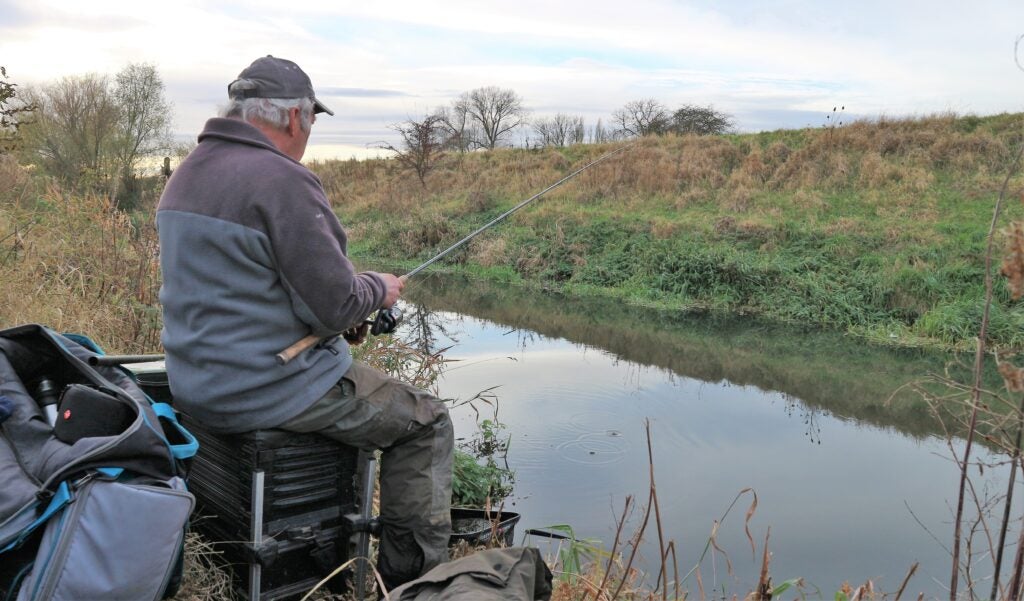
The upper River Witham is just up the road from where I now live. In some places you can jump across it and even in the slightly wider glides the depth is minimal. It took me a while to get to know this place and how to approach it. As is normal for just about everywhere I go, local anglers told me the venue used to be brilliant years ago, but has declined. I quickly found out it isn’t stuffed with fish, but if you do a bit of work, they are there to be caught. Location is important because there are some areas where it’s a proper struggle to get a bite, but in other spots swims will come to life with clever feeding. I’ve learnt not to dive in straight away with rigs, but to sit there patiently loose feeding with maggots or casters for a while. The fish are very skittish in such shallow water, so you need to get them feeding confidently, otherwise a quick flurry of action kills swims stone dead. I’ve had to revert to small floats, a bit like those I used as a kid.
LIGHTENING THE LOAD
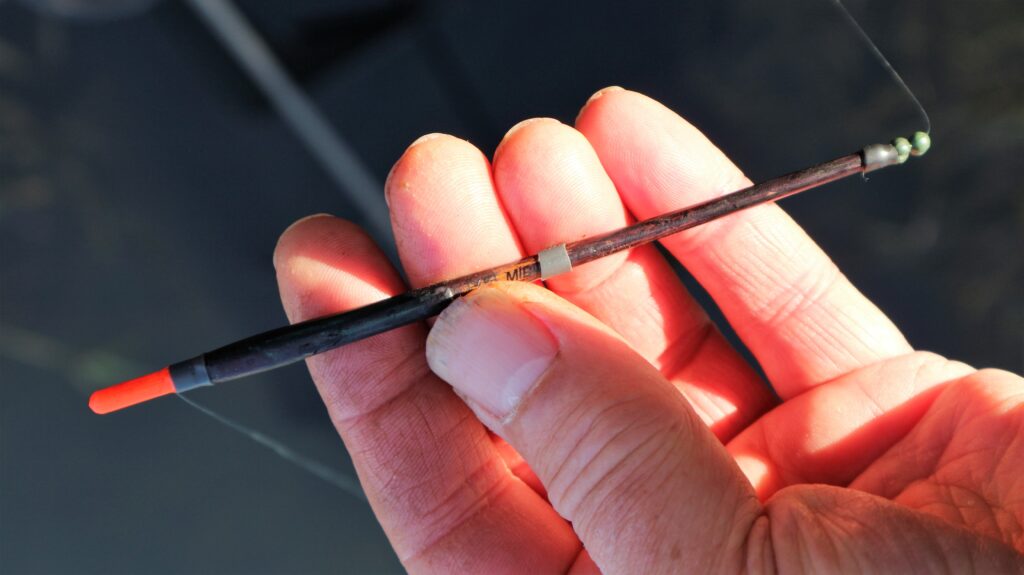
With inches rather than feet to play with depth-wise, I modified some small stick floats to take even less shot. I did this by cutting the top part of their bodies down, leaving their heavy cane stems alone. At the same time, I glued on bright hollow plastic sight tips, because standard painted balsa ones were hard to see when long trotting. I discovered translucent tips remain highly visible, particularly when running tackle down long glides into dark water with lots of cover. I ended up with several mini stick floats, but they still carried more weight than I really needed. My solution was to position a couple of number 4 or 6 shot directly underneath the float, leaving just enough capacity left to spread out a couple of number 8 Stotz weights. This set-up allowed me to set the float slightly over-depth and run it through on a tight line, so the hook bait ran down in front of it. That extra weight under the float made tight control much easier.
TIDDLER BASHING
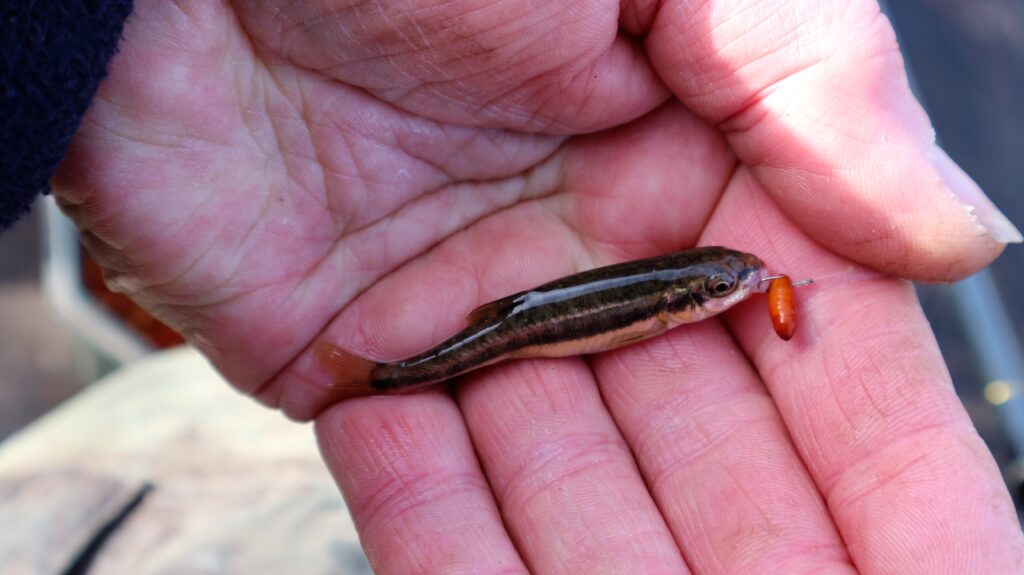
Minnows can be a pain on small rivers and streams, where they normally thrive. It can help to get through them by using bigger baits, but that means bypassing species like dace, which I always enjoy catching. I also think if you can get dace active in your swim, it increases the chances of eventually pulling in much bigger chub. I did try hemp and tares by the way, but that combination didn’t work. My solution was to try and feed off, or work my way through the minnows. They usually fade away once you get something bigger chasing after your loose feed. Another trick I’ve learnt on my local small river is to pick swims with long glides, preferably running into bends or areas with lots of bankside cover. That’s where the bigger fish are likely to be and by feeding them up to you, rather than dumping tackle right over their heads, a lot more end up being caught. It takes a lot of patience, but sport lasts longer once it gets going.
SILVER MEMORIES
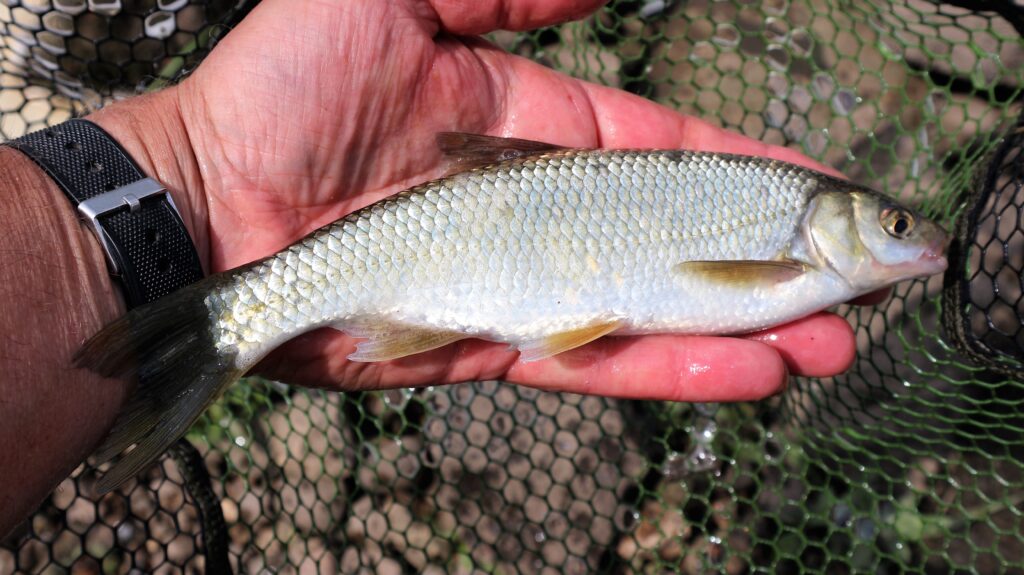
I once caught a fabulous pound-plus dace from the River Thames, when it used to hold a big head of these fish throughout the middle and tidal reaches. This species was so prolific, it was the mainstay of many match catches. Big double figure weights were possible. It was busy fishing that I hugely enjoyed, and the same applied when targeting these fish on much smaller waters. The River Stort at Roydon, near the railway station, was a favourite haunt of mine. In some areas it was only a few inches deep, but somehow I managed to magic out lots of fish. I also remember a small tributary of the upper Thames, a tiny stream I used to explore, somewhere near Lechlade I think. I had to make up special 3 inch long all-balsa floats to cope with the shallow runs, catching loads of plump dace from narrow gullies you could easily step across. The water was gin-clear and I even caught a small barbel from there during one hectic, memorable session.
CURRENT TIMES
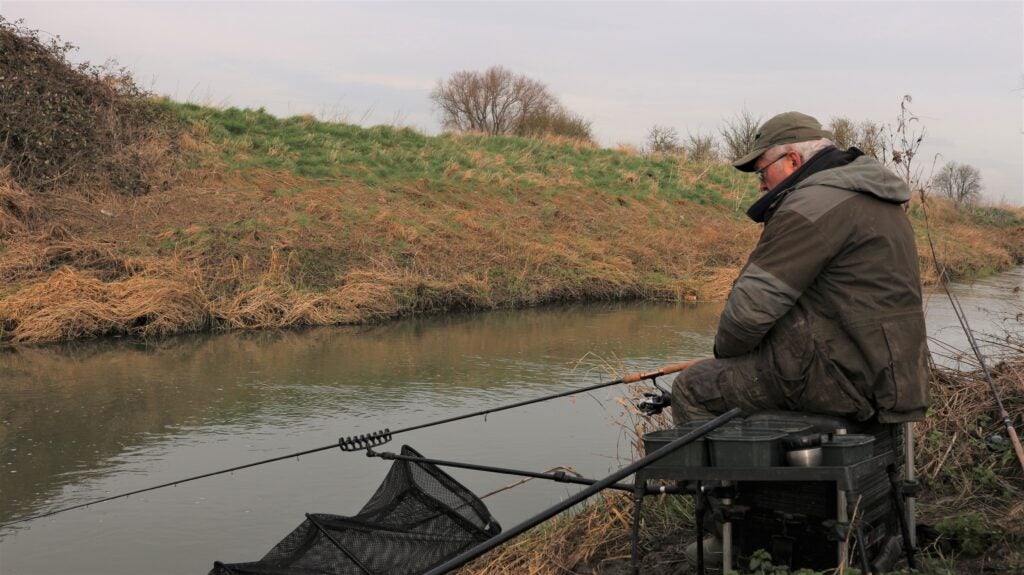
Back to recent times and exploring more of the Witham. Local rumour has it that this small river used to hold some double-figure barbel, but I’ve not seen or heard of any being caught since living in the area. Apparently, there were lots of good-sized bream resident in the bends and narrows below the ford at Foston, about the most unlikely looking area for this species you could imagine. But sadly, I’m told a pollution in the late nineties wiped these fish out. However, the same area now seems to have bounced back with plenty of dace, chub and grayling. Something I’ve learnt that works a treat when you can’t get bites on float tackle, is to work a small bomb rig down a swim. A stationary bait often brings savage takes. Another good thing about fishing below a ford, is when traffic passes through it and clouds up the water. This washes downstream for several hundred yards and tends to stir the fish into feeding every time it occurs.
CRAZY CREATURES
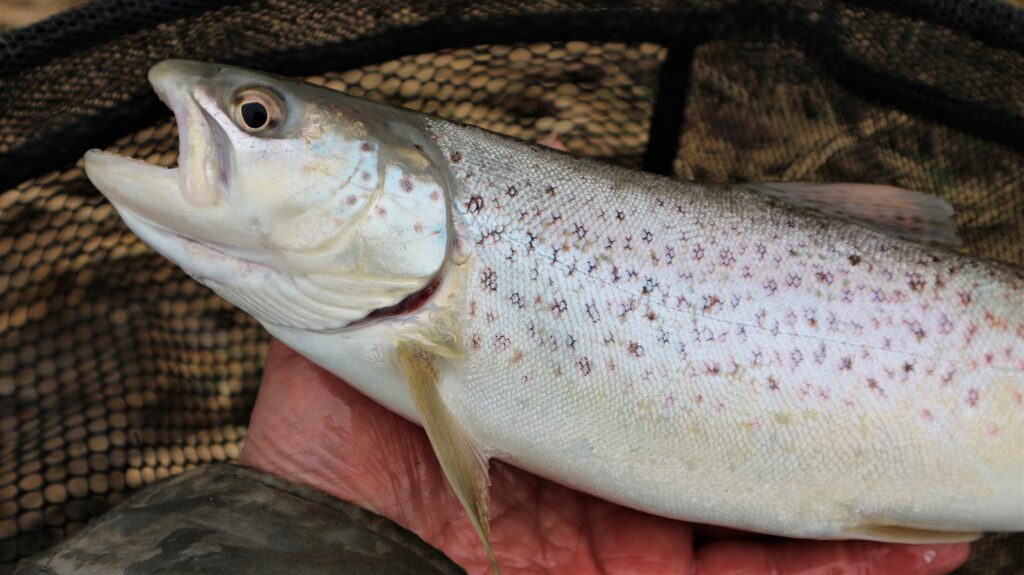
One thing there is no shortage of in the Witham are trout. They are everywhere, from super-charged pound fish, up to several times that size. They are impossible to control swim-wreckers, which when hooked shoot about all over the place, often going airborne. I remember one crazy session when trout kept interrupting what was turning into a brilliant day catching dace. I must have put back over 20lbs of spotted fish, feeling sorry for a fly angler working the far bank at the tail end of my swim. He looked like he knew what he was doing but never caught a thing, while my float was trotting down close by and kept going under. I wondered if they do a trout fly that looks like a single caster? I’ve nothing against trout, but they can make me feel a bit ratty after carefully building a swim, only to go and hook one that decides to disturb every inch of a long run that was developing nicely. I’ve even experienced a big trout somersaulting over a weir.
NO COMPARISON
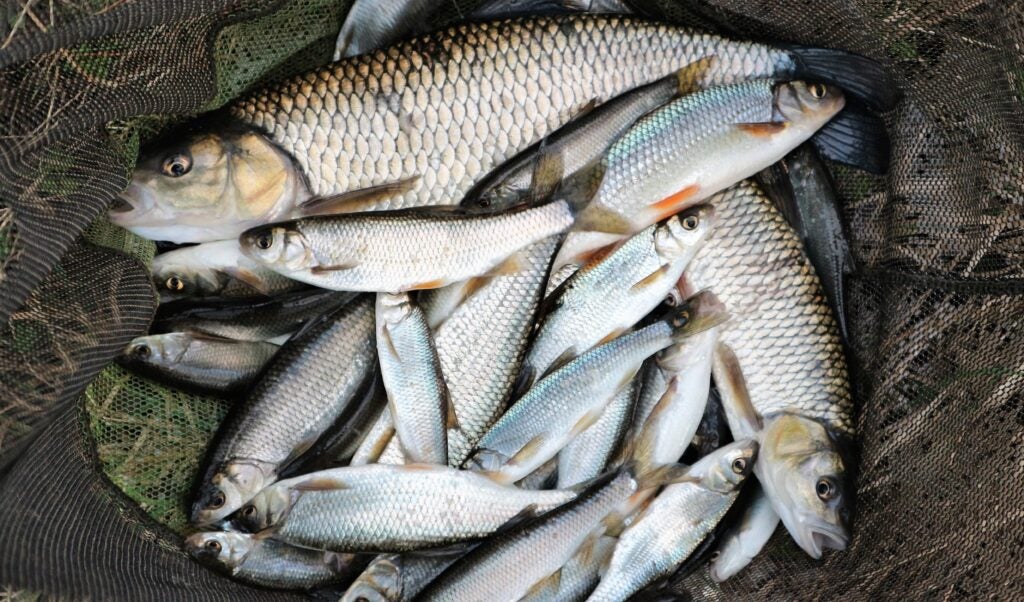
I class this as a great catch from a small river or stream, where a 12ft float rod was almost too long for the job and a mini stick float set 18 inches above a size 18 hook, was a tad over-depth. To me this is the equivalent of catching over a ton of fish from a commercial, only better and more interesting. All I fed was a small tin of cooked hemp and not quite a pint of casters. I didn’t even try a maggot because the glide I caught these fish from was heaving with minnows. I had to use dark casters to try and avoid them. Several lively trout got in on the act, with a couple close to 4lbs. One roach turned up and the couple of bonus chub were latecomers, as is usual for this type of fishing. This catch came from a stretch that has a bit more cover than most, which I suspect is why it holds more dace. They probably feel safer from predators. It’s not all like this, there are many swims out in the open fields where you are lucky to see just one of these fish.
ALL ALONE
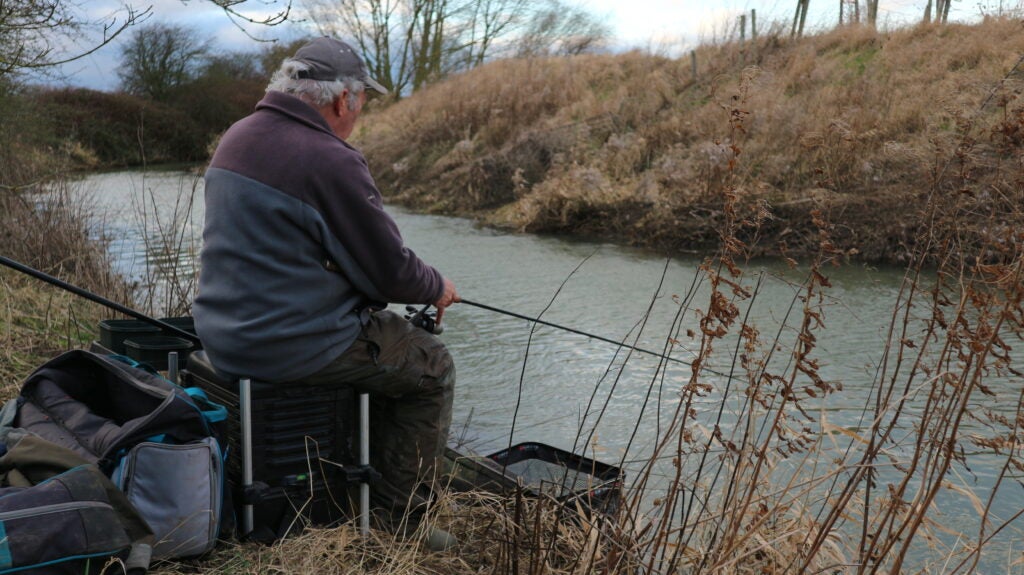
I hardly see a soul when out exploring small running water venues, apart from the odd dog walker. Parking can be a problem on many out of the way stretches, requiring some long hikes. I’ve thought about travelling light, but still tend to use a trolley that gets overladen with gear when I start to think about all the possibilities this type of fishing can offer. I rarely move once settled anyway, preferring to make something happen from my first-choice swim, even if it takes a long time. That’s the great thing about flowing water, keep the feed going in and eventually something will move up to it. I’ve lost count of the occasions when small river glides have come to life after several hours of running a float through. I think a hook bait constantly drifting past the snout of the wariest of big chub often irks them enough to eventually engulf it, while in other cases a shoal of big fish simply moves in. Occasionally catapulting bait well down swims can help this.
WELCOME SURPRISES
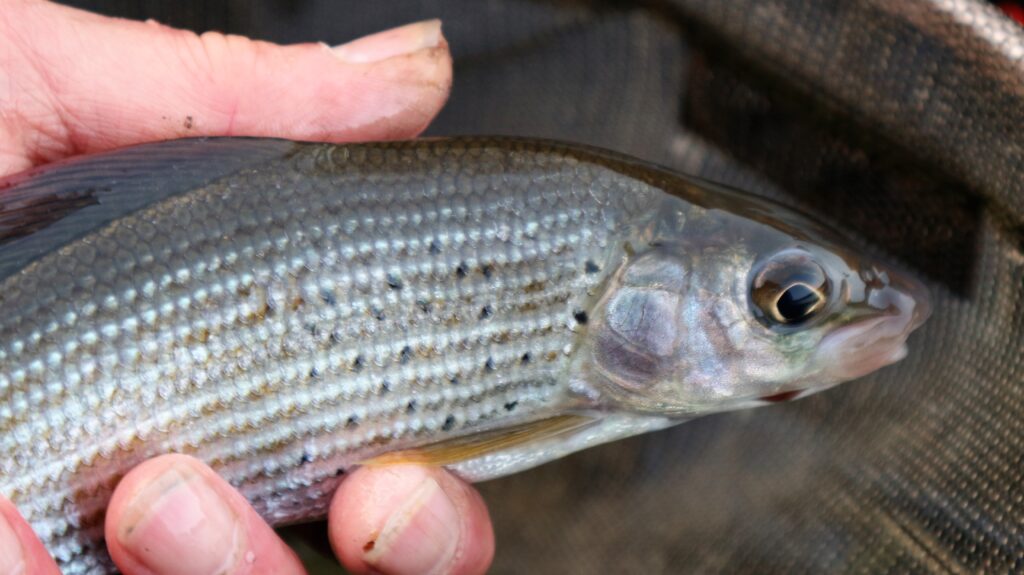
Grayling often inhabit small flowing watercourses. You normally know when one of these gets attached, due to that unusual wriggling fight they produce in fast flowing water, particularly when hooked at distance. I’ve caught a few over 2lbs in bigger rivers like the Kennet and Itchen, but a one-pounder is a good fish from the less wide places I fish now. Lots of small ones are appearing, which is nice for the future. I don’t know why, but I haven’t seen a perch yet from the upper reaches of the Witham, yet lower down where it joins the Fossdyke Canal and various Lincolnshire drains, big perch are common. As mentioned previously, big barbel have been caught in the past from some of the areas I fish. I haven’t heard of any since I have been frequenting the banks and worryingly, otters are now quite common. The tiny river was also heavily dredged years ago, looking more like a high-banked drain until nature put some vegetation back.
CRAFTY CHUB
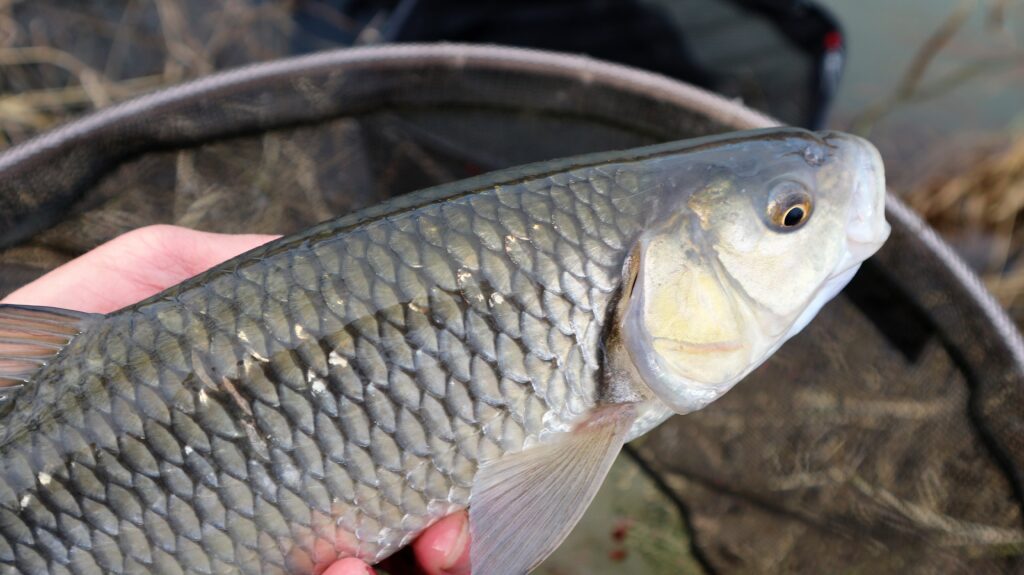
The species that makes it all worthwhile for me, after negotiating muddy fields, ditches and stiles is chub. They grow surprisingly big in tiny rivers and streams, but are also ultra-elusive, which is probably why they have survived the attentions of otters, mink, cormorants, and any other predators. These fish are like ghosts at times and I suspect they move around a lot. You might just be lucky and sit on a nest of them, while there are many outings where they are hard to find, or just don’t want to play. The best way I’ve found of catching the bigger fish is to find long straight glides that run into deeper water on heavily overgrown bends. Trees, bushes, brambles, reeds, it doesn’t matter, as long as it’s good cover. The trick then is to sit well upstream and to feed the fish up to you. A combination of hemp and casters works best for me. I use tinned hemp, because I think the rich oils it releases interests fish quicker than just casters.
RICH REWARDS
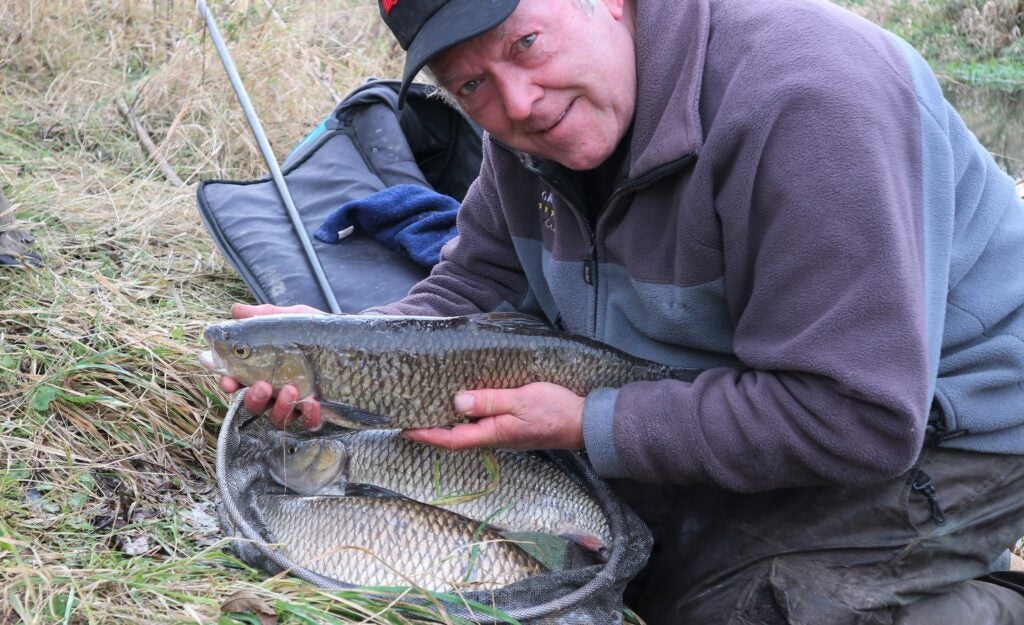
Catching fish this size from a small river, stream, brook, whatever people might call it, is a magical experience. They came from a far-off swim that was a killer to hike to over muddy fields, but well worth the effort. Depth was minimal, to the extent once the chub arrived, they were bow-waving the surface as they chased around for my loose fed casters. I had to fish on the light side to fool them, using a small hook tied to low diameter line. It was hairy playing these lumps on that kind of tackle in fast-flowing water, but a soft, through-actioned float rod helped a lot. I used a buoyant reel line and one of my mini stick floats, the latter working brilliantly with a couple of tiny shot spread out below. Despite featuring a strong current, the bed of the glide was covered in fine weed. This meant I had to keep a tight line to the float to get the baited hook running through well in front of it to avoid snagging, with the tackle slightly over-depth. Superb fishing.
The post Small Rivers & Streams appeared first on Fish & Fly.
Lure Fishing with Robbie Northman #52 15 Feb 2022 11:41 PM (3 years ago)
My Greatest Challenge
Well here we are… blog 52! One whole year since I began documenting my weekly fishing. To say it’s been a challenge would almost be an understatement. But a challenge I’ve enjoyed throughout. More so than ever I’ve focused on consistency, to catch week in and week out across a multitude of species and venues. Through my efforts I’ve reaped many rewards, understanding lure fishing better than I have ever before. So today I’m going to look back at some of my favourite captures and moments from the past fifty-two weeks. What better way to start than with a brand new special moment, and undoubtedly my greatest catch of 2022?
It was a day like many others this winter. Cold, overcast, breezy, colour muted in dull winter light, and winter chills that cut like a knife. Twenty minutes on the jig, followed by ten minutes regaining movement in the hands. That kind of day! Cast, jig, cast, jig, move, repeat. An endless cycle of perseverance in the elements. But, lure addicts like me endure, itching for the excitement and adrenalin of that hit. And very often it’s only that one hit, when targeting the biggest fish of all.
Hours had passed with no action, moving into yet another spot to continue my search, casting far and grinding my Reaction Crayfish along the bottom. Drag and pause, I found resistance in uneven bottom and felt my lure through the debris. A faint tap, strike, I was in! I immediately knew that this was big! Rod bent double, tight drag failing to contain the deep lunges, what had I hooked? This wasn’t running like a pike, yet felt too heavy to be a perch. I became more nervous with every thumping lunge that flexed the entire Ultralight rod. Denial wore off with the next set of knee-weakening runs, as the fish began to flank towards cover.
This felt like a perch! I steered the fish towards me as it began to tire, my suspicion soon to be confirmed… Moments later it broke the surface, a behemoth! A giant! I lost my freaking mind! This was surely a PB, a high 4, maybe bigger, I couldn’t tell in the excitement as I scrambled for the net. Agonising moments passed as I inched the lightly hooked fish along the surface toward my waiting net, fearful of the slightest mistake. One well-timed scoop and she was in.
I set my eyes upon the biggest framed perch I’d ever caught. A true nomadic old giant. By proportion alone she should have been a PB, but her old frame didn’t carry quite the weight of a younger fish, turning the scales to a whopping 4lb 1oz. Up there amongst some of my biggest river perch. I released her strong and fit, hopeful she passes on those amazing genetics in just another month or so.
It’s quite fitting that I follow up that amazing river perch with another, caught just a few weeks into my writing journey. This catch also blew me away. Being my first 4 from that river system and setting a new PB. It was the day of the jacks, with many a small pike hammering the lures. The sun broke through, inspiring me to try one of the new Savage Gear 10cm Craft Shads in an amber motor oil. A choice which paid off when I hooked into a powerful fish. Believing it to be another pike, I played it without much caution, receiving a fright when a huge flank broke the surface. To this day I consider this one to be one of the most beautiful perch I’ve caught, both big and immaculate.
Weeks later I began my trout campaign. My aim to catch my biggest ever wild brown from Norfolk chalk. This search led me to places seldom fished, searching vast areas of river with streamers. Small browns and wintered stockies made regular appearances when finally, I connected with something special. A fish that ran onto backing and through two root systems, leading me on one amazing pursuit. Strong line and perseverance, I freed the fish, eventually netting an amazing prize. A Norfolk chalk stream wild brown trout over 4lbs.
As the weather began to warm and a new species crossed my mind… bass. Although May’s lingering algae bloom left the Anglian coast looking like a muddy stew, I couldn’t resist the temptation. Waiting for the perfect weather front I set out in search of my first bass of the year. The water clarity filled me with doubt, but despite the odds we found fish. I soon banked a schoolie. Although, content with one I was soon rewarded when a different league of fish smashed the lure. The Summer proved tough, with good numbers but few big ones. The season ended with the biggest being the second fish of the year.
Bass blues were soon broken up by summer chub, and a campaign to catch a whopper. I spent hours walking and watching a very low stock river, when finally, I spotted two mammoth fish. Making a well-placed cast with a crank bait I soon hooked up, losing the fish mere seconds into the fight. However, I was granted a second chance on my return. Wobbling a goby crank along the surface, a mammoth chub emerged, engulfing the lure. An incredible fish, a summer mid-6 with a two-tone colouration.
There are many moments I’d love to share and not enough words. But one truly special memory is one spent with friends. My PB chub with a happily smiling trio. John Bailey, Enoka and I.
From sessions with Ben, Andy and Ieva and so many more, to visiting friends like Joe from the USA. Friends really do make the most enriched fishing situations.
Making new ones on the set of Mortimer and Whitehouse was certainly a special moment.
I of course have to give thanks to Savage Gear, Lowrance and Fishing Magic for helping me achieve my angling dreams.
And a special thanks to my readers too. I look forward to covering the next 52 weeks of fishing and wish you a rewarding year ahead.
The post Lure Fishing with Robbie Northman #52 appeared first on Fish & Fly.

